



WOMEN OF INFLUENCE
PROFILES OF 10 WOMEN, INCLUDING FIVE WHO HELPED LEAD RELIEF AND FUNDRAISING EFFORTS ON MAUI P. 31










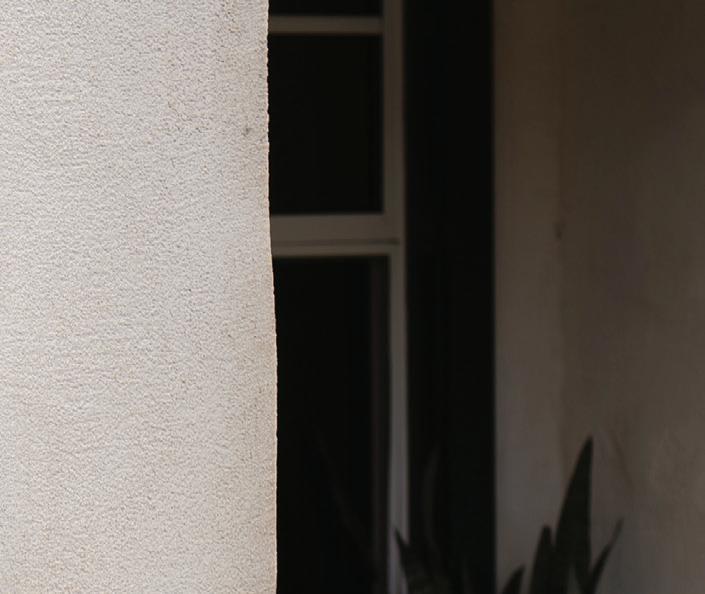


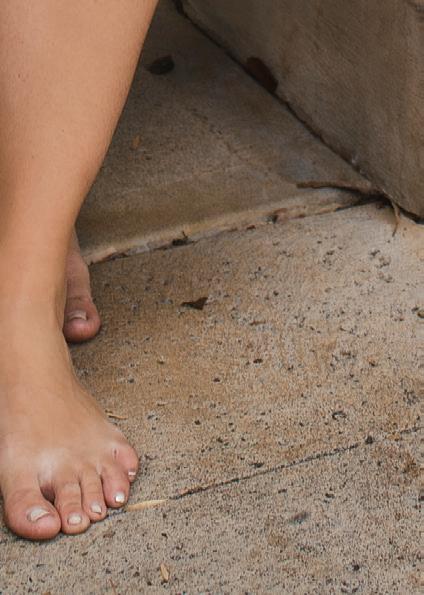
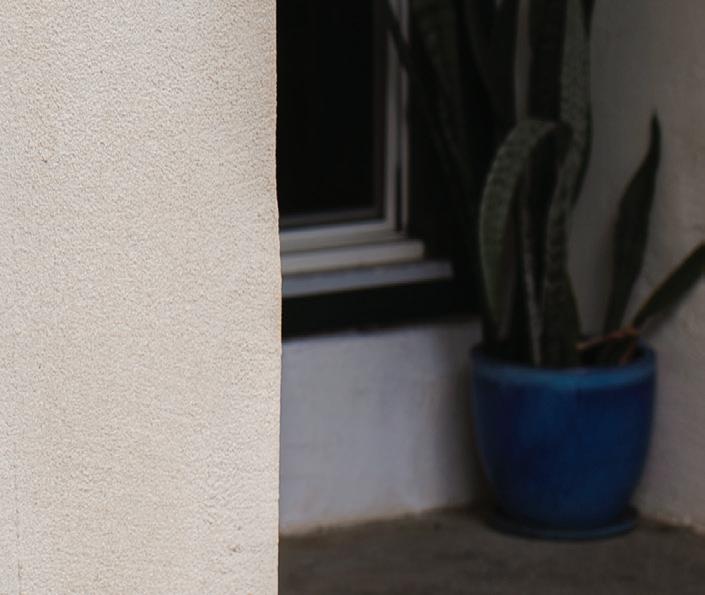



LOCALLY OWNED, LOCALLY COMMITTED SINCE 1955 USING ARTIFICIAL INTELLIGENCE IN HAWAI‘I P. 57 HAWAIIBUSINESS.COM
Kaimana Brummel of Makawao







The #1 hospital in Hawai‘i now provides comprehensive care for children.
FIND A PEDIATRICIAN NEAR YOU AT QUEENS.ORG/KEIKI











WELL-BABY VISITS
WELL-CHILD VISITS
SCHOOL PHYSICALS
SICK VISITS







COVID VACCINATIONS
NEONATAL CARE
EMERGENCY SERVICES
TELEHEALTH APPOINTMENTS
We ’ ve got your keiki covered!
























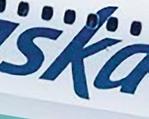





















A MAMMOGRAM today can add more tomorrows to your FUTURE.

Regular screening mammograms help detect breast cancer early, when it’s more easily treatable. That’s why it’s recommended all women get a mammogram every year starting at age 40, or younger if there’s a history of breast cancer in your family.
Mammogram appointments are available at our Hawai‘i Pacific Health medical centers and clinics in ‘Aiea, Hawai‘i Kai, Honolulu, Kāne‘ohe and Mililani on O‘ahu and in Līhu‘e on Kaua‘i. Schedule your mammogram in October at one of our medical centers or clinics and receive a special gift while supplies last.
We make it easy with online scheduling at HawaiiPacificHealth.org/Mammogram .

EVERY EMPLOYEE DESERVES TO...
SMILE MORE
Our team at Hawaii Dental Service (HDS) understands the challenges of choosing the right dental plan based on your employee’s overall health habits and circumstances. We tailor our plans so you can have healthier, smiling employees who can count on our local
customer service team to find a dentist or specialist, help them understand their benefits, and navigate care.
It’s how we help all our members brush o the stress of dental care so they can Live Well, Smile More.












To learn more about our dental plans, visit HawaiiDentalService.com


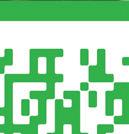



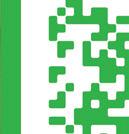
























“ ”
I have seen the future of education, and it's happening right now at Mid-Pacific.


– Dr. Tony Wagner Harvard University Innovation Lab Expert-in-Residence Senior Researcher at the Learning Policy Institute Co-Author of Most Likely to Succeed
Mid-Pacific is a recognized education leader in Hawai'i with a reputation for creativity, innovation, and proven learning outcomes.
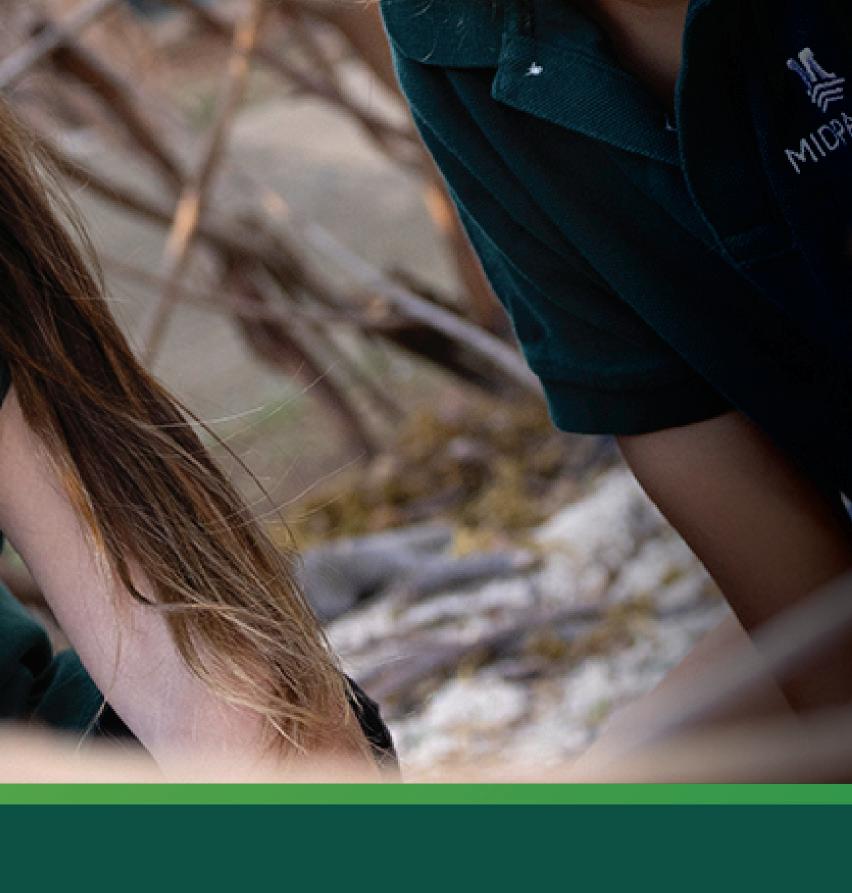

www.midpac.edu | (808) 973-5005
|
admissions@midpac.edu
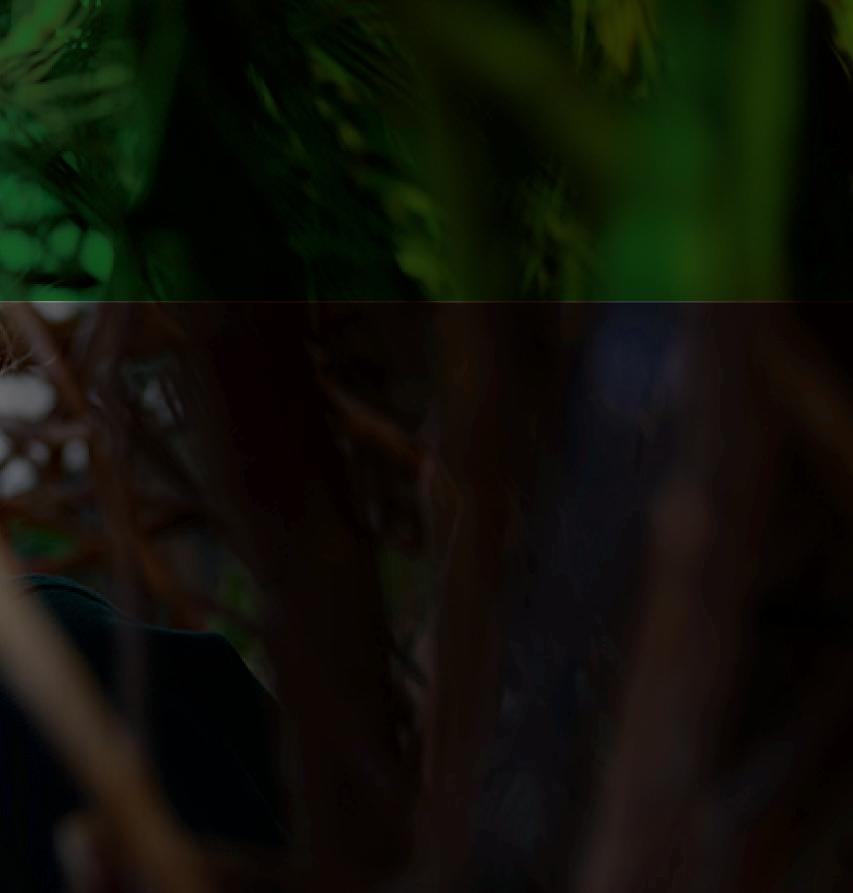
Our graduates attend the most prestigious colleges and universities in the world, including Princeton University, The Juilliard School, Rice University, California Institute of Technology, Stanford University, Brown University, Cornell University, New York University, John Hopkins University, University of California, Berkeley, and more.


Accepting applications for 202 3 – 2024













HONORING WOMEN WHO MAKE WAVES. They think big and inspire. They are change agents. Sixty-five percent of our leadership positions are held by women. And they make waves for our clients every day. Gold Sponsor of the 2023 Wahine Forum 808.544.3000 • ANTHOLOGYGROUP.COM






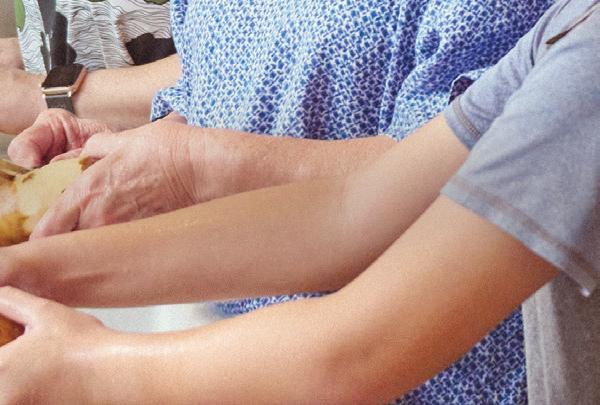


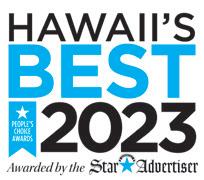




Hawai‘i, caring for you is our kuleana.
Dear
We’re UHA Health Insurance. Join us. Learn more about UHA at: uhahealth.com As a health insurer born of this community, we see the beauty of malama – caring deeply.
FEATURES
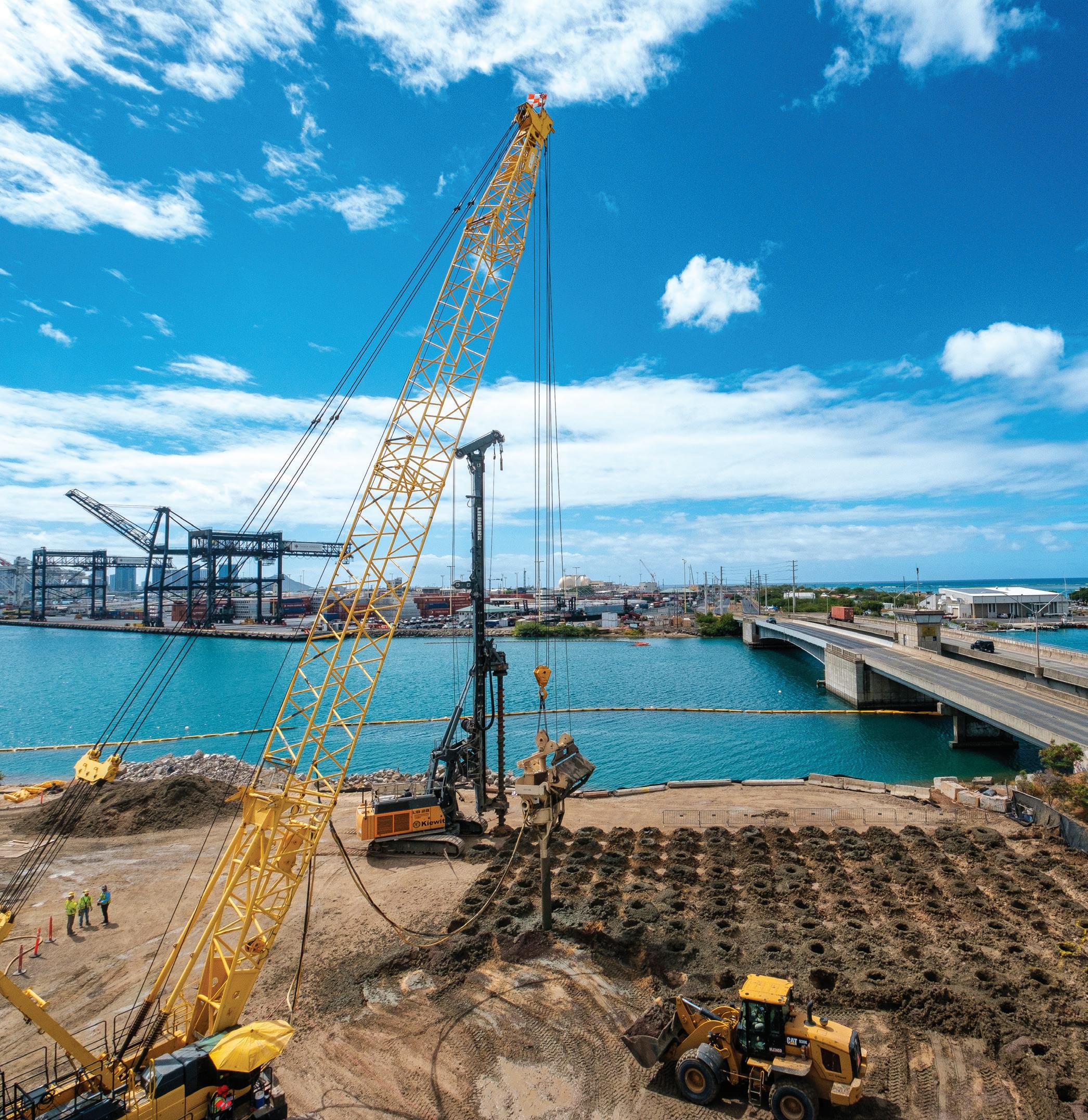
31
Profiling 10 of Hawai‘i’s Women of Influence
Five are on Maui helping with the relief efforts, four lead large local organizations and one is a Wai‘anae wahine helping the houseless.
50
Honolulu Harbor Isn’t Climate-Change Ready
But the new Kapālama Container Terminal is the first step in an ambitious plan to create a more resilient port and cope with a rising ocean.
57
Artificial Intelligence Is Already Shaping Hawai‘i
Five local experts describe how AI provides useful information that guides better decisionmaking today. They also offer practical applications for all of us.
72
New Affordable-Housing Complex Was Fire Victim
Kaiāulu o Kupuohi, which housed 89 families in Lahaina beginning in December, was severely damaged by the fires. The developer hopes to rebuild.
The new Kapālama Container Terminal doubles the space available for Pasha’s Hawaii cargo operations.
10 OCTOBER 2023 PHOTO BY AARON YOSHINO
10.23


12 OCTOBER 2023 HAWAII BUSINESS (ISSN 0440-5056) IS PUBLISHED 10 TIMES A YEAR BY PACIFICBASIN COMMUNICATIONS. ©2023 PACIFICBASIN COMMUNICATIONS, LLC. ALL RIGH TS RESERVED. ANY UNAUTHORIZED COPYING, DISTRIBUTION, OR ADAPTATION IS STRICTLY PROHIBITED AND WILL RESULT IN LIABILITY OF UP TO $100,000. EDITORIAL, ADVERTIS ING AND BUSINESS OFFICES AT 1088 BISHOP STREET, SUITE LL2, HONOLULU, HI 96813. TELEPHONE (808) 534-7520. POSTMASTER: SEND ALL ADDRESS CHANGES TO HAWAII BUSINESS , P.O. BOX 913, HONOLULU, HI 96808. SUBSCRIBERS NOTIFY THE SAME OFFICE. PLEASE INCLUDE NEW ADDRESS AND OLD ADDRESS (MAILING LABEL PREFERRED) PERIODICALS POSTAGE PAID AT HONOLULU, HAWAI‘I, AND AT ADDI TIONAL MAILING OFFICES. SUBSCRIPTION: ONE YEAR $24.99 / TWO YEARS $34.99 / THREE YEARS $44.99. FOREIGN: ONE YEAR $53.99 (US FUNDS). FOR SUBSCRIPTION INQUIRIES, ADDITIONAL RAT ES, INFORMATION, NOTIFICATION OF CHANGE OF ADDRESS AND SUBSCRIPTION SERVICE, PLEASE CALL (800) 788-4230. OCTOBER 2023 VOL. 69/NO.4 CONTENTS 10.23 PHOTO: AARON YOSHINO 20 Hawaii Business Reported on Hawai‘i’s Wildfire Crisis Last Year Editor Steve Petranik discusses the power of the press to inform and the limits on that power. 14 Our Longest-in-the-Nation Life Expectancy is Not All-Inclusive A brief look at vital health statistics in the Islands, including the Native Hawaiian lifespan gap. 18 How Businesses Can Rebuild HR Operations After Disasters A step by step guide from the Hawaii Employers Council. 22 He Renews Family Heirlooms Ki-Lin Reece repairs and restores damaged or worn instruments, many of them rare or in families for generations. Celebrating Professional Women Read about some of Hawai‘i’s remarkable wāhine in business. 48 SPECIAL ADVERTISING SECTIONS You Need a Plan When It’s Time to Leave the Family Business Jean Santos offers a roadmap to making it happen the right way. 24 Servco’s Leaders Describe How They Planned Their Succession Mark Fukunaga and Rick Ching say it is a two- or three-year process for any changes. 25 You Want Growth and Better Customer Service? Invest in EX EX is employee experience and doing it right is crucial to your company’s success, says Tiffani Bova, but most companies just give it lip service. 26 Focus of Family Hui Hawaii is Helping Parents Succeed The nonprofit nurtures small groups of families, with adults and keiki interacting and supporting each other. 28 She Makes Jewelry Flowers With 2,200 Degrees of Heat Arlie Pemberton’s glass jewelry is inspired by flowers of the Islands and elegant lei. 74 ON THE COVER Photo by Kiana Liu
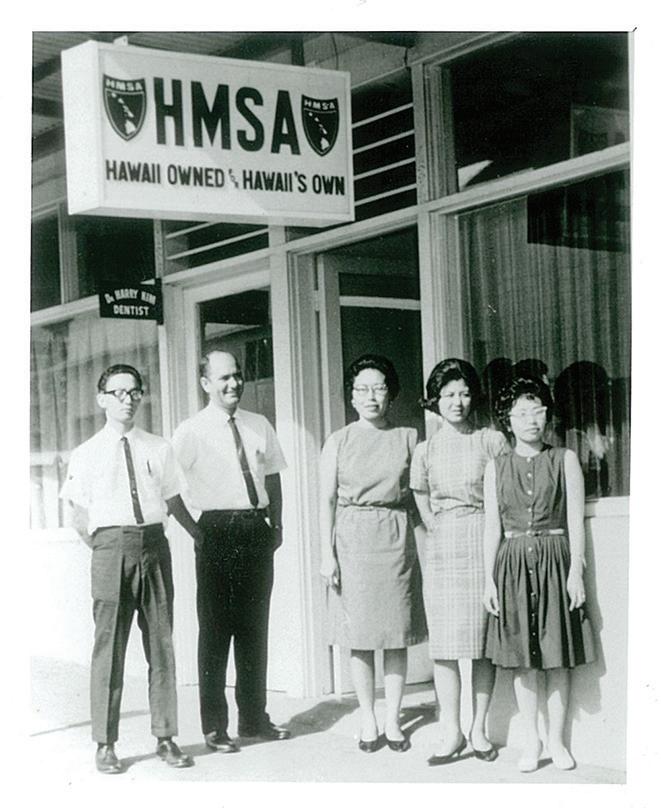
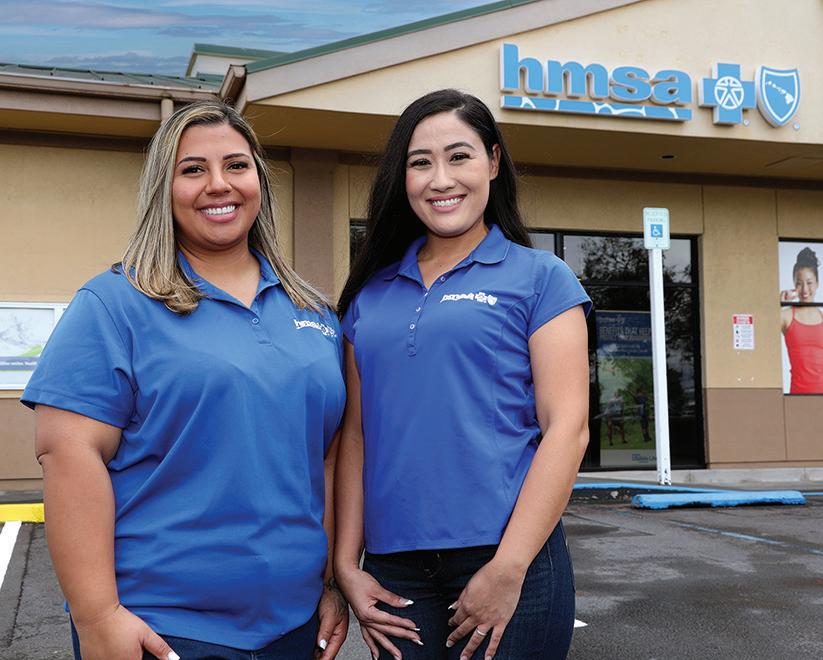
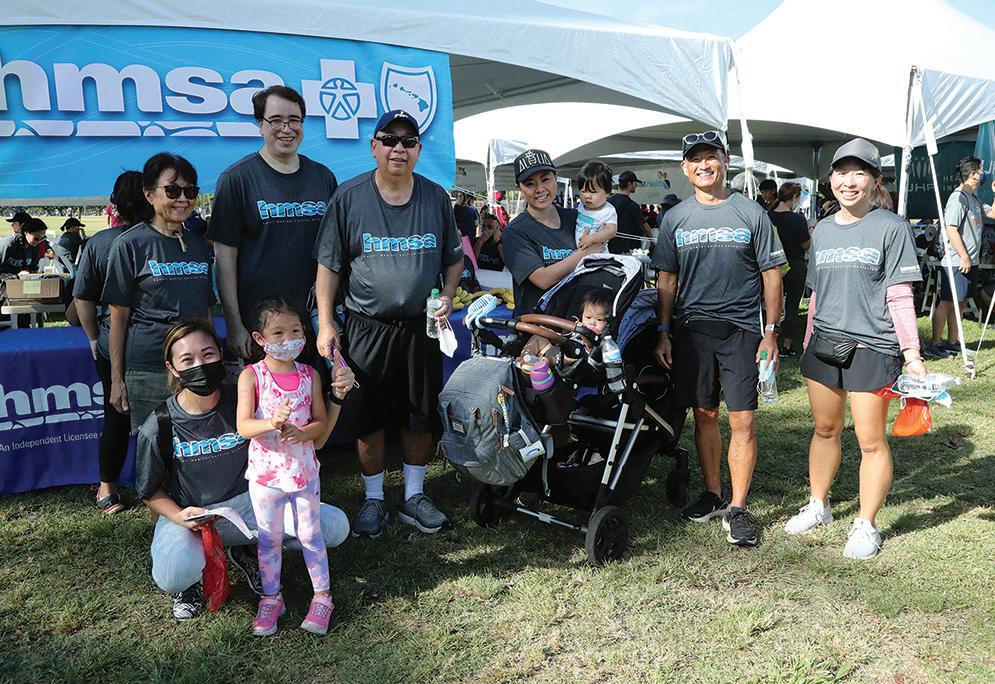
You Think You Know How to Fix It, but Do You Really Want that Job?
MANAGING EDITOR CYNTHIA
WESSENDORF’S
REPORT on
the growing danger of wildfires in Hawai‘i ran in the November 2022 issue of Hawaii Business Magazine and online at hawaiibusiness.com –nine months before Lahaina burned.
After the Maui fires, a dozen local, national and international media published “Why the Fires Happened” stories that repeated much of the same information that Cynthia reported last fall and quoted the same or similar sources.
We had the story beforehand, as we have so many times in the past on various issues. That’s part of our job: to report on important subjects before they get on the general public’s radar. We collect the facts and report on vital issues in clear and compelling language, then spread the stories to as many readers as possible.
But that’s where our power ends. Like other factbased news media, we help provide information for the public conversation, but we don’t make the decisions.
More than a few people lamented to me after the Lahaina tragedy, if only “they” had acted on your wildfires story, with “they” being government leaders. Yes, if only.
POLITICAL LIFE IS BRUTAL
Have you ever thought about joining “they” – about running for public o ce? About having power to do something about wildfires before they killed more than a hundred people? Or helping decide on a hundred other issues?
If you care about Hawai‘i and its people, and follow the news, you have probably thought about standing for election or maybe simply accepting an appointment to a public board. You think that with the power you acquire, maybe you can make things better.
Most people do not run for public o ce, and I admire the courage of the few who do, whatever their motives or policies. I think courage is the number one attribute required for public o ce today, because however many supporters and admirers you have, you will also have enemies and haters who will question your motives and attack your decisions relentlessly.
In the 20th century, politicians only had to deal with public criticism in legislative assemblies, the news media and town halls. In the 21st century, social media means criticism is everywhere, all the time and without restraint. Truth and lies are present in about equal measures, but restraint seems entirely absent.
The families of politicians are no longer out of
bounds. Death threats are commonplace. Simple disagreement about policy is no longer enough; your opponents are disgraceful and evil.
You must have a lot of courage to enter that political ecosystem. Not all prove worthy of the voters’ trust, but they do have moxie and fortitude.
HE TOOK THE TOUGHER JOB
I have considered running for public o ce because I think that 37 years of reporting on local news has given me a good perspective on people’s needs here and how to make the system work better. But I retreat from taking that leap for many reasons.
One, I am not that selfless. My current job requires long hours and di cult decisions; I cannot imagine facing the even longer hours and even more di cult decisions that politicians face.
As a reporter and editor for more than four decades, my job has been to listen to di erent perspectives and tell my readers the essence of what I learned. Only in this column do I get to express my opinions.
I’m not allowed to have tunnel vision and focus only on wildfires or housing or education – and neither are politicians. I have reported continually on Hawai‘i’s problems and have o ered possible solutions but never had to choose whether to spend a million in taxpayer dollars on one problem with little left for another problem.
A few people have made the leap from local news media to elected o ce, with Rick Blangiardi being the most prominent recent example. I admire him for taking that leap.
I moderated an event about homelessness in Hawai‘i back when Rick was still running Hawaii News Now; he was one of the panelists. At the time, HNN was relentlessly covering the problems of homelessness and at one point I asked Rick, “What are the solutions?” He essentially replied that’s not our job.
Back then, he and I had the easier job. He decided to take the tougher job as mayor and I admire his courage and that of all the others who have chosen to take on similar responsibilities.






14 OCTOBER 2023
FROM THE EDITOR
PETRANIK
AN OPEN MIND
STEVE
EDITOR
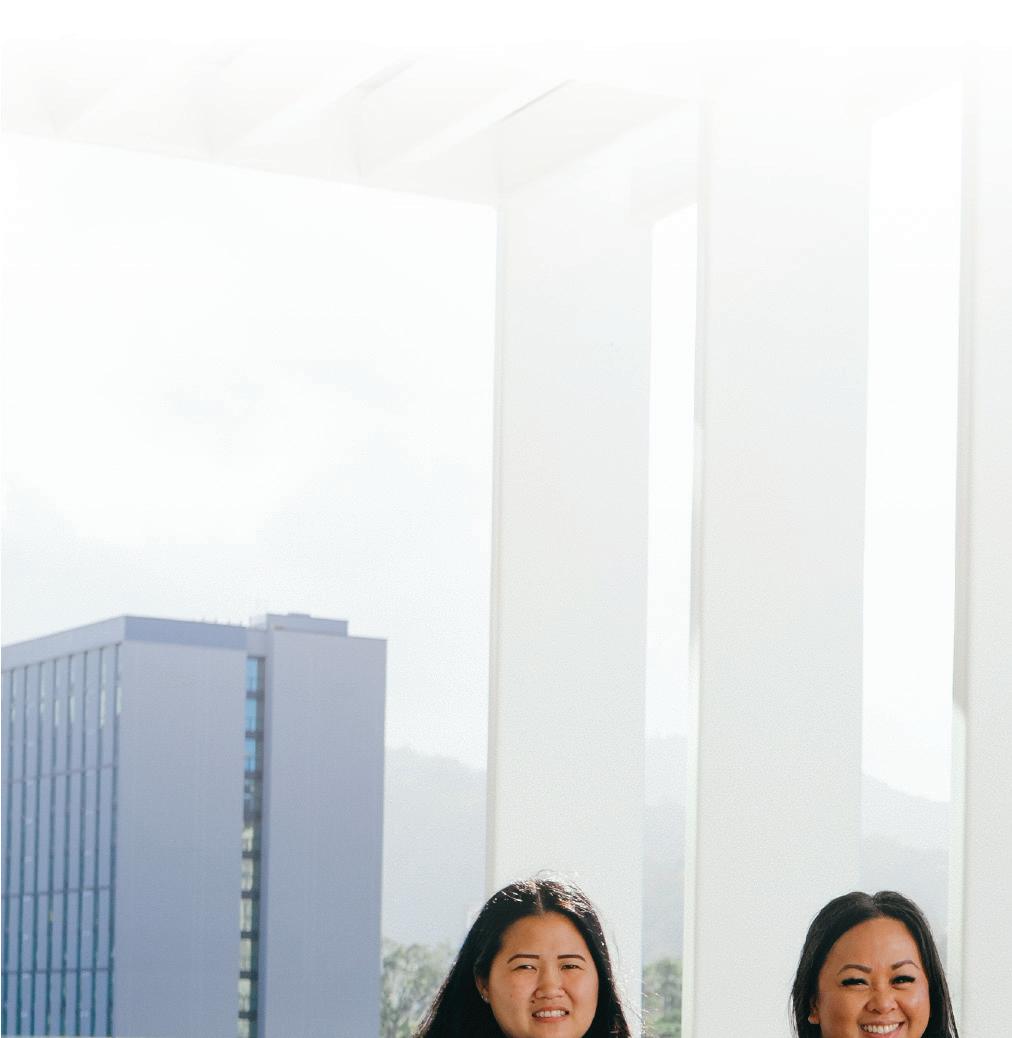

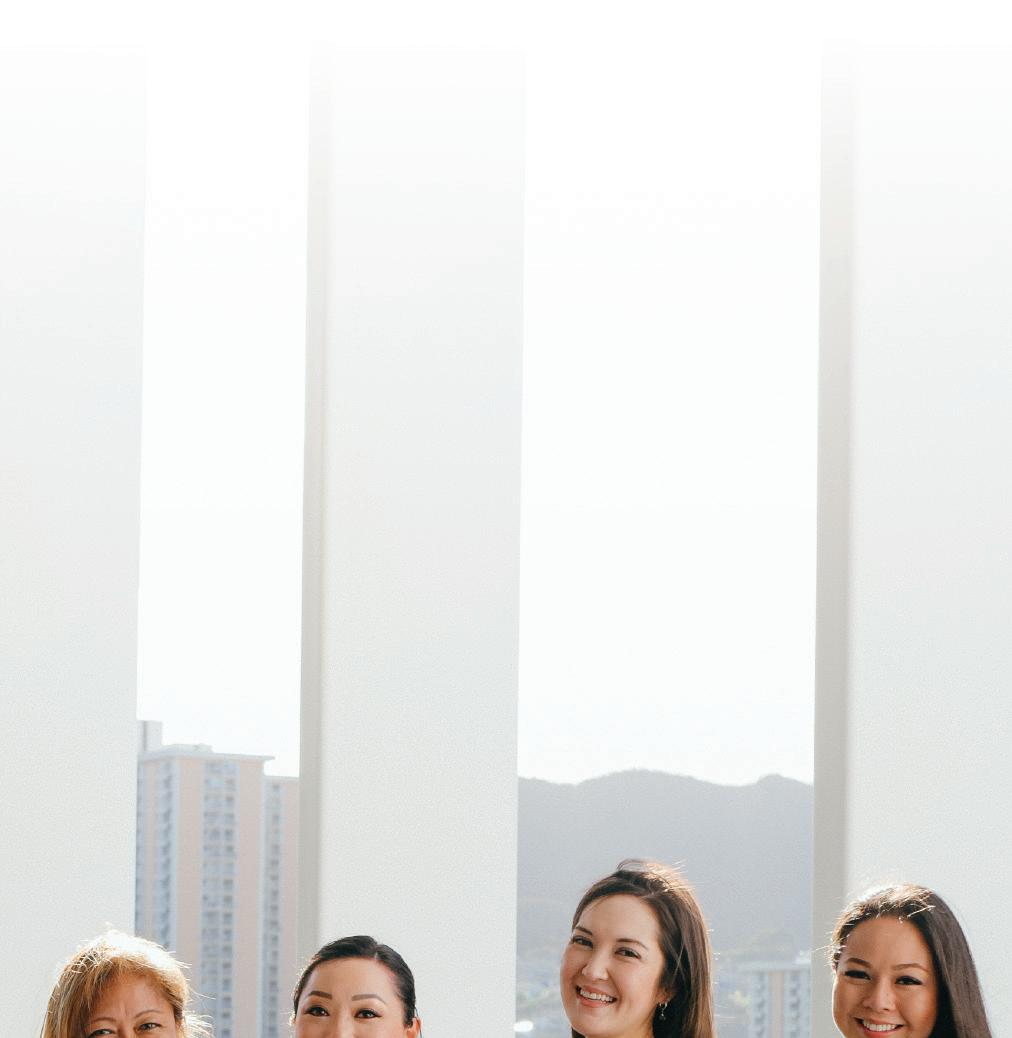

We’re Better Together.

At American Savings Bank, we believe in the power of women supporting women.
We’ve seen firsthand the amazing things women can achieve when we work together. We are proud to empower our nearly 65% wahine workforce with the right tools and opportunities to reach their highest potential.
Discover your next career opportunity and join our #ASBDreamTeam at www.asbhawaii.com/careers.
© 2023 American Savings Bank, F.S.B NMLS #423168
For more information on tickets, visit: hawaiibusiness.com/FBF23
WEDNESDAY, NOVEMBER 8, 2023 YWCA Laniākea Elizabeth Fuller Hall
Hawaii Business Magazine, in partnership with INPAC Wealth Solutions and Business Consulting Resources, presents the Family Business Forum. In this year’s forum, leaders and experts from di erent generations discuss succession planning, innovation, leadership and managing family dynamics.
For more information on events visit hawaiibusiness.com/events or contact Magdalena Durak Hershey, Events Manager, at magdalenad@hawaiibusiness.com
16 OCTOBER 2023 LOCALLY OWNED, LOCALLY COMMITTED SINCE 1955. Our goal is to strengthen the local economy and help our communities thrive. Editor & Executive Publisher STEVE PETRANIK stevep@hawaiibusiness.com • (808) 534−7584 Editorial Managing Editor CYNTHIA WESSENDORF cynthiaw@hawaiibusiness.com • (808) 534−7529 Staff Writer & Engagement Editor NOELLE FUJII-ORIDE noellef@hawaiibusiness.com Staff Writer CHAVONNIE RAMOS chavonnier@hawaiibusiness.com Copy Editor ELROY GARCIA Interns TORI DEJOURNETT, CURSTYN YOSHIMOTO Design & Photography Creative Director KELSEY IGE kelseyi@hawaiibusiness.com • (808) 534−7179 Art Director MALLORY ADAMS-NAKAMURA malloryan@hawaiibusiness.com Contributing Designer AMY LOWE Staff Photographer AARON YOSHINO Digital Digital Marketing Director JOELLE CABASA joellec@hawaiibusiness.com • (808) 534−7531 Digital Media Specialist MICHELLE TAN michellet@hawaiibusiness.com Sales & Marketing Co-Publisher KENT COULES kentc@hawaiibusiness.com • (808) 364−5869 Account Executive PAM SAITO pamelas@hawaiibusiness.com • (808) 364−5897 Account Executive MEA ALOHA SPADY meaalohas@hawaiibusiness.com • (808) 364−6126 Business Development Representative LIESEL STEINHAUER liesels@hawaiibusiness.com • (808) 864−0499 Senior Account Coordinator REBECCA BROOKING rebeccab@hawaiibusiness.com • (808) 534−7560
Manager MAGDALENA DURAK HERSHEY magdalenad@hawaiibusiness.com • (808) 534−7578
Circulation Manager KIM KOKI kimk@pacificbasin.net • (808) 534−7590 Connect with us on social media: HawaiiBusiness HawaiiBusinessmagazine Audience Development Director CHUCK TINDLE chuckt@pacificbasin.net • (808) 534−7521 Chairman DUANE KURISU Chief Executive Officer SUSAN EICHOR Chief Operating Officer BRANDON KURISU Chief Financial and Chief Administrative Officer KEN MIYASATO Chief Revenue Officer PATRICK KLEIN Hawaii Business is published by HB
CONNECT WITH HAWAII BUSINESS MAGAZINE STATEMENT OF OWNERSHIP, MANAGEMENT AND CIRCULATION (Required by 39 U.S.C. 3685) 1. Production Title: Hawaii Business. 2. Publication Number: 237560. 3. Filing Date: September 8, 2023. 4. Issue Frequency: Monthly. 5. Number of Issues Published Annually: 10. 6. Annual Subscription Price: $29.95 (U.S.). 7. Complete Mailing Address of Known Office of Publication: 1088 Bishop St., Ste LL2, Honolulu, HI 96813-3113. 8. Complete Mailing Address of Headquarters or General Business Office of Publisher: same as above. 9. Full Names and Complete Mailing Addresses of Publisher, Editor, and Managing Editor: Publisher: Kent Coules, 1088 Bishop St., Ste. LL2, Honolulu, HI 96813-3113; Editor: Steve Petranik, same address; Managing Editor: Cynthia Wessendorf, same address. 10. Owner: Pacific Basin Communications, LLC, 1088 Bishop St., Ste. LL2, Honolulu, HI 96813-3113; stock of which is held by Duane Kurisu, same address. 11. Known Bondholders, Mortgages, and Other Security Holders Owning or Holding 1 Percent or More of Total Amount of Bonds, Mortgages or Other Securities: None. 12. Tax Status (For completion by nonprofit organizations authorized to mail at nonprofit rates): N/A. 13. Publication Name: Hawaii Business Magazine. 14. Issue date for Circulation Data Below: August 2023. 15. Extent and Nature of Circulation: Business to Business a. Total Number of Copies (Net Press Run) – Average Number of copies each issue during preceding 12 months: 6,717; Actual number of copies of single issue published nearest to filing date: 6,070 b. Paid and/or Requested Circulation: (1) Paid/Requested OutsideCounty Mail Subscriptions Stated on Form 3541 – Average: 320; August Issue: 299; (2) Paid In-County Subscriptions Stated on Form 3541 – Average: 4,729; August Issue: 4,169; (3) Sales Through Dealers and Carriers, Street Vendors, Counter Sales, and Other Non-USPS Paid Distribution – Average 691; August Issue: 630; (4) Other classes Mailed Through the USPS – Average: 3; August Issue: 3. c. Total Paid and/or Requested Circulation – Average: 5,743; August Issue: 5,101. d. Free distribution by Mail: (1) Outside-County as Stated on Form 3521 – Average: 8; August Issue: 4; (2) InCounty as stated on Form 3541 – Average: 165; August Issue: 123; (3) Other Classes Mailed Through USPS – Average:173; August Issue: 127; (4) Free Distribution Outside the Mail - Average: 0; August Issue: 0. e. Total free distribution – Average: 346; August Issue: 254; f. Total Distribution – Average: 6,089; August Issue: 5355; g. Copies Not Distributed – Average: 629; August Issue: 715. h. Total – Average: 6,718; August Issue: 6,070; i. Percent Paid and/or Requested Circulation –Average: 94.32%; August Issue: 95.26%. 16. Electronic Copies Circulation a. Requested and Paid Electronic CopiesAverage: 11,496; August Issue: 12,265. b. Total Requested and Paid Print Copies + Requested/Paid Electronic Copies - Average: 17,239; August Issue: 17,366. c. Total Requested Copy Distribution + Requested/Paid Electronic Copies - Average: 17,585; August Issue: 17,620. d. Percent Paid and/or Requested Circulation - Average: 98.00%; August Issue: 98.00%. 17. This Statement of Ownership is required and will be printed in the October 2022 issue of this publication. 18. Signature and Title of Editor, Publisher, Business Manager or Owner: Kent Coules, Publisher. I certify that the statements made by me above are correct and complete. (signed) Kent Coules, Publisher. FRIDAY, OCTOBER 27, 2023 16th Annual Wahine Forum Hilton Hawaiian Village
Events
Circulation
EVENTS
WEDNESDAY, DECEMBER 6, 2023 CEO of the Year Japanese Cultural Center
UPCOMING EVENTS: Best Practices to Ensure Your Legacy
2023













Proudly Supporting Hawaii's Businesses. YourNavigationPartner. atlasinsurance.com|info@atlasinsurance.com|808.533.3222|201MerchantStreet,Suite1100,Honolulu,HI96813




















































































































































HHawai‘i’s Long Life Expectancy Isn’t All Inclusive
A brief look at what kills us, what keeps us alive longer and other vital health statistics about local residents
BY CURSTYN YOSHIMOTO
AWAI‘I’S LIFE EXPECTANCY at birth is the longest in the U.S. – 80.7 years in 2020, a full year and a half longer than the No. 2 state, Washington – according to the latest statistics from the national Centers for Disease Control and Prevention.
But life expectancy is not equally divided among all Hawai‘i residents. For instance, among males, it is 77.6 years; for females it’s 83.6.
Genetics play a big part, says Dr. Lee Buenconsejo-Lum, interim dean of UH’s John A. Burns School of Medicine. “If you look at which ethnic groups have a longer life expectancy, it tends to be the Asian side, particularly Japanese,” she says.
Buenconsejo-Lum mentions the Honolulu Heart Program initiated in 1965 by the National Heart, Lung, and Blood Institute to study both biological and environmental causes of cardiovascular disease in Japanese American men living in Hawai‘i. The study’s findings, which
were compared to those from studies in Japan and California, confirmed the importance of diet in a longer life.
“As they became more acculturated to the Western lifestyle, i.e., Western diet, their life expectancies actually did go down and started to look more like the rest of the country,” she explains.
“We still have so many first- and second-generation immigrants (in Hawai‘i) who continue to eat pretty healthy, mostly vegetable, low-fat-meat diets who are physically active. You’ve got people who
18 OCTOBER 2023
HEALTH DISPARITIES
PHOTO: NATA SERENKO/MOMENT VIA GETTY IMAGES; PHOTO ILLUSTRATION: KELSEY IGE
are 80 and 90 years old, but they tend to be of Asian descent.”
HAWA‘I’S TOP 3 KILLERS
Heart disease, cancer and stroke are the top three causes of death in Hawai‘i, according to the CDC’s statistics for 2021. Common risk factors for all three include obesity, diabetes and pre-diabetes, and smoking, Buenconsejo-Lum says.
“For almost every state, heart disease, stroke, cancer and diabetes are going to be in the top five (leading causes of death) because unfortunately the country is getting more and more overweight,” she says.
She says much of that circles back to diet, but the higher cost of healthy food makes it harder for income-constrained families to eat well.
“If you’re on a fixed income or have
HEALTH NUMBERS: HAWAI‘I VS. NATION
Source: CDC statistics for 2021 *CDC statistic for the latest year available, 2020
HEALTH NUMBERS: HAWAI‘I’S ETHNICITIES
A report published in 2017 in the Asia Pacific Journal of Public Health compared the life expectancy of women and men in Hawai‘i’s largest ethnic groups, based on 2010 data. Here were 2010’s life expectancies at birth measured in years:
Source: “Life Expectancies in Hawai‘i: A Multi-ethnic Analysis of 2010 Life Tables”
a huge household and are at the poverty level or part of the ALICE, you have to go for those cheaper value meals,” she says, referring to Hawai‘i’s residents who are “Asset Limited, Income Constrained, Employed.”
“We have to change policies to make healthy food accessible so that it’s always the first choice.”
By 2030, 22.6% of Hawai‘i’s population will be 65 and older, straining a health care system that’s already short of geriatricians, the doctors who specialize in older patient care.
Buenconsejo-Lum says UH has a geriatric fellowship training program, “but the reality is we can’t train them fast enough to meet our growing need and demand.” To help with early intervention, she recommends a team-based approach with physicians, nurses, physical therapists, dietitians and social workers.
“KEEP YOUR BRAIN ACTIVE”
The prescription for keeping kūpuna healthy and living independently at home for as long as possible, Buenconsejo-Lum says, is “regular physical activity, mobility, stretching, doing crossword, Sudoku, reading the newspaper. All those things keep your brain active and growing, and that’s going to slow dementia.”
However, with age also comes conditions like arthritis and back pain that make it hard for the elderly to be mobile.
“If we don’t have physical therapy or home programs in place to keep them active, that’s when they become inactive and they don’t want to go out. It’s a vicious cycle,” Buenconsejo-Lum says.
Once kūpuna become inactive, opportunities for social interaction wane and they become more isolated, which accelerates the decline of brain and physical functioning.
“Making sure we have enough community-based services that keep them engaged, active, healthy and interacting with others and society so their brains and bodies still work well.”
HAWAII BUSINESS 19 HEALTH DISPARITIES
HAWAI‘I NATION Fertility rate per 1,000 females age 15-44 59.2 56.3 Teen birth rate per 1,000 females age 15-19 12.3 14.4 Infant mortality rate per 1,000 live births 4.9 5.4 Life expectancy at birth* 80.7 77.3 Drug overdose death rate per 100,000 people 17.3 32.4 Firearm death rate per 100,000 people 4.8 14.6 Homicide rate per 100,000 people 2.7 10.7 MEN WOMEN Native Hawaiians 73.9 79.4 Caucasian 78.3 83.4 Filipino 80.8 88.1 Japanese 81.2 88.0 Chinese 85.3 90.0
Learn More: In May, HONOLULU Magazine published a report titled “The Native Hawaiian Health Crisis.” Read it at honolulumagazine.com.
NAME: KI-LIN REECE
JOB: LUTHIER AT KR STRINGS AND EXECUTIVE DIRECTOR OF THE KEALAKAI CENTER FOR PACIFIC STRINGS

20 OCTOBER 2023 PHOTO BY AARON YOSHINO

I Fix Rare Hawaiian Instruments
BY AUSTIN BOURCIER
ORIGINS: “My family was musical, and we grew up playing country and bluegrass and folk music, and I was interested in taking apart instruments,” KiLin Reece says about growing up in Bonny Doon, California, just northwest of Santa Cruz.
At 14, he entered an apprenticeship with a luthier – a maker and repairer of stringed instruments such as guitars and violins – and later worked for a guitar company in California. When Reece moved to Hawai‘i, his skills helped put him in contact “with this incredible community of musicians here,” he says. “I’m honored and blessed to be here doing this work.”
PROCESS: At the company he founded, KR Strings, Reece repairs and cares for damaged or worn instruments, many of them rare or in families for generations. The work includes cleaning, sealing, patching and refurbishing instruments while retaining their original character.
“The first step is conversation with the family and owners of the instrument. Sometimes people are fixing instruments because they want to keep playing them in their band or for their family. Other times they’re fixing the instruments so they can sell them or pass them to their descendants.”
Reece tries to maintain ances-
tral practices. “We try to do everything using the original materials and tools that would’ve been used at the earliest stages of the instruments’ origins,” he says.
He says these instruments often carry the stories of people who have used them and the music they played, and are essential to keeping old musical practices alive and accessible for today’s musicians.
REPAIRING HISTORY: One instrument that stands out to Reece was an ‘ukulele given to his friend Doug Tolentino by the Prendergast family. “He is the caretaker of that ‘ukulele.”
It was played and owned by Eleanor Kekoaohiwaikalani Wright Prendergast, who lived from 1865 to 1902 and composed “Kaulana Nā Pua” and other mele. Reece says the song, also known as “Mele ‘Ai Pōhaku,” was “an instrumental part of the resistance movement to the overthrow of the Hawaiian Kingdom and is still today an anthem of the sovereignty movement.”
“That ‘ukulele is a physical connection to those sentiments, and the lyrics and authorship of that song. We were honored to feature that song in an exhibition performance at the Bishop Museum.”
OTHER PASSIONS: Reece also manages and directs the Kealakai
Center for Pacific Strings and Pacific Strings Museum, a treasure trove of historic Hawaiian music, instruments and records – both on and offline.
“KCP Strings is the nonprofit that grew out of my experiences with this community of musicians here that led me to understand that Hawai‘i has contributed profoundly to the world of music as we know it today.”
FUTURE PROJECTS: Reece and KCPS President Noah Ha‘alilio Solomon are currently creating the Digital Pacific Music Archives and Pūmanamana Mele Index, online archives showcasing historic recordings, manuscripts, sheet music, photographs and Hawaiian language primary source materials.
“The dream is that for the first time, for a lot of people, these Hawaiian mele, or compositions, will be described by Hawaiian language scholars, kumu hula and cultural practitioners with a deep and thorough understanding of the Hawaiian language.”
For Reece’s luthier services, go to krstrings.com. To learn more about the Kealakai Center for Pacific Strings and Hawaiian music history, visit kcpstrings.com.
HAWAII BUSINESS 21
THIS INTERVIEW HAS BEEN LIGHTLY EDITED MY JOB
Rebuilding HR Operations A er a Disaster
A guide for organizations that lost everything and those that want to be prepared before the next disaster strikes
THE MAUI WILDFIRES DEVASTATED LOCAL COMPANIES, and for entrepreneurs and businesses that lost everything, rebuilding can be overwhelming.
Here’s what owners and HR departments should know before and a er disaster strikes. As a general rule, always safeguard vital records, including accounting and staff data and customer and inventory lists, by storing them in the cloud with a trusted service. Alternatively, create backups of essential files, ensuring they’re also uploaded to the
cloud for easy access if you cannot reach the office.
Here is a brief guide on reconstructing essential HR files and continuing employer responsibilities during this difficult period.
ESSENTIAL HR FILES TO RECONSTRUCT
1. Form I−9, Employment Eligibility Verification: This form is mandatory for every employee. Lost or damaged forms must be replaced as quickly as possible. If files
are lost, reverification must be done for each affected employee. Learn more at tinyurl.com/FormsI9.
2. W−4 Forms: Employees need to complete this form to determine tax withholding. More information at tinyurl. com/FormsW4 and tinyurl.com/ StateHW4.
3. Employee Contracts and Agreements: Consult with employees to obtain backup copies of contracts and agreements. If no backup exists, consult legal counsel to help reconstruct the docu-
ments. Payroll records, tax submissions and other financial documents (if they exist) can provide details like employee compensation, job titles and length of employment, which may be helpful when reconstructing contracts.
4. Payroll Records: Essential for determining employee payment and benefits. Include all pay stubs, time sheets and related documents in your backup files. Victims of the wildfires have until Feb. 15, 2024, to file various individual and business tax returns and make tax payments. Learn more at tinyurl. com/IRSwildfires.
5. Benefit and Insurance Documents: Vital for continuing benefits like health insurance, retirement plans and other employee benefits. Where to get more information: Check with your insurance carriers and benefits plan administrators and visit tinyurl.com/ ReliefInfoGov.
EMPLOYER RESPONSIBILITIES
1. Paying Employees on Time: Even if catastrophes happen, the Fair Labor Standards Act and Hawai‘i wage and hour law require payment of at least the full minimum wage and overtime compensation due to a covered employee for hours worked. If employers anticipate paychecks being delayed because of a disaster, they should contact the Department of Labor’s Wage and Hour Division and the Hawai‘i Wage Standards Division for guidance. Learn more at the Wage and Hour Division’s fact sheet on disasters: tinyurl. com/DisasterFacts.
2. Layoffs and Unemployment Insurance: If layoffs are necessary, employers must provide terminated employees with information on how to
22 OCTOBER 2023
BIZX: ADVICE FROM EXPERTS
PHOTO: RLT_IMAGES/DIGITALVISION VECTORS VIA GETTY IMAGES
apply for unemployment benefits. Learn more at labor.hawaii. gov/blog/mauiwildfires.
3. Health and Safety: Employers must provide a safe working environment. In the context of a disaster and anticipated hazards associated with recovery operations, this might mean remote work or temporary locations. Learn more at osha.gov/wildfires and labor.hawaii.gov/hiosh/home/ for-employers.
4. Communications: Maintain a list of 24-hour emergency numbers for all employees and develop a call tree to keep employees informed.
Rebuilding your business after such a devastating event is challenging, but attention to your HR responsibilities is cru-
EVEN IF CATASTROPHES HAPPEN, FEDERAL AND STATE LAWS REQUIRE PAYMENT OF AT LEAST THE FULL MINIMUM WAGE AND OVERTIME COMPENSATION DUE TO WORKERS.
cial for a smooth transition. Keep the lines of communication open with your employees to keep them informed and connect with government agencies to ensure you meet all legal obligations.
For general guidance on reconstructing business
records after a natural disaster, visit the IRS at tinyurl. com/b6f298na. For personalized assistance, consider contacting local employment law experts and the government agencies mentioned above.
Reconstructing files and documents is important, but
true rebuilding begins with the people. Be mindful of your employees’ well-being following traumatic events, recognizing that stress and trauma can show up weeks or months later in unpredictable ways. Open discussions about employee wellness and mental health create supportive and safe workplaces where employees are more likely to seek support. Employee assistance programs and behavioral health support are crucial to supporting employees’ long-term well-being.


HAWAII BUSINESS 23 BIZX: ADVICE FROM EXPERTS
—Hawaii Employers Council
THIS MONTH’S
EXPERTS:
THE STAFF OF THE HAWAII EMPLOYERS COUNCIL
WWW.HDCC.COM



























Breaking Free
What to consider when you need to exit your family business
SOMETIMES FAMILY MEMBERS NEED to get out of the family business.

While you may still embrace the cherished legacy of the family and the company, it’s important to know when it’s time to be liberated from it too, to pursue your own goals. If you are considering breaking free, keep these steps in mind.
1. Clarify Your Exit Goals:

a smooth transition.
3. Consider the Four Most-Common Options:
a. Family Succession: If there is a capable family member or members willing to take over your role, consider how to make that happen. You may need to prepare them, establish a succession timeline, and address potential conflicts or challenges.





Consider merging your family business with another company or being acquired by a larger organization. This option can provide growth opportunities, synergies, and a smooth transition for both the business and its employees.


cial considerations.

Start by defining your personal goals and motivations for leaving the family business. Define your ideal timeline, financial needs and long-term goals. This clarity will guide your decision-making and inform your exit strategy.


2. Evaluate Business Readiness: Assess the readiness of the business to function effectively without your day-to-day involvement. Evaluate the leadership and management team, organizational structure and operational processes. Identify areas that may require improvement to ensure



b. Management Buyout: Explore the possibility of selling your ownership stake to key managers or a management team within the business. This maintains continuity and creates an opportunity for existing management to take control.
c. External Sale: Selling the business to a third party, such as a strategic buyer or an investor, may provide liquidity and allow you to exit the business entirely. It typically requires a valuation, identifying potential buyers, negotiating terms and executing a sale agreement.



d. Merger or Acquisition:
4. Seek Advice: Don’t do this solo. Engage a team of professional advisors: attorneys, accountants, business valuation experts and consultants experienced in family business transitions. Exiting a family business is complex and you need objective advice to assess financial implications, facilitate negotiations, and ensure compliance with legal and tax requirements.



5. Develop a Plan: Once you have chosen an exit option, develop a comprehensive succession plan with specific steps, timelines and responsibilities. It should address ownership transfer, management transition, employee communication, and any legal or finan-
6. Communicate: Open and transparent communication with family members, key employees and other stakeholders is essential. Discuss your plans, manage expectations, and address any concerns or challenges that arise during the transition. Encourage constructive dialogue to maintain family harmony and business continuity.


7. Execute the Exit Plan: Follow your outlined steps while coordinating with your professional advisors, and ensure all legal and financial aspects are addressed. Monitor the progress of the transition and adjust as needed to ensure a successful exit from the family business.










24 OCTOBER 2023 BIZX: ADVICE FROM EXPERTS
THIS MONTH’S EXPERT: JEAN SANTOS, PRESIDENT AND FOUNDING PARTNER, BUSINESS CONSULTING RESOURCES
Family Business Forum Learn about additional business strategies and best practices at Hawaii Business Magazine’s Family Business Forum on Nov. 8 at YWCA Laniākea. More information at hawaiibusiness.com/FBF23.
PHOTO: PROXYMINDER/E+ VIA GETTY IMAGES


Succession Planning: Ensuring the Future of Your Organization
and critical review of existing talent, it’s also about creating and examining key tests of that talent. We found psychological assessments, such as personality tests and leadership style assessments, very helpful. Based on your findings, you may want to consider doing a full search with both external and internal talent. In Servco’s case, we concluded that we had strong internal candidates.
4. REFINE AND ADAPT


Ideally, succession planning should be an annual topic reviewed by both executive management and the board of directors. It’s important to start early and continuously reevaluate your succession plan to evolve with your company. There may be unforeseen situations and changes along the way, so be prepared for the unexpected.

IF HBO’S POPULAR SERIES “SUCCESSION” has taught us anything, it’s that poorly planned leadership transitions are riddled with drama and risk. These decisions can be daunting, and its impacts can be all-encompassing. Every business, regardless of industry or organizational structure, needs a succession plan.

Succession planning is a proactive approach to cultivating a pool of talented individuals, identifying potential for growth and developing action plans for organizational change. This should start two to three years ahead of change at any level of the business, not just among executives. It is a crucial part of ensuring conti-
nuity and maintaining revenue.
As we prepare to step down from our leadership roles at Servco, our succession planning will allow for a smooth transition. We are confident that the company’s next generation of leadership is wellequipped to continue to build on Servco’s success.
Based on this experience, here are our recommended steps for preparing and implementing a smooth succession plan.
1. DETERMINE DECISION-MAKERS
Identify decision-makers and engage them early in the succession planning process to ensure the plan aligns with their needs and goals.
Objectivity is important to eliminate emotional or relationship-based biases, o en found in family businesses.
2. IDENTIFY KEY POSITIONS
Think critically about the current structure of your teams and how that compares to your aspirational strategic needs. Understanding what the key positions are, the duties performed in those positions, the skills needed to fill them, and the functions of those roles in three to five years will help provide an outline of potential successors.
3. ASSESS YOUR TALENT
This is not only an objective
Peter Dames becomes the company’s President and CEO on Oct. 1. Fukunaga will transition to executive chair of the board. On the same day, Ching will retire as president and COO but remain a director of Servco’s Global Mobility Board.





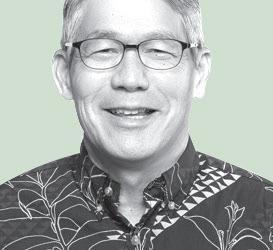
HAWAII BUSINESS 25 BIZX: ADVICE FROM EXPERTS
ILLUSTRATION: FAHMI RUDDIN HIDAYAT/ISTOCK / GETTY IMAGES PLUS VIA GETTY IMAGES
THIS MONTH’S EXPERTS:
MARK FUKUNAGA, CHAIRMAN AND CEO OF SERVCO
RICK CHING, PRESIDENT AND COO OF SERVCO
You Want Growth and Better Customer Service? Invest in EX
EVERYONE KNOWS THAT happy employees lead to happy customers and growth, so most companies say employee satisfaction is a big part of their mission. The reality is that employee experience, EX, is usually an a erthought, says Tiffani Bova.
Bova, the global growth evangelist at Salesforce, is among Thinkers50’s list of the world’s top management thinkers. She was born and raised in Hawai‘i and graduated from Punahou School. She says companies tend to do what they need to for the customer and assume “the employee will figure it out.” She says the pandemic shined a light on that EX disinvestment.
What follows is an edited excerpt from her latest book, “The Experience Mindset: Changing the Way You Think About Growth.”
A majority of employees have been disengaged from, or indifferent toward, their work for decades. They’re frustrated by inadequate pay, limited career advancement opportunities, unrealistic productivity expectations and long commutes that have become increasingly unnecessary.
As shown in the first chart, employee productivity and compensation were in alignment until the Digital Revolution, and have diverged wildly since. Between 1948 and 1979, productivity (measured as how much total income is generated in an average hour of work) and compensation (employees’ average pay) rose in close tandem.
Between 1979 and 2020, productivity went up 61% while compensation only went up 17.5%. With productivity increasing, it is only natural to
The Gap Between Productivity and a Typical Worker’s Compensation Has Increased Dramatically Since 1979.
Cumulative change since 1948 (Index 1979=100)
1948-1979:
Productivity: +118.4%
Compensation: +107.5%
1979-2021:
Productivity: +64.6%
Compensation: +17.3%
assume that income increased for businesses as well, and you’d be right. But that money wasn’t making it into the pockets of most employees. Instead, it went to the C-suite, other corporate and professional employees, and higher shareholder profits – not to a majority of their employees.
Beyond compensation and productivity, companies need to pay attention to employee engagement when considering how to improve EX. Engagement is currently at a miserable 32% – and hasn’t budged in the U.S. since 2007, as shown in Figure 2.2.
The engagement element that declined the most from early 2021 to 2022 was employees’ level of agreement that they have “clear expectations, the right materials and equipment, the opportunity to do what they do best every day, and a connection to the mission or purpose of their organization.”
The percentage of actively disengaged employees – that is, workers who are disgruntled and disloyal because most of their workplace needs are going unmet – is slowly climbing and was at 17% in 2022. Even more telling is that from early 2021 to 2022, there was an 8−point decline in the percentage of employees who were “extremely satisfied” with their organization as a place to work.
Unhappy or disengaged employees can still “do their jobs,” check the appropriate metric boxes and get paid. They may also be miserable.
Disengagement shows up in places like a disinterest in collaboration and an unwillingness to go above and beyond or take on extra work. That ends up
negatively impacting employees who are actively engaged.
Digital productivity can also mask engagement issues. So much of the inner workings of any business – the tedious, mundane tasks – are now handled by technology and automation, which can result in higher productivity numbers. That doesn’t mean your employees are engaged.
Lack of engagement means employees are less likely to invest discretionary effort in organizational goals or outcomes. They are also more likely to quit or be fired due to poor performance, further exacerbating the talent crunch. Those lost employees are expensive to replace.
It is no surprise that organizations that are the best in engaging their employees achieve more than four times the earnings-per-share growth of their competitors. If you don’t have employee engagement, how could you possibly expect to see high productivity, innovation and organizational agility? How can your company expect to provide superior EX when employee engagement is so dismal?
Focus on EX: Employees are begging for it, your customers are feeling the consequence of its neglect via poor service, and it’s showing up in your bottom line.




26 OCTOBER 2023
BIZX: ADVICE FROM EXPERTS
PHOTO: COURTESY OF TIFFANI BOVA
THIS MONTH’S EXPERT: TIFFANI BOVA, GLOBAL GROWTH EVANGELIST, SALESFORCE 1960 1980 2000 2020 200% 150% 100% 50% 0
GROWTH,
26 30 29 30 29 28 30 31 33 34 36 32 34 18 17 17 15 20 19 18 17 16 13 14 17 16 2000 2002 2010 2004 2012 2014 2016 2018 2020 2022 2006 2008 % Engaged % Actively Disengaged
PRODUCTIVITY AND HOURLY COMPENSATION
1948-2020
U.S. EMPLOYEE ENGAGEMENT TREND, ANNUAL AVERAGES


Family Hui Hawaii’s Advice to Parents: “Have a Baby, Join a Hui”
BY AISHWARYA BEHL
EXECUTIVE DIRECTOR
CHERILYN SHIINOKI
says Family Hui Hawaii “strengthens the community from within” by fostering a safe space where families are supported while navigating the challenges of raising children.
“The focus has always been to help parents be the best that they can be,” she says.
“We’re here to encourage and empower them and give them knowledge so they can feel confident.”
The nonprofit creates and nurtures small groups of families, with parents and keiki interacting and supporting each other in gatherings at parks, schools or recreational centers. From there the rela-
tionships between families often deepen.
With the help of Family Hui Hawaii, these groups are building parental resilience, sharing knowledge about childhood development and appropriate parenting strategies, and rooting families with support networks.
The core program lasts 10 to 12 weeks, “but the friendships you make within it last so much longer,” Shiinoki says.
“Our expertise is creating and holding that space for families to share with each other.”
The program supports children’s health, wellness, education and welfare, while protecting against child abuse and neglect. One way it does this is by providing parents with practices that align
with early childhood development and are based on research and solid evidence.
Since its inception in December 2013, Family Hui Hawaii says it has reached over 1,800 individuals across Hawai‘i. It has expanded through word of mouth, community support and partnerships with agencies like the Salvation Army and its Family Treatment Services programs, and the Malama Family Recovery Center, an addiction treatment facility in Kahului.
It has also formed partnerships with businesses: UHA Health Insurance and Hawaiian Electric have both run pilot programs with their employees using the Family Hui Hawaii model.
Among those Family Hui Hawaii has helped are teen parents, single parents, special-needs families and extended ‘ohana, Shiinoki says. The nonprofit even works on early interventions at neonatal intensive care units to safeguard children’s well-being.
“Over half of child abuse and neglect victims are under one year old,” Shiinoki says. “It emphasizes just how important that prevention piece is. I’d like all families to have this experience. Let’s connect at birth. This is truly the ‘have a baby, join a hui’ concept.”
28 OCTOBER 2023 NONPROFIT WITH A MISSION
PHOTO: COURTESY OF FAMILY HUI HAWAII














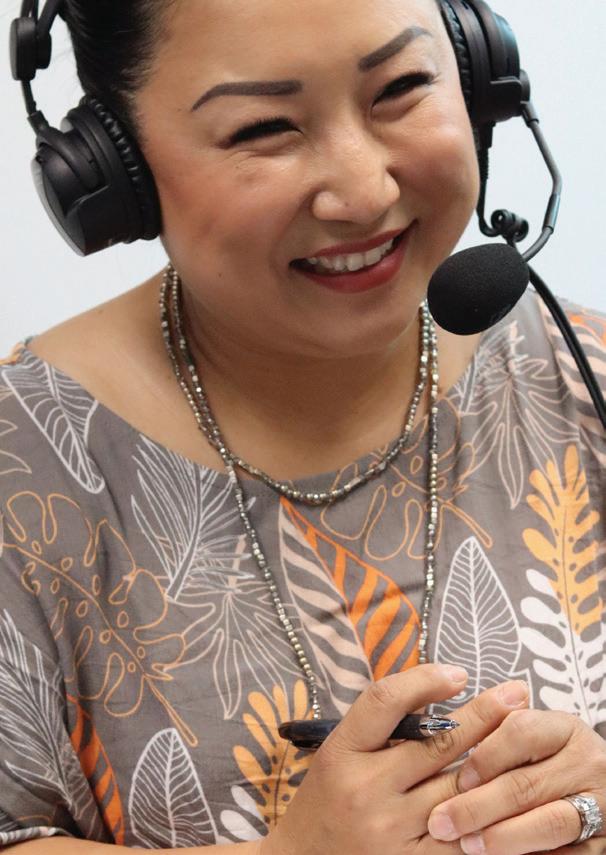
Locally Owned, Locally Committed AVAILABLE EVERY OTHER THURSDAY ON THESE PODCAST PLATFORMS: LISTEN NOW PRESENTED BY Join our host Unyong Nakata of Nakata Advisory as she talks with some of Hawai‘i’s most influential business and community leaders. Catch up on Season 2 wherever you get your podcasts. We’re already halfway through the season! HAWAII BUSINESS 29











































Catherine, a woman who inspires people to be exceptional.
Through her career as a lawyer, venture capitalist, and banker, she has driven positive change. And, she’s not done yet. We’re proud to help recognize Catherine Ngo and all the Women Leaders Making a Difference in Hawaii.
Meet us at cpb.bank
HAWAI ‘ I ’ S WOMEN OF INFLUENCE
LEARN ABOUT 10 WĀHINE
WHO HAVE STEPPED UP TO LEAD AND SUPPORT OTHERS
BY RYANN NOELANI COULES, KATHRYN DRURY WAGNER AND TORI DEJOURNETT
PHOTOGRAPHY BY KIANA LIU, JOSIAH PATTERSON AND AARON YOSHINO
31

32 OCTOBER 2023
CATHERINE NGO
WHEN CATHERINE NGO SET OFF for Hawai‘i in 2010 to work at Central Pacific Bank, she intended to only stay a couple of years. However, drawn by Hawai‘i’s people and sense of community, she and her husband quickly decided to stay.
Today, her local service is broad and deep. In addition to leadership roles at CPB, she serves on the board of trustees of The Queen’s Health System and is chair of that board’s Finance Committee. She’s also on the advisory boards of Catholic Charities of Hawai‘i and the Trust for Public Lands, the board of directors of Hawai‘i Gas, and the board of governors of the Hawai‘i Community Foundation. And she’s on the Federal Reserve’s Community Depository Institutions Advisory Council for the 12th District.
Closer to home, she is chair of the board for Central Pacific Financial Corp., the parent of Central Pacific Bank, and is president of the CPB Foundation.
“Our board of directors is the body that guides the strat-
egy for our company, and then also provides the high-level oversight,” Ngo says.
As president of the foundation, she helped launch an accelerator program and network in 2020 for female entrepreneurs in Hawai‘i called WE by Rising Tide.
“I commit a lot of my energy to the program,” Ngo says. “I feel I’m getting back more than I’m giving. I think this program is particularly important because we know small businesses are the engine that drives our state’s economy, and so the more that we can support these women in business the stronger our business community will be.”
Ngo started her career in private law practice focusing on banking and securities law after graduating from the University of Virginia School of Law in 1986. She joined Silicon Valley Bank in 1993 as general counsel and then served as its executive VP until 2005.
She was a founding general partner of Startup Capital Ventures, an early-stage
venture capital firm established in 2005, with investments in Silicon Valley, Hawai‘i and China. Her focus was software and services companies in China.
John Dean – who had led Silicon Valley Bank when she was there – recruited her to join CPB in 2010, where she started as executive VP and chief administrative officer.
Having strong mentors and a good support system is a way for women in leadership positions to overcome any challenges with insecurity, Ngo says.
“I’ve had some very strong mentors who have provided me the advice and the confidence and the encouragement to take on the larger roles over my career,” she says. “I feel it’s so important for women and also men to provide that kind of encouragement to women, because I think it’s not unusual for women to have some of those insecurities.”
Crystal Rose, who serves on the boards of CPB and its parent company, is part of Ngo’s support system and
a strong supporter of the “fabulous job” Ngo did in creating WE by Rising Tide. “It is very successful, both internally as well as what it’s done for our customers externally,” Rose says.
“I believe that we need more women in what I call C-suite positions, especially in our state,” Rose says. Women “bring both a different perspective as well as a different level of energy to these positions, and having been there it’s part of my kuleana to support other women to get to the same place.”
Dean – a longtime Ngo mentor – would ask her: “What is your tummy telling you?”
Ngo says that was his way of telling her to trust her gut.
“Sometimes my insecurities overtook my decision-making process but my gut, my intuition, would tell me that I can do it. Go for it,” she says. “I would say that question that he often asked me was a big influence in a lot of the decisions that I have made over my career.” – BY TORI
HAWAII BUSINESS 33
THE CHAIR OF THE BOARD FOR CENTRAL PACIFIC BANK’S PARENT COMPANY SAYS MENTORS AND A GOOD SUPPORT SYSTEM HELPED GET HER TO WHERE SHE IS TODAY
DEJOURNETT
ANN TERANISHI
THE PRESIDENT AND CEO OF AMERICAN SAVINGS BANK
ENCOURAGES WOMEN TO TAKE ON NEW CHALLENGES AND TO TRUST IN THEMSELVES
ANN TERANISHI HAS WORKED in myriad roles during her 16 years at American Savings Bank, culminating in her appointment as company president and CEO in 2021.
“I really had the opportunity to learn the company sort of inside and out, which I think was great preparation for the role,” Teranishi says.
From a young age, her life has taken many turns. She was born on O‘ahu and lived in Mililani for the first few years of her life. Then from age 4 to 7 she lived in San Mateo, California, before moving back to O‘ahu and living in ‘Aiea until she graduated from high school.
Then it was back to California, where she got her bachelor’s degree in international relations and economics at Claremont McKenna College and then a law degree from the University of California Law San Francisco (then known as UC Hastings).
“I started my career as an attorney, and I never imagined a career path bringing me to banking or certainly not the CEO of a bank,” Teranishi says.
She says that serving on the boards of many organizations gave her a chance to give back to the community – and to learn. “I found that those experiences really also helped me develop an understanding of things outside of my work life, but also develop further as a leader.”
In addition to serving as a member of the ASB board of directors, Teranishi serves on the boards of the Hawai‘i Executive Collaborative, Island Insurance, the U.S. Japan Council and Catholic Charities of Hawai‘i.
She also is a trustee for Punahou School, a member of the Hawai‘i Business Roundtable and Hawaii Bankers Association’s Executive Committee, and an executive mentor with the Chamber of Commerce Hawaii’s Young Professionals Mentor Hawaii program.
“I always am very happy to talk to women and men, but of course, women in particular, to encourage them to take on additional challenges to trust in themselves to think that they can really do it,” she says.
Earlier in her career, Teranishi says,

a recurring challenge was overcoming the feeling that she didn’t “have all the experience that may seem required” for a role.
But over time, she says, she gained confidence with each new position, all the while making sure she was surrounded by smart and talented colleagues.
While serving in leadership positions, Teranishi says, “There have been
34 OCTOBER 2023


times in my career when there haven’t been many women in the room or around the table.”
“But I’ve never felt like I was not welcome or included. As I’ve progressed in my working career, I’ve learned to really show up authentically and have confidence about what value and perspective I contribute, even though it might be a different perspec-
tive than a male colleague.”
She says she has been fortunate to have “both men and women really support my personal and professional development.”
Scott Seu, president and CEO of Hawaiian Electric Industries, the parent company of ASB, says he “really enjoys working with Ann; it’s truly a joy.”
When describing Teranishi, Seu uses the words “brain, heart and collaborator.”
“Being so much around Ann and other female leaders, I think it’s really impressed upon me that they bring such an important voice that needs to be part of that conversation to help bring that balance and perspective,” Seu says.
Teranishi recalls the best advice she ever received was from her father: “Don’t ask others to do what you are not willing to do yourself.”
HAWAII BUSINESS 35
BY TORI DEJOURNETT
–
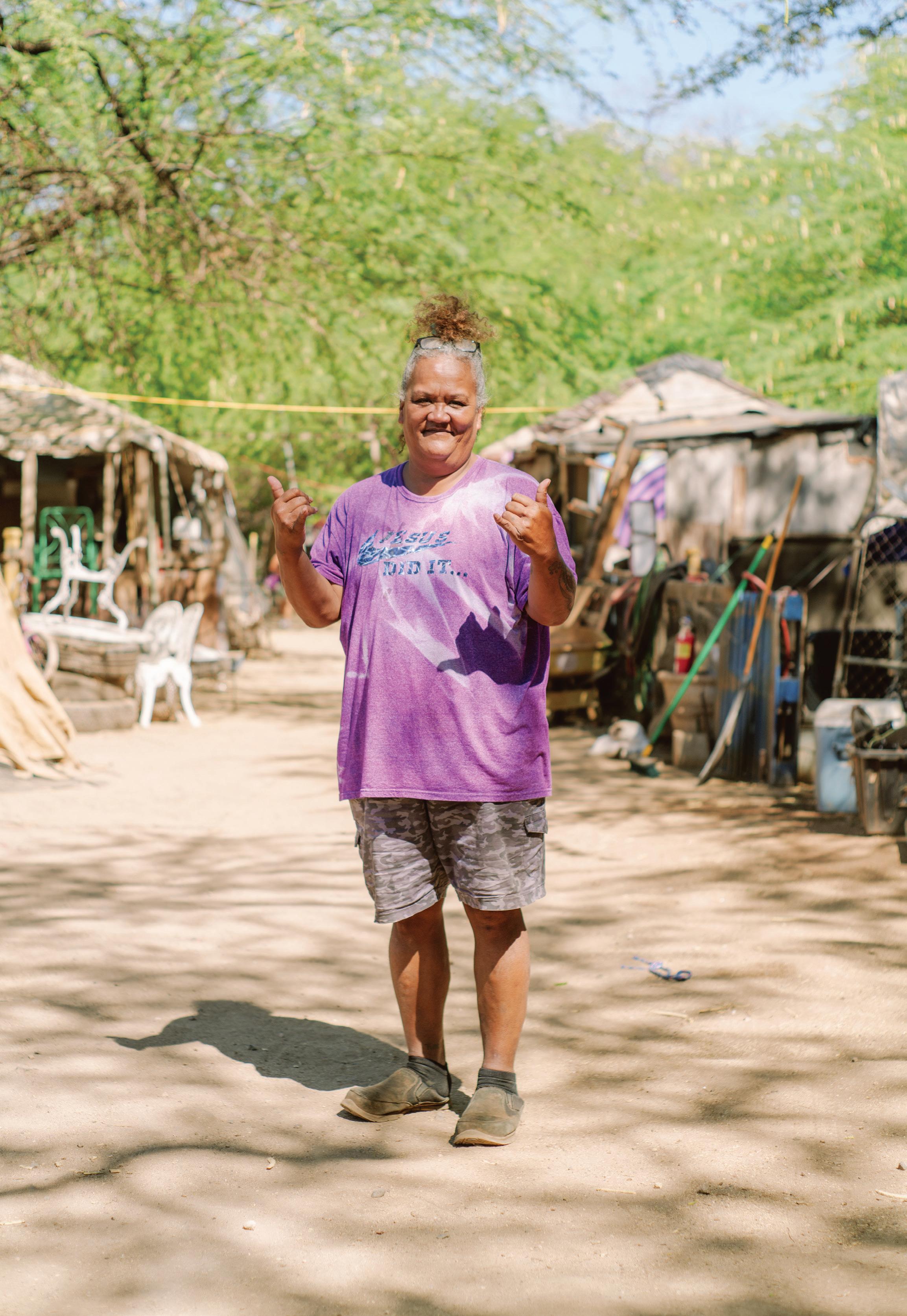
TWINKLE BORGE
THE LEADER OF THE PU‘UHONUA O WAI‘ANAE HOUSELESS VILLAGE AT THE WAI‘ANAE BOAT HARBOR IS HELPING HER COMMUNITY BUILD HOMES ON LAND THAT THEY NOW OWN
SHADED BY KIAWE TREES next to the Wai‘anae Boat Harbor is Pu‘uhonua O Wai‘anae, an encampment of more than 200 houseless people and 160 animals. They reject the “homeless” label for they call this place home –“houseless” is how they describe their living situation.
Twinkle Borge, 53, is their beloved matriarch. Here, her tough yet compassionate nature has earned her the affectionate nickname “Mama.” As we sit and talk at one of the camp’s green picnic tables, a dozen or so people stop by to say, “Hi Mama,” and kiss her on the cheek.
“Even those that are older than me say, ‘Hi Mama,’ which cracks me up. But I love that they gave me that title and that respect.”
Borge has been at Pu‘uhonua O Wai‘anae since the beginning in 2006, when just seven people were camped there.
“Pu‘uhonua is a place of refuge, a place of solace,” says Borge. “I look at it as a place of healing because a lot of these guys came from trauma; they still in trauma.”
Herself included.
“I was that abused child,” she says. “Every day I was told and re-
minded of all my faults. I wore sweatpants more than shorts just to hide the bruises. But I still always knew how to love and forgive others.”
Borge became pregnant with twins early in adulthood but miscarried. “I believe I lost my twins from stress, because I couldn’t believe what was coming out of my dad’s mouth.”
She went on to have a son and hold a steady job and her life got better. But past trauma haunted her and a troubled romance with a drug addict brought her down.
“This person I’ve been with for many years, I never thought would fool around behind my back.” She was devastated after discovering her partner’s infidelity but could not bring herself to end the relationship.
“I couldn’t go back to work because I was too worried about who she with, or where she at,” recalls Borge. Her savings dissipated and she could no longer afford rent. The couple eventually became houseless and used meth together.
“When I got sick and tired of being sick and tired, I started getting myself sober. It’s going on almost 17 years I’ve been clean. And I did it here. Never went into a program.”
Borge estimates about a quarter of Pu‘uhonua O Wai‘anae’s residents are recovering from drug addiction. She took it upon herself to create a better environment for houseless people by establishing an encampment with structure, amenities and a strong support system of people who ask, “How can we help? What can we do?”
She named it Pu‘uhonua O Wai‘anae, Hawaiian for “Refuge of Wai‘anae.”
HAWAIIANS’ HIGH RATES OF HOMELESSNESS
In 2022, Hawai‘i had the fourth-highest rate of homelessness per capita in the U.S., according to the latest UHERO housing report. “Nationwide, for every 10,000 residents, about 18 were experiencing homelessness. In Hawai‘i, the rate is 41, more than twice the national rate,” the report says.
Homelessness disproportionately affects Hawaiians and Pacific Islanders. According to the State of Homelessness: 2023 Edition, a survey conducted by The National Alliance to End Homelessness, most groups of color have higher rates of homelessness than white people. “Native Hawaiian or Pacific Islanders particularly stand out as having the highest rates, with 121 out of every 10,000 people experiencing homelessness” – 11 times the rate for white people.
O‘ahu’s Wai‘anae Coast has the highest concentration of Hawaiians in the world. Based on the 2020 census, 59% of its 50,000 residents identify as Native Hawaiian and Borge says about two-thirds of Pu‘uhonua O Wai‘anae’s residents are Hawaiian, including herself.
Another villager, a 33-year-old Hawaiian man named Ona, says he became homeless at the age of 12.
“After my mother and father broke up, my brother and I were always all on our own. We grew up poor. And so we left on our own to not be a burden.”
When Ona met Borge a few years later, she insisted that he and his brother come live at the village with her.
HAWAII BUSINESS 37
“You belong with family, regardless of how we live,” Borge told him. “It took me a week or two to convince him and braddah to come home to me. That way I can help them. I eat, you eat. I shower, you shower. You sick? Let me know how I can help.”
Lynette Cruz, who has been an anthropology professor with a focus in Native Hawaiian studies at Hawai‘i Pacific University and Leeward Community College Wai‘anae, says the crisis in Hawaiian homelessness cannot simply be explained by the state’s high cost of living.
“There’s a reason why we’re living on the beach houseless, why we’re sick, why we’re overrepresented in prison, why we have elevated mortality and morbidity rates,” says Cruz.
“People can’t explain it away with some racist kind of theory that says, ‘There’s something wrong with us.’ You have to look at history.”
That history is centered on the Hawaiian Kingdom’s overthrow in 1893, as well as what took place before and after. “What happened to Hawaiians is not new. It happened everywhere” with the arrival of outside people driven by something other than the indigenous people’s community values.
Cruz says many of Hawai‘i’s residents have difficulty relating to houseless people, and that breeds misunderstanding and prejudice.
“Yeah, it’s hard to relate. Sometimes we get angry at people because we feel like they’re just not doing their best to get out of a really bad situation. But we know nothing. We can’t make any assumptions.”
LIFE AT THE VILLAGE
Borge has invited many people to live at the encampment, where she says they’re safer from theft and somewhat protected from sweeps, and where residents take care of one another. An invitation is not necessary: Anyone who shows up is welcome if they follow the rules.
“You need help? You hungry? You
MEET ONE OF PU‘UHONUA O WAI‘ANAE’S KEIKI
A 12-year-old boy named La‘akea has been living at the houseless encampment for four years. Learn his story at hawaiibusiness.com/laakea.
need something? Don’t hesitate. I said even your neighbors will help you. We’re not just a community of houseless people; we one diverse community here and I love the fact that everybody shares in this village. No one goes hungry.”
The village has a pantry and a donation tent, which are regularly stocked with donated food, toiletries, kitchenware, clothes, shoes, books and more.
All donated items are free, but residents are only allowed to shop there once a week and outside community members once a month. People who steal or try to sell donated items for money are banned from the pantry and donation tent.
And it’s not just stealing within the camp that’s forbidden.
“If I find out someone from our village stole from the outside community, they’ll get it from me! I’ll make them go back to the store and meet me in a parking lot. And then I will go in to see the owners and ask them, ‘I reckon that’s your stuff in this trash bag?’ They’s like, ‘Yup.’ I tell ’em we have workers outside that will donate three hours to you for what he did.”
Other rules include respecting quiet hours, no drug use or guns on communal grounds, as well as mandatory community service work every month.
Rule-breakers are kicked out of the camp, but Borge believes in second, third and even fourth chances. “Regardless of what we go through, people deserve chances,” she says.
Not everyone at the camp is so forgiving, though. “Sometimes my guys get irritated with me, but I remind them they got to remember where they came from.”
The village’s successes are a reflection of Borge’s leadership. “She’s trying to learn how to do something that’s not been done,” says Cruz. “I think people trust her because she’s consistent. She also doesn’t take shit, which is why we really like her.”
A DREAM COMING TRUE
Pu‘uhonua O Wai‘anae’s residents now live in a village of makeshift shelters, but they are building a “forever home” –communal housing on land they own in Wai‘anae Valley.
She recruited the help of local leaders, including James Pakele, president of Pu‘uhonua O Wai‘anae’s’s nonprofit, Dynamic Community Solutions, and Cathy
Kawano-Ching, a founding member of Hui Aloha, a volunteer network that advocates for Hawai‘i’s homeless population and finds permanent housing.
First Hawaiian Bank Foundation last year announced a $250,000 donation to Pu‘uhonua O Wai‘anae. Dynamic Community Solutions’ GoFundMe page had collected $110,000 in donations as of Sept. 1. So far, donations have been used to buy 19½ acres in Wai‘anae Valley and materials for the homes being built.
“I feel so bad because they’re building my house first,” Borge says. “My thing is go take care of the people before take care of me. But I had a friend that told me it’s about time somebody took care of you.”
Half of the land will be used for housing that includes communal kitchens, bathrooms and a dining hall, and the other half for farming so residents can grow much of their own food.
“We already started planting banana, avocado, ‘ulu and kukui nut trees. I also got Okinawan potatoes growing. The oranges are doing beautiful. I want to start a patch of my own lo‘i too.”
Residents will pay $200 a month in rent when they move in.
SHE SHOWS “WHICH WAY TO GO”
I ask Borge about “Twinkle,” her unusual first name. “That’s not one nickname, that’s my real name,” she replies.
“My sister actually named me when I was born. She has a jewelry box that still to this day plays the song ‘Twinkle, Twinkle, Little Star.’ So that’s what I was named after, her jewelry box.
“Wasn’t easy growing up with that name,” she adds.
But a closer look at the popular nursery rhyme suggests Twinkle suits her well.
The first verse you’re already familiar with. Here’s how the lesser-known second and third verses go:
When the blazing sun is gone, When he nothing shines upon, Then you show your little light, Twinkle, twinkle, all the night.
Then the trav’ller in the dark, Thanks you for your tiny spark, He could not see which way to go, If you did not twinkle so.
– BY RYANN NOELANI COULES
38 OCTOBER 2023

JILL HOGGARD GREEN
THE PRESIDENT AND CEO OF THE QUEEN’S HEALTH SYSTEM LED THE ORGANIZATION THROUGH THE PANDEMIC, AND NOW ONE OF HER GOALS IS IMPROVING THE HEALTH OF NATIVE HAWAIIANS
JILL HOGGARD GREEN HAS A SPECIAL PHOTO IN HER OFFICE: It’s of her mother and aunt, both nurses and both wearing their uniforms and badges.
“My mother taught me about care and compassion and the importance of health,” says Hoggard Green, who grew up in Utah.
She considered a law career but was increasingly drawn to health care and received a bachelor’s degree in registered nursing, then a master’s and a doctorate in health care leadership and quality.
After leadership roles in health systems in Oregon and North Carolina, where she was named a Top 25 COO by Modern Healthcare, she was drawn to The Queen’s Health System because of its mission.
“Queen’s is addressing health inequities, working to improve the well-being of the community,” she says. “Hawai‘i ranks as the healthiest state, and ranks highly for affordability for health care, but what’s not in those listings is the issue with disparities.”
Hoggard Green joined Queen’s as president and CEO in October 2019, just before Covid hit. As a result, “She had to build relationships and trust virtually, and bring the board and the team together during one of the most critical
times in the organization’s history,” says Jenai Wall, chair of the board of trustees of The Queen’s Health System, and chairman and CEO of Foodland Super Market.
During the pandemic, Wall says: “Most organizations were focused on the day to day. Queen’s was focused on that, and on patient and staff safety, but also, we were thinking about how we could serve the community better, and I think that was due to her leadership.”
Hoggard Green helped create a strategic plan with an ambitious goal: to reduce the gap in life expectancy that exists between Native Hawaiians and other ethnic groups in Hawai‘i within the next 10 years.
“People think you can’t do that, but we are moving forward,” says Hoggard Green. “We have six major strategies, and it’s going well. There are lots of headwinds, but it’s rewarding. And I get to work with such great people who want to create a better future.”
Her vision includes developing a recently purchased 31-acre parcel at Honokōhau Nui in Kailua-Kona for ambulatory care. Queen’s is also investing in expanding its nursing team. “We have a 15% net increase in the number of nurses since 2019 to today, and we’ll keep on going,” she says.
Hoggard Green is the mother of two adult sons; she and her husband, a retired nurse, have been married for 43 years. She balances her 11- and 12-hour workdays with a lot of exercise, she says.
The way Hoggard Green works with her executive team is impressive, Wall says. “She values her people, listens to their opinions, gives them the leeway to get things done, and she supports them.”
Says Hoggard Green: “Early in your career you think you have to be in charge and you’re looking to achieve outcomes in a certain way. But I’ve found one of my strengths is leading with service. You have to listen carefully, have compassion, be strategic, to make difficult decisions when you need to.” And knowing “how to build strong teams” is vital, she adds.
“If I bring something to the table, saying, ‘We need to do X,’ we then have a conversation about it. Everybody in the room is participating. There’s that richness of discussion. You bring the wisdom of the team around it and it leads to a much better outcome. It will be developed into something extraordinary.” – BY
KATHRYN DRURY WAGNER
HAWAII BUSINESS 39
PHOTO: COURTESY OF THE QUEEN’S HEALTH SYSTEM
LORI KAHIKINA
SINCE COMING ABOARD, THE EXECUTIVE DIRECTOR AND CEO OF THE HONOLULU AUTHORITY FOR RAPID TRANSPORTATION HAS SOLVED SOME OF RAIL’S BIG PROBLEMS AND GUIDED THE FIRST SEGMENT TO ITS OPENING
LORI KAHIKINA IS USED TO being in the public eye. She’d previously been director of Environmental Services with the City and County of Honolulu, where she oversaw trash and recycling services and a $5 billion upgrade of the city and county’s wastewater program.
But that spotlight was nothing like what she’s encountered in her current position, as executive director and CEO of the rail system’s developer, formally called the Honolulu Authority for Rapid Transportation.
“I can’t go a week without someone stopping me at Costco or at a restaurant,” she says. “The comments have been 100% positive, with people saying, ‘Keep up the good work.’ ”
That response is a testament to Kahikina’s leadership, says Ed Sniffen, director of the Hawai‘i Department of Transportation and a board member for HART.
“She is strong, decisive and action oriented,” he says.
When Kahikina took the reins at HART, says Sniffen, “She didn’t just take what she got and push it along. She took stock of the strengths and weaknesses
of the agency. She made sure she had the right people and the right messaging. She made some adjustments to the route, which may have taken longer at the time, but she knew it was going to be a better project in the long term. Her body of work really speaks for itself.”
He adds: “She always mentions the team and congratulates the team for the win. She shows the best of HART and not just the best of Lori. She’s also a graduate of Kamehameha Schools and does a great job of upholding that honor of attending there. She is an inspiration to the next generation.”
Kahikina took the helm of the long-awaited and controversial project in 2021 when it was many billions of dollars over budget and 11 years late.
“When we came in, there was a lot of tension and negativity; people couldn’t stand HART,” she says. “Kamehameha Schools, HECO, city departments, the public, everything HART had touched was a damaged relationship. I had to work hard to repair that.”
There were other challenges. “We came in and found the wheels didn’t fit

40 OCTOBER 2023
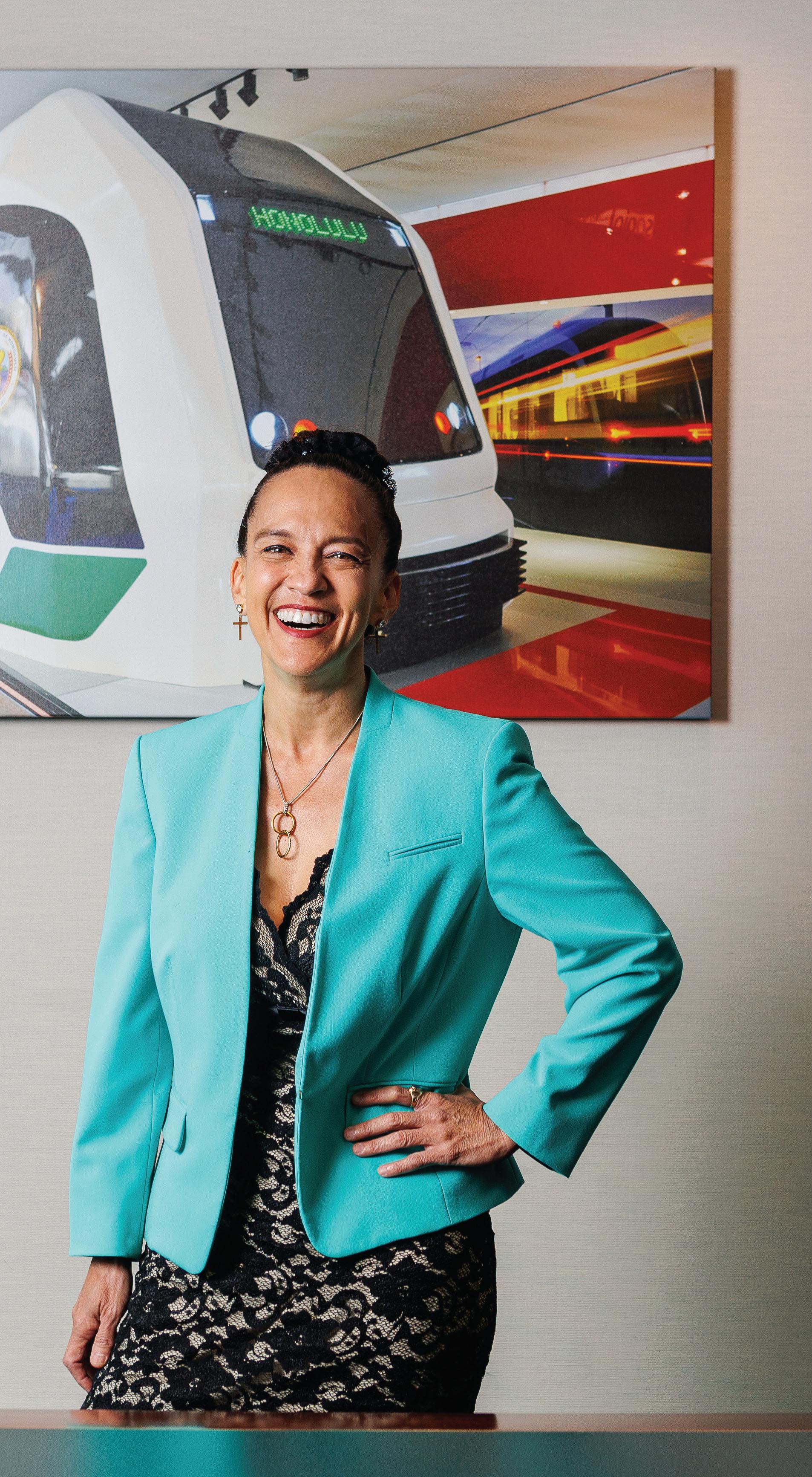
the track,” she says. “Are you kidding me? How long have you guys known that? I’m inheriting that. The public is hearing that. There are cracks in the supports on the stations. When did you find this out? 2018. Holy moly. So, then it was buckle down, let’s get all the smart people in the room and figure out a solution. That is the part of the job I love. That’s the engineer in me, the problem solving.”
Kahikina grew up in Kailua and was a competitive swimmer. She became interested in engineering around fourth grade, and was inspired by her dad, who would quiz her on math problems while he drove.
“There was always some long equation, but I loved it. The work ethic, that all comes from my dad, and doing what is right, high integrity.” Kahikina earned a bachelor of science degree in mechanical engineering from UH Mānoa and is a licensed civil engineer. She has three grown sons and a grandson, as well as three dogs and a horse.
HART reached a major milestone in June: It turned over the initial 11 miles of rail and nine rail stations to the City and County of Honolulu, which will handle operation and maintenance. On June 30, “Skyline” opened to the public.
Kahikina has her eyes set on rail segments two and three. In the meantime, she thinks of serving the people of the Leeward Side, and of easing their long commutes into the city. “I hope this becomes another option for transportation, and the premier backbone for a multimodal system.” –
BY KATHRYN DRURY WAGNER
HAWAII BUSINESS 41
THE WOMEN OF MAUI
WHEN TRAGEDY STRUCK, HUNDREDS OF VALLEY ISLE WĀHINE PROVIDED RELIEF AND FUNDRAISING FOR THOSE IN NEED. WE SPOKE TO FIVE AMONG THE MANY WHO ANSWERED THE CALL.
BY KATHRYN

NICOLE HUGUENIN
CO-FACILITATOR OF MAUI RAPID RESPONSE
THE MAUI RAPID RESPONSE TEAM is integrated, localized and community-driven – a lot like an ahupua‘a. “What’s cool about Maui Rapid Response is that it’s all run by our neighbors. That’s it. It’s run by aloha,” says Nicole Huguenin, who with her fellow co-facilitators, Kamiki Carter and Kainoa Horcajo, leads the organization. Professionally, Huguenin is
a former teacher and the founder/director of Share Circle, which diverts items away from landfills via upcycling and sharing. She explains that the roots of Maui Rapid Response took hold in 2019, when a collective formed to address the needs of the island’s unsheltered residents. The group further coalesced when helping those affected by the Covid pandemic and two floods in Ha‘ikū.
42 OCTOBER 2023
Nicole Huguenin of Maui Rapid Response, left, with community volunteers and leaders Noelani Ahia and Trinette Furtado.
DRURY WAGNER
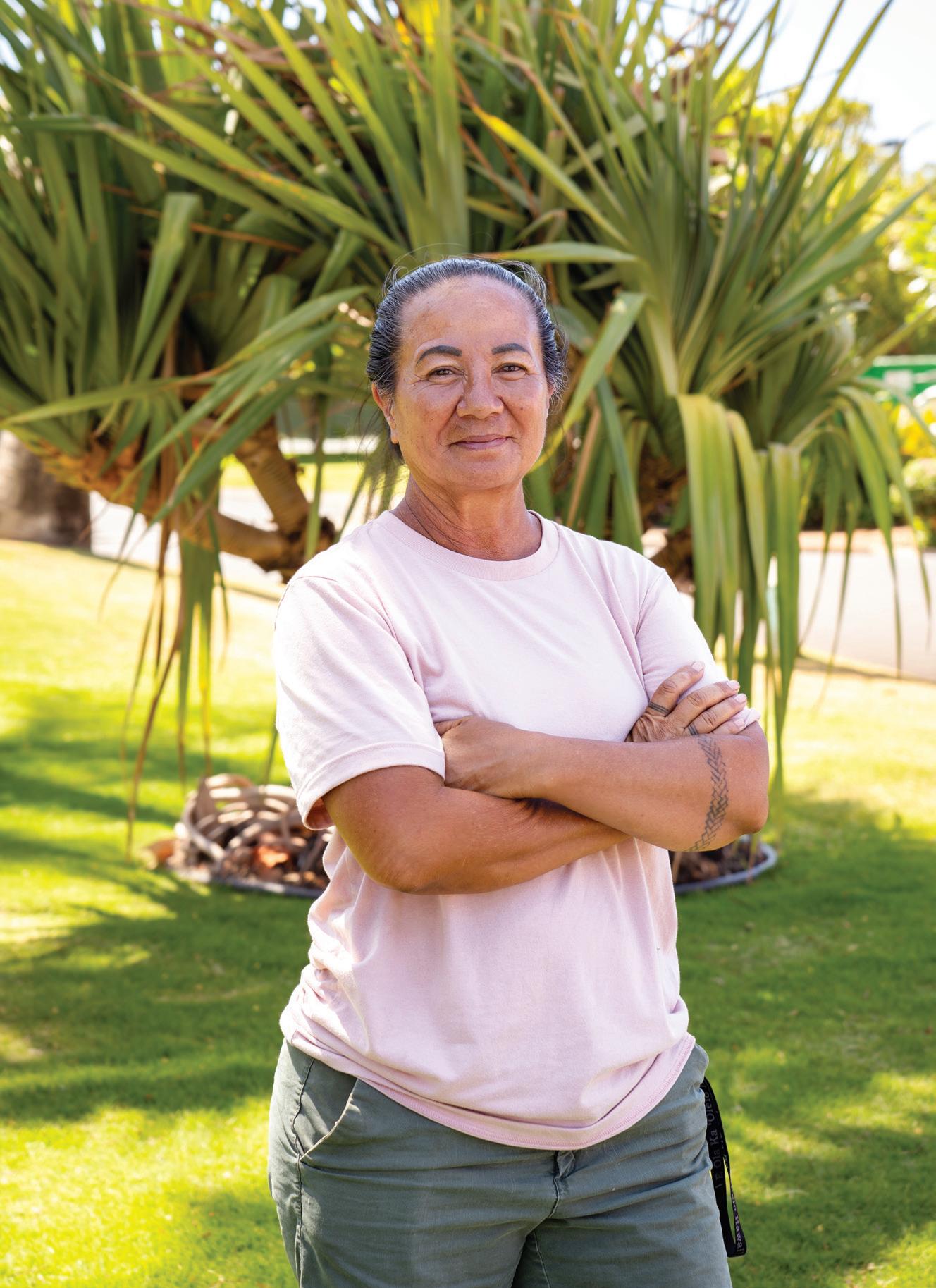
“Working on these responses, it became clear that we have to do things like have tool libraries,” she says. “We needed ways to practice trusting and interacting with our neighbors in a different way.”
With these insights, Maui Rapid Response was well positioned to quickly act after the devastating August fires. The group has been creating a web of partnerships, linking together citizen brigades and a number of nonprofit and direct-aid organizations. One team might be making DIY air filters, for example, while another is offering legal services or hot daily meals. The group is focusing especially on Native Hawaiian fire survivors and vulnerable populations such as immigrants, kūpuna and keiki.
“We let the community leaders know about the resources that they can have behind them, if and when they want to call them in,” says Huguenin. “And it’s place-based: What’s needed in Lahaina
is not the same thing as what’s needed in Upcountry.”
One example of the group’s web of partnerships was evident at the Kīpuka Maui event at Maui Nui Botanical Gardens. For four days, the gardens were closed to the public and open to fire survivors. Relaxing live music played while people received supportive services on housing, information on water-quality safety, access to mental health support, and even haircuts.
Maui Rapid Response has also been instrumental in spearheading donations, publicizing lists of what is needed – and not needed – as the community’s situation evolves. And it’s advocating for long-term housing solutions.
Huguenin describes her leadership style with Maui Rapid Response as “heart-first.”
“We want to make sure it’s done right, and to ensure that those who have been oppressed are put at the front and center.”
DIRECTOR, NĀ ‘AIKĀNE O MAUI CULTURAL CENTER
HISTORIC
Street
Lahaina that housed Nā ‘Aikāne o Maui Cultural Center burned in the Aug. 8 fire, along with the artifacts stored there. But the spirit of the place as a hub for the Native Hawaiian community is still alive.
The couple that runs the organization, U‘ilani and Ke‘eaumoku Kapu, immediately pivoted to help those affected by the wildfires. “Everything happened so fast,” says U‘ilani Kapu.
Activating a network of friends, family and supporters, Nā ‘Aikāne o Maui had a hub set up in Lahaina within two days of the fire, stocked with clothing, drinks, hygiene products, and camping and sleeping gear, much of it delivered by helicopter by companies that donated air services and ground support.
At first, the hub was at the Lahaina post office; as of publication time, it had moved to a drive-up location at the Kā‘anapali Sheraton. It features a huge, tented area with plenty of well-organized supplies –everything from pet food and baby wipes to fresh produce. Some of the volunteers are fire survivors; Kapu says the work is a kind of break from their own troubles, and she encourages them to stop by, either to help out or to just find somebody to talk to.
“We have people that drop in late at night, because I understand, you know, some people come after they work. And we’re here to serve them, no matter what time. As you’re working with people you can feel their spirit, that they are hurting. I like to give bear hugs. That’s one thing I’ve told the team: If you feel somebody needs a hug, give it to them. We’ve let everybody know that we’re here to support you no matter what.”
As for the cultural center? “Oh, we are definitely bringing our hub back,” says Kapu. “We will build again, and as they say, if you build it, they will come.”
HAWAII BUSINESS 43
U ‘ ILANI KAPU
THE
BUILDING on Front
in
CO-FOUNDER AND EXECUTIVE DIRECTOR OF ROOTS REBORN LAHAINA
VERONICA ALEJANDRA MENDOZA JACHOWSKI
RAMIREZ
CO-FOUNDER AND LEAD COORDINATOR OF ROOTS REBORN LAHAINA
VERONICA MENDOZA JACHOWSKI AND ALEJANDRA RAMIREZ are part of Roots Reborn Lahaina, an organization that formed within a week of the wildfires. Made up of immigration lawyers and community organizers, the group also includes co-founders Leslee Matthews, Khara Jabola-Carolus and Kevin Block.
“I’m Latina, I speak Spanish, but our organization also serves Filipinos; we want to serve all immigrant populations, Tongan, Samoan, Marshallese, everyone,” says Mendoza Jachowski.
“Thirty-one percent of Lahaina’s population is foreign-born,” adds Ramirez.
Both are daughters of immigrants from Mexico. Ramirez serves as a UH Maui program outreach associate, assisting the island’s first-generation immigrants and low-income students. Mendoza Jachowski has spent several years working as a pro-bono caseworker for Maui Latinos and has a background in startups.
Immediately after the fires, Mendoza Jachowski says she was visiting a shelter and noticed that immigrants didn’t seem

to be around. “I know they’re out there,” she remembers thinking. “The stories I heard from some of the survivors is, ‘Yeah, there’s a group of us at the park or sleeping on the beach.’ ”
She donned her diving suit and hitched a ride on a Jet Ski directly into Lahaina. “I don’t want to sound like this was a savior moment at all, because we were just like, ‘Are you OK? What do you need?’ ”
She helped those who had lost their essential medications, for conditions like asthma and epilepsy. “Everyone was pulling together,” says Mendoza Jachowski. “We had doctors helping. We had people with trucks helping. Because of our bilingualism, we were able to connect people who wouldn’t otherwise say anything to resources that they needed immediately.”
The group is now helping with things like replacing green cards that were lost in the fire, and with online applications. Housing is the No. 1 concern, says Ramirez. “There are places to stay, but for 30 days or a week. It’s like musical chairs, but with houses.”
Add in the challenges of prejudice and
racism, and some immigrants’ distrust of government entities, especially if they are undocumented persons, and help can be incredibly hard to access – if it can be accessed at all.
“When people think of immigration [on Maui], they think of the plantation days, when the Portuguese, the Filipinos, the Japanese, came in the ships for the sugar cane fields,” says Ramirez. But that doesn’t take into account modern-day immigration. “People come here in planes, looking to improve their quality of life and that of their kids. They’re taking physically demanding, stressful jobs in restaurants, hotels, landscaping.”
The organization plans to be here for the long haul, Mendoza Jachowski says. “There’s been a big gap in resources. We’re already going to need a lot, but we need those resources to make it to those individuals who are typically cut out because of their status. I just want people to know that we’re here. Immigrants are here and we’ve always been, and we don’t deserve to start from absolutely nothing all over again.”
44 OCTOBER 2023
KAIMANA BRUMMEL
DIRECTOR OF ADVANCEMENT, SEABURY HALL
WITH DEVASTATING FIRES IN MULTIPLE PLACES – Lahaina, Kula, Olinda and Kīhei – and the need for help so overwhelming, it can be tough just knowing where to start. But that’s not the case for Kaimana Brum-
mel. “I know how to help because my parents were helpers,” she says. “I watched them do community work my whole life.”
Brummel’s training and experience in fundraising, donor relations and community programs

has led her to working on fire relief with groups such as Maui Rapid Response, Maui United Way and the Hawai‘i Community Foundation.
The response to the fires has been decentralized, she says. “We are building the canoe as we paddle. What I am hearing is this needs to be a community-led rebuilding process. There are funders who want to do that. I see my role as … being a bridge between funders and those who need to be leading that effort.”
“I have always navigated between Hawaiian and Western worlds, if you will, because of my privilege of education and other privileges that I have, but also being raised in a Hawaiian-speaking, Hawaiian-rooted home and being a Native Hawaiian myself,” says Brummel. “There’s not a lot of Hawaiian fundraisers that fundraise from a Native Hawaiian worldview, you know, and this has really brought those two worlds together more than at any other time that I’ve had professionally.”
While trust-based philanthropy has been discussed in charitable circles for about 10 years, Brummel notes that, with the Maui fires, that talk must now be turned into action. (According to the National Philanthropic Trust, “Trustbased philanthropy is a charitable approach that reimagines the relationships between donors, nonprofits and communities to rebalance power and decision making.”)
Says Brummel: “Funders can self-examine what they are expecting to get out of this grant, or that donation. People are like, ‘I want to make sure this really gets to the people.’ I need them to trust that when I look them in the eye and say, it will, that that is enough for them to be at peace that the community is going to make sure that happens. Because here’s the thing: We live in this community, we have the responsibility if those people are not taken care of. The stakes are high for us. If we have poor mental health outcomes, if people are not back on their land, that means that our community is falling apart, and at the end of the day, that is all we have, because obviously material things can just disappear in a day. What is left right now is the community. That was built on trust, and relationships and time. That’s what’s left. So, trust us to rebuild that.”
HAWAII BUSINESS 45
The energy, resilience and initiative to succeed



“We have a strong commitment to diversity, equity and inclusion. We want people who aren’t afraid of very ambitious goals and tough challenges.”
Shelee Kimura President and CEO Hawaiian Electric












women committed to personal growth, professional impact, and community leadership







cohort 8 mink leaders
Susan Akina (Founding Partner, Akina Global, LLLC), Meagan Beyer (Senior Vice President, Enterprise Risk Director, American Savings Bank), Jennifer Burke (Director of Advancement & Community Relations, St. Andrew's Schools), Denise Della-Sabas (Director of Business Development & Community Partnerships, Waianae Coast Comprehensive Health Center), Elena Farden (Executive Director, Native Hawaiian Education Council), Cristina Grimmer (Manager, Mid Group Account Management, Kaiser Permanente), Taylor Igarashi (Corporate Communications Manager, Servco Pacific Inc.), Shari Ishikawa (Director, Operational Technology, Hawaiian Electric Company Inc.), Callie Lewis (Human Resources Manager, HEMIC), Erica Liu (Vice President - Account Services, Anthology, a FINN Partners Company), Suma Metla (Owner, Three Little Ducks), Danielle Mills (VP, Deputy Director of Compliance, Central Pacific Bank), Shari Ann Minato (Senior Vice President, First Hawaiian Bank), Barbara Natale (Associate, Senior Planner, G70), Casey Obatake (General Manager, Capitol Place/ Associa Hawaii), Misty Park (56 ACOMS Operations Superintendent, Hawaii Air National Guard), Roxanne Rivera-Lopes (Estimator/Project Manager, Leeward Roofing/NWIR), Aubrey Rupinta (Lead Associate, Booz Allen Hamilton), Jessica Sphar (Director, Employee Relations, Hawaii Pacific Health), Serena Thomas (Commercial Real Estate Underwriter, Bank Of Hawaii), Filifotu Vaai (Vice President Consumer Sales, Hawaiian Telcom)

about the program


The Patsy T. Mink Leadership Alliance is a 10-month program designed for professional women leaders and entrepreneurs. The program further develops management and leadership skills in an effort to increase the representation of women executives in Hawai‘i. Through facilitated sessions, the cohort engages directly with established business professionals and builds alliances with fellow Mink Leaders.


Learn more about this year’s Cohort 8 Mink Leaders at mcblhawaii.org/minkleaders.




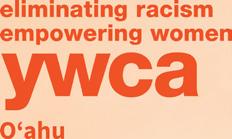

PATSY T. MINK LEADERSHIP ALLIANCE
808.695.2635 | EM mcbl@ywcaoahu.org 1040 Richards Street Suite 105 Honolulu, Hawaii 96813
PH
TRACY ALLEN
Vice President, RA
Global Luxury Ambassador, Luxury Property Specialist, International President’s Premier, Society of Excellence, Top Producer, Coldwell Banker Realty
Tracy Allen knows real estate. With 30+ years of experience, stellar credentials and unmatched market expertise, she brings superior results to buyers and sellers throughout Honolulu. When you partner with Tracy, you have a distinct advantage in today’s dynamic landscape.
As the #1 Individual Sales Agent in Hawaii and #4 Individual Sales Agent Nationwide for Coldwell Banker Realty, Tracy stands at the pinnacle of the real estate industry. In addition to holding the record for the highest closed residential sales on the island of Oahu, she is a member of the prestigious Coldwell Banker® Society of Excellence, a designation reserved for less than 1% of 100,000+ agents globally. Tracy is the only Coldwell Banker Realty agent in Hawaii to receive this honor not only once but seven times and counting. Tracy is also a certified Global Luxury Property Specialist and Global Luxury Ambassador, fully equipped to oversee the purchase and sale of Hawaii’s finest residences.
When it comes to selling your home for optimal return, there is no substitute for skill enhanced by years of experience and a thorough understanding of the local market. Tracy offers all this and more. She leverages her design and staging talents to transform the look of your property and then targets potential buyers across major social media platforms and in eye-catching print collateral. Through up-to-the-minute trend data and analytics, she prices the home competitively


and times the listing to the most opportune moment. Once a qualified buyer is found, Tracy’s client-centered negotiation ensures an entirely satisfying, financially beneficial outcome.
Buyers can expect the same personalized attention as Tracy draws on her regional expertise and Coldwell Banker Realty’s cutting-edge technologies to pinpoint lucrative housing options suited to her clients’ unique wants and needs. Through her extensive professional network, Tracy learns of available properties o en before they hit the market, giving her clients a measurable insider’s edge. Tracy also knows that the process can be stressful, so she keeps the lines of communication open as she manages the required paperwork and negotiations. With her unwavering dedication and comprehensive suite of services, Tracy takes her buyers over the threshold and into the home of their dreams.


Equally passionate in all aspects of her life, Tracy likes designing and building custom homes with her husband Bryan and spending quality time with their children and grandchildren. Prior to her real estate career, she enjoyed years as an accomplished equestrian, competing in show jumping events up and down the East Coast – a true testament to her winning spirit. If you’re thinking about buying or selling your home, you simply will not find a more committed agent, advocate and skilled professional than Tracy Allen.

3919 Noela Place, Honolulu, Hawaii Sold at $8,700,000 FS















280 Poipu Drive, Honolulu, Hawaii Listed at $8,895,000 FS
Coldwell Banker Realty
1585 Kapiolani Blvd., Suite 1010, Honolulu, HI 96814 (808) 927-6415
Tracy@TracyAllenHawaii.com
www.TracyAllenHawaii.com
48 OCTOBER 2023 Celebrating Professional Women
SPECIAL PROMOTIONAL SECTION
KELLY LA‘A
RS#70070, CRS, e-PRO
Luxury Collection Specialist
Hawaii’s Luxury Real Estate Expert
2022 Berkshire Hathaway HomeServices
President’s Circle Award Winner
As an avid real estate investor, I’ve been on all sides of the real estate market... buyer, seller, Realtor and investor. My experience in the Hawai‘i market, coupled with my contacts as a professional entrepreneur and years of business experience, all provide you with the proven RESULTS you deserve!
That is why I’ve been helping all your family and friends with their real estate needs for years, and I’d love help you, too! Whether selling a family home or are a first time home buyer, I want to be your “forever” agent! So give me a call and let’s get started today!
SERVING HAWAII SINCE 2007 WITH SALES OF OVER $114 MILLION.
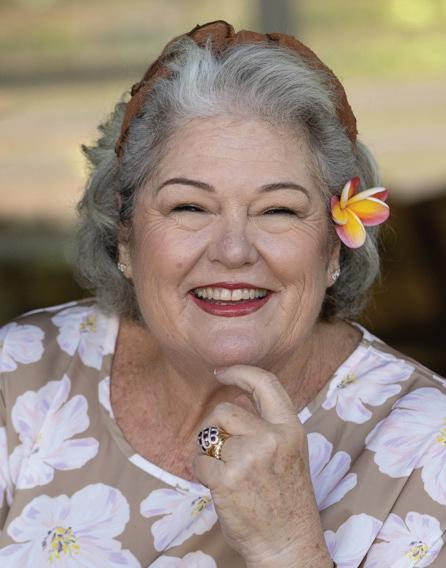






Berkshire Hathaway Home Services
Hawai‘i Realty
46 Ho’olai St. Suite D, Kailua, HI 96734 (808) 368-2714 | KellyLaa@aol.com
www.KellyLaa.com
ERIKA MORI
Swinerton
Swinerton’s Director of Preconstruction and Estimating, Erika Mori, is an accomplished leader with a diverse background in organizational growth, collaborative partnerships, and staff development. She was born and raised on Oahu and attended Punahou School and the University of Pennsylvania. Erika started her career in portfolio trading and asset management at Goldman Sachs in Tokyo and JP Morgan in San Francisco. She then transitioned into construction, where her meticulous approach to budgets, schedules, costs, and client services greatly benefited her projects. At Swinerton since 2014, Erika has held various roles including Senior Project Engineer, Estimator, Project Manager, and Preconstruction Manager. She has specialized in luxury retail construction and successfully managed projects throughout the Royal Hawaiian Shopping Center and Tiffany Waikiki Flagship location. In her current role, Erika leads a team that secures around $300M of construction projects annually. Erika has played a pivotal role in elevating the Preconstruction and Estimating Department into a successful and collaborative team.


Erika Mori
Swinerton
841 Bishop Street, Suite 500
Honolulu, HI 96813
808.347.9621
swinerton.com
emori@swinerton.com
HAWAII BUSINESS 49 Celebrating Professional Women
SPECIAL PROMOTIONAL SECTION

THE KAPĀLAMA CONTAINER TERMINAL IS THE FIRST STEP IN AN AMBITIOUS PLAN TO CREATE A MORE RESILIENT PORT. THE ENTIRE PROJECT WILL TAKE DECADES OF EFFORT AND BILLIONS OF DOLLARS.




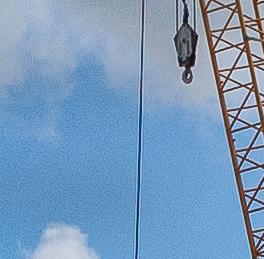




CLIMATE CHANGE,
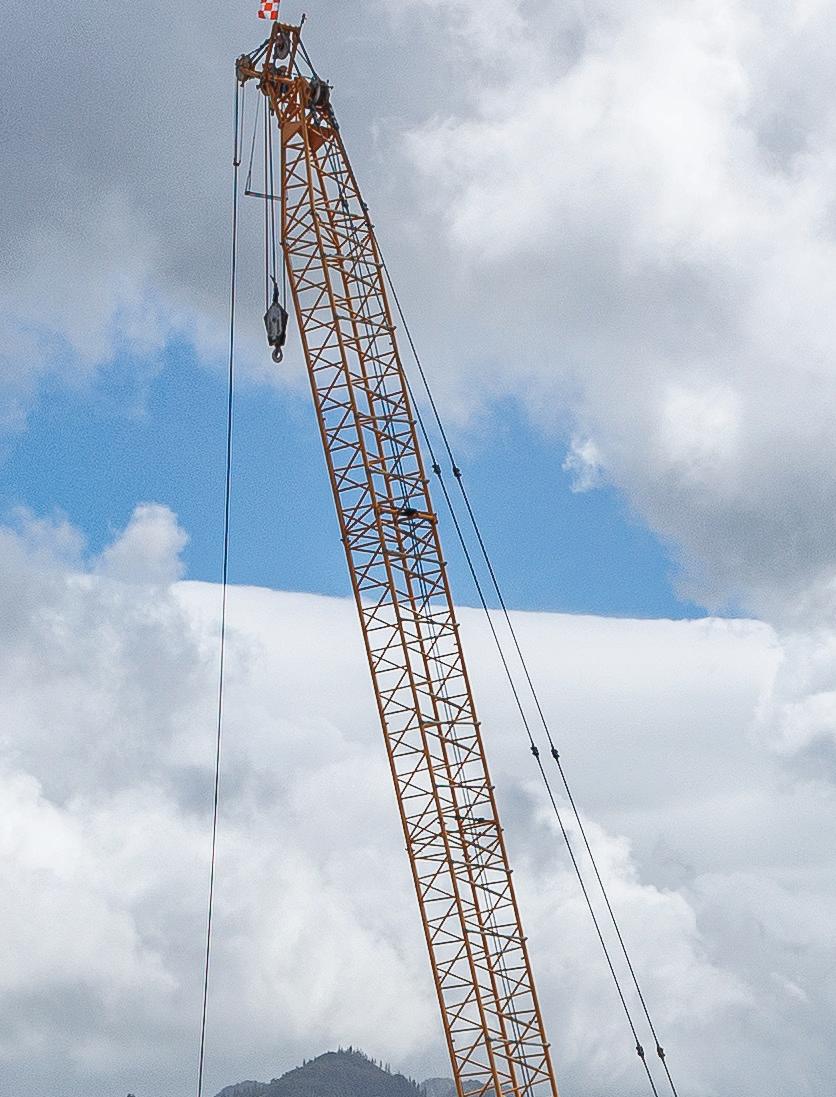
honolulu harbor isn't ready for but it's making strides
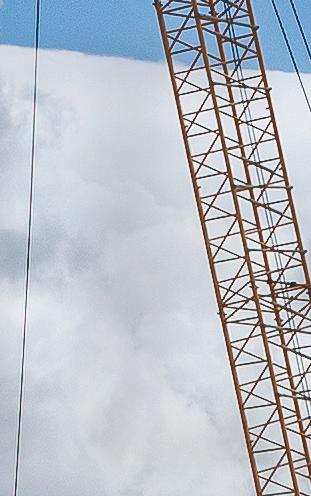

 by CYNTHIA WESSENDORF
by CYNTHIA WESSENDORF

 photography by AARON YOSHINO
photography by AARON YOSHINO
50 OCTOBER 2023

across the channel from the congested northwestern piers of sand island, where more than 800 trucks a day pick up containers packed with the food we eat and goods we buy, a major new infrastructure project is nearly complete.
THE KAPĀLAMA CONTAINER TERMINAL, LOCATED ON THE SITE OF AN OLD ARMY STORAGE AREA, ADDS 86 ACRES TO THE PORT OF HONOLULU . It will be much-needed space for Pasha Hawaii’s cargo operations, which are now crammed into half that acreage on Sand Island. Matson will take over Pasha’s old terminal, extending its current footprint by 44 acres.
But the benefits of this new facility go beyond the extra room for moving containers and roll-on/rollo cargo such as cars. The new terminal is also far more resilient against sea-level rise and natural disasters than the dozens of piers stretching from Kaka‘ako to Ke‘ehi Lagoon.
A heavy, 20-foot-deep slab of concrete now covers much of the new terminal’s massive yard, which rises 3 feet higher than the rest of the harbor. All told, it’s about 11 ½ feet above sea level at its highest point, creating a bu er from the rising ocean and any damaging storm surge.
On the ground near the water’s edge, hundreds of giant, interlocking beams are stored. They’ll soon be used to build a retaining wall that stabilizes the shoreline of the new terminal – an improvement from
the aging Sand Island terminals on the opposite side of the channel.
Those older piers are “built like a deck on a house,” with heavy erosion under the waterline, says Randy Grune, managing director of Hawaii Stevedores. The organization, a subsidiary of The Pasha Group, employs 260 people across Hawai‘i’s harbor system to load and unload cargo.
On a visit in August, construction workers with Kiewit were driving holes into the ground near the bridge to Sand Island, where inserted stone columns will act as “anti-liquefaction in the event of an earthquake,” says Grune. High-intensity vibrations can cause sand to turn to liquid, and the ground at the new terminal includes dredged sand and clays stacked on top of coral rock and limestone.
Solar panels line the roofs of the terminal’s new administrative building, with more panels to come, and five electric gantry cranes will soon harness wind energy using micro-fans that birds can’t enter. The cranes also generate their own electricity with each up-and-down motion.
The site’s renewable energy will be stored in batteries, which allows the terminal to run for “two shifts,” or
HAWAII BUSINESS 51
about 16 hours, says Grune. Rows of electric chargers on the ground can also operate on stored energy, keeping refrigerated containers cool if the power grid fails.
“Technically, the facility is state of the art,” he says. Many of the green-energy features are funded with a $47.3 million grant from the U.S. Department of Transportation’s Port Infrastructure Development Program. The Pasha Group and Hawaii Stevedores contributed an additional $92 million. The final cost of the new terminal is estimated at $555 million.
Grune has been waiting for this terminal to be built since the early 1990s, when the U.S. Army, which built the Kapālama Military Reservation at the start of World War II and packed it with wooden storage sheds, made its third and final transfer of land to the state.
The idea to take over the Army site was conceived as far back as the 1980s, and more formal plans were mapped out in 1997. In the years since, repeated efforts to expand and upgrade this section of the harbor have inched forward and stalled.
Grune says he won’t retire until it’s done. The completion date is scheduled for the first half of 2025.
A NEW HARBOR LEADER
On the top floor of the state Department of Transportation’s Harbors Division offices, near Aloha Tower, Deputy Director Dreana Kalili’s office overlooks the widest section of the harbor, with views of Sand Island on the other side.
Honolulu Harbor is small compared to many others, with narrow passages and a single point of entry and exit. Container ships share the waterway with barges, tugboats, cruise ships, and fishing and charter boats.
It’s a busy port. The U.S. Army Corps of Engineers’ Waterborne Commerce Statistics Center says that 14.7 million tons of cargo moved through Honolulu in 2021, putting it 38th among the 155 principal ports nationwide. (State
statistics report lower figures.)
Most of that cargo moves via smaller container ships measuring 2,500 to 3,500 TEU, or twenty-foot equivalent units. For comparison, the world’s largest container ships are in the 20,000 TEU range – nearly six times bigger than the ones seen cutting past Lē‘ahi (Diamond Head) on their trans-Pacific journey to and from the West Coast ports, and to points farther afield.
Kalili stepped into her new job at the end of 2022 as an appointee of Gov. Josh Green, and she brings years of experience with state and city transportation offices. The Harbors Division oversees and maintains 10 ports on six islands.
Her first and most urgent task was an inherited one: Finish the Kapālama terminal by January 2024. Reality set in when live corals, which are protected by the Clean Water Act, were discovered near the piers and had to be moved. Then, a water line connecting the terminal to Sand Island didn’t work as planned and had to be reconstructed.
Delays plagued the project before her arrival as well. The Harbors Division spent years moving tenants from the former military area, which often involved finding somewhere for them to go and then building or renovating their new locations. For instance, a $17 million renovation of Pier 35, near the “fishing village,” was required before the UH Marine

Center could move its scientific vessels and operations there in 2016.
“I will move heaven and earth to get this done right,” says Kalili of the new Kapālama Container Terminal, as well as a larger plan to strengthen much of the rest of the harbor’s aging, brittle infrastructure. “The terminal is the cornerstone of the harbor’s modernization plan … and since it’s a hub-and-spoke system, the hub has got to work.”
About 85% of everything that Hawai‘i uses is imported, including food, consumer goods, cars and construction material. And 91% of that comes through the state’s harbors, according to April 2023 statis-
“THE TERMINAL IS THE CORNERSTONE OF THE HARBOR’S MODERNIZATION PLAN ... AND SINCE IT’S A HUB-AND-SPOKE SYSTEM, THE HUB HAS GOT TO WORK.”
DREANA KALILI DEPUTY DIRECTOR, HAWAI‘I DEPARTMENT OF TRANSPORTATION HARBORS DIVISION
52 OCTOBER 2023
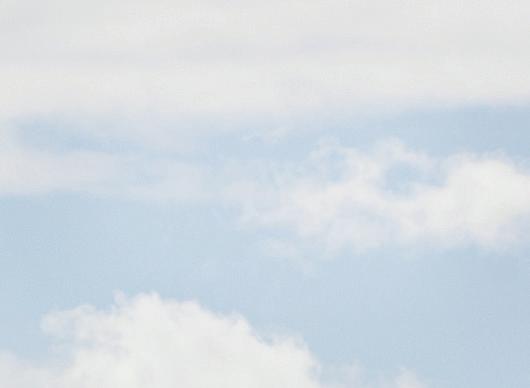
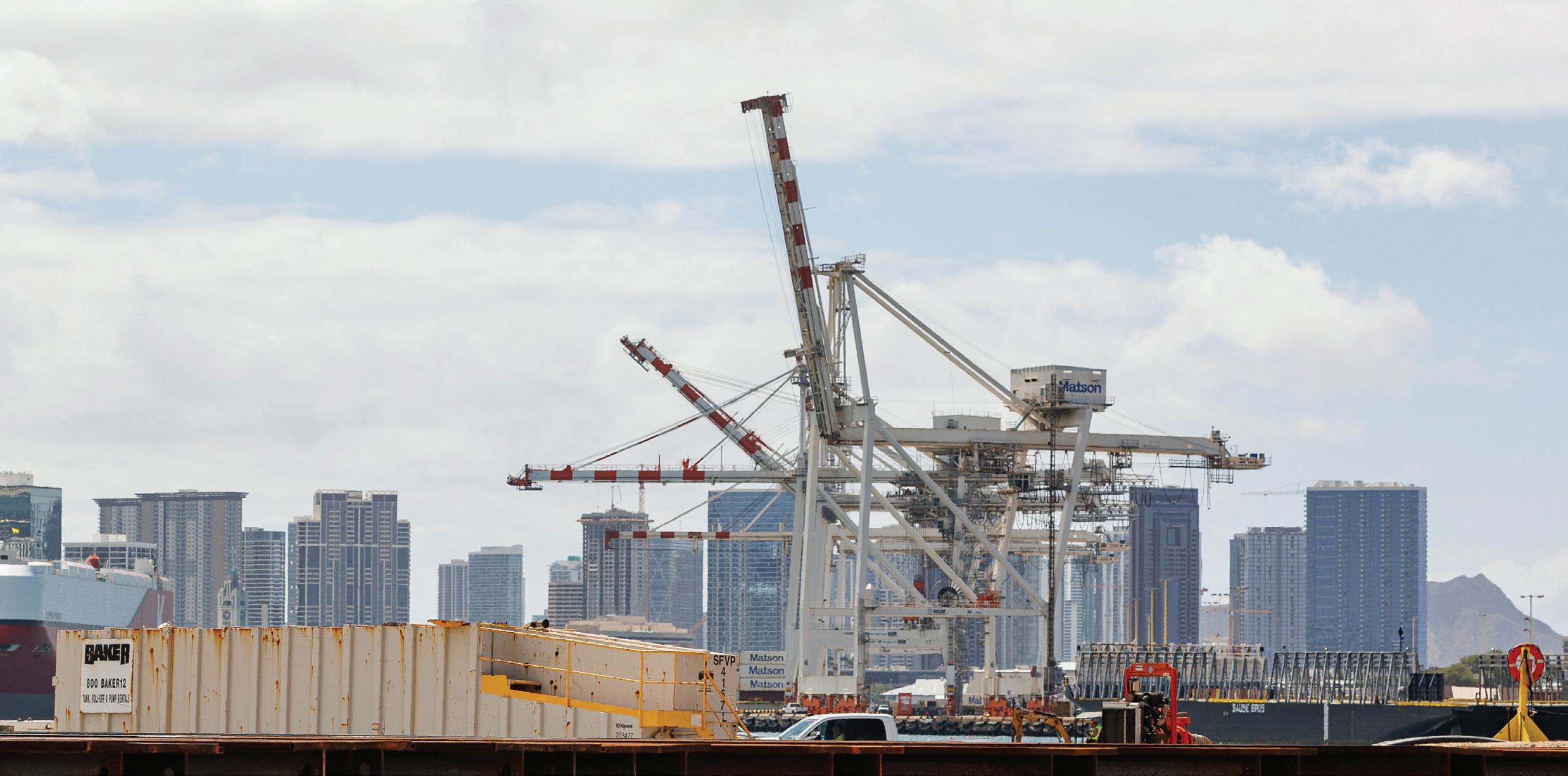
tics from the state Department of Transportation.
And nearly all of that 91% comes through Honolulu Harbor first, with the exception of crude oil that enters through an o shore mooring, according to data from research firm SMS Hawai‘i. From Honolulu Harbor, about 20% of those imported goods are transferred to the Young Brothers’ interisland terminal at piers 39 and 40 for transport by barge to the Neighbor Islands.
If the advantage of that system is e ciency, the disadvantage is increased vulnerability. Hawai‘i is more than 2,550 miles away from the next major port, in Long Beach, California. Honolulu’s port cannot fail.
Yet O‘ahu’s southern shoreline is mostly open coast vulnerable to multiple threats: hurricanes, tsunamis, earthquakes and impending sea-level rise. In 2017, the Hawai‘i Climate Change Mitigation and Adaptation Commission recommended the state prepare for 3.2 feet of sea-level rise arriving as early as 2060. That projection could go higher if glacier melting and ocean heating accelerates.
As head of harbors, Kalili is responsible for making Honolulu Harbor strong enough to withstand rising waters and other potential disasters. The weight of that is so heavy, she says with a slight laugh, that it can make her want to crawl into bed and take a very long nap.
For resiliency ideas, the project’s sole guide is the Honolulu Harbor 2050 Master Plan. The plan, which was created with input from a wide cross-section of stakeholders and released in 2022, makes it clear that sea-level rise and climate change need to be factors in any modernization.
That Honolulu even has a plan puts it far ahead of most ports in the U.S. By 2021, only 10 of about 300 ports had gone through a resiliency planning process, according to one report. Honolulu’s process was well underway in 2021.
But the master plan can be short on specifics. Infrastructure needs to “accommodate” climate change, embrace “flexible design” and be “adaptive” to changing conditions, such as storm surge and flooding from intense rainfalls. Possibilities include raising piers, strengthening yard pavement, installing wave-dampening sea walls and a host of other measures – all adding up to a rough estimate of about $50 billion when finished in 2050.
Currently, the Harbors Division is self-funded, explains Kalili. Operating expenses and capital improvements are paid for with harbor user fees that are levied when a boat en-
ters the harbor, when it docks, when cargo is o oaded. The money goes into a special fund that’s overseen by the state Legislature.
Before Kalili can move forward with a costly and complex plan, she says she needs a scientific assessment of how rising oceans can a ect the nooks, crannies and wide open expanses of the harbor system. She has applied for $3 million in federal money to develop a site-specific “resilience improvement plan” that analyzes what the projections really mean.
“All of these sea-level rise maps just tell me that I might have a problem here,” she says, pointing to a thick line of blue on a map of the harbor. “But there’s no study, there’s no literature that tells me that at this pier, you must do this. Or at this other pier, if you don’t do sheet piles, you can’t move cargo.”
At the end of the process, Kalili hopes to have a detailed plan for 10 priority projects, for which she can then apply for federal infrastructure funding. She expects the most important projects will focus on updating Matson’s soon-to-be expanded Sand Island terminal and increasing the size of Young Brothers’ interisland terminal.
Through this initial process, she’s getting the shipping companies to think far into the future. “In the conversation I’m having with Matson now, we’re planning for 2100,” she says. “What should this
HAWAII BUSINESS 53
BIG CHALLENGES WITH NO ROAD MAP
A view of the Matson container terminal on Sand Island. When Pasha Hawaii moves to the new Kapālama Container Terminal, Matson will expand into the area that Pasha will vacate.
Flooding at 3.2 feet of sea-level rise at Honolulu Harbor in 2100. The map was developed in 2017, based on projections from the 2013 Intergovernmental Panel on Climate Change (IPCC). At the time this was considered a high-end projection, but recent data points to 3 or 4 feet of sea-level rise by 2100 as a mid-range projection for Hawai‘i.
terminal look like in 2100? And what do we build in 2023?”
Sea-level rise presents so many variables and unknowns, she says: Will the container ships still make it into the port? Will the cranes be serviceable? Exactly how high should piers be elevated? Will higher piers create runoff into surrounding neighborhoods? How will stormwater drain? Can trucks safely make their way downhill from the piers to the low-lying roads?
And the biggest question of all: “Are these harbors still going to be working?”
CLEANER FUELS FOR SHIPPING
While Hawai‘i’s shipping companies help pay for harbor improvements, they take a background role in infrastructure decisions and build-out.
But both internationally and locally, the maritime industry is
actively working to reduce its dependence on fossil fuels, and thus reduce its contribution to climate change and sea-level rise. The International Maritime Organization recently set a target of reaching net-zero emissions by “close to” 2050. Shorter-term goals include a 20% reduction in emissions by 2030.
There’s still a long way to go. A recent report from the Global Maritime Forum and other organizations found that 95% of ships are still powered by petroleum products, such as heavy fuel oil, marine gas oil and marine diesel oil.
Hawai‘i’s largest shipping companies are doing better than that. Matson is converting four ships on its Hawai‘i lines to run on cleaner-burning liquified natural gas, and it has commissioned the building of three new cargo ships that are LNG-ready.
At The Pasha Group, Kai Martin, VP for strategic programs, says the company is already operating two new LNG-powered vessels that far exceed international guidelines.
LNG fuel releases 25% less greenhouse-gas emissions than traditional ship fuel, says Martin. In addition, nitrogen oxides are reduced by 90% by using an exhaust gas recirculation system in the main engines. The underwater hulls are “hydrodynamically optimized” to require less energy.
“But the most significant and immediate positive impact is in the reduction of pollutants, especially in the port communities,” he says. “Sulfur oxide, which creates acid rain, is reduced by 99.9%. Particulate matter, which is responsible for respiratory disease, is reduced by 99.9%.”
Martin says that at this stage in the energy transition, the cleanest “green methanol” fuels aren’t yet feasible for Pasha’s fleet. Its vessels are too small to store the amount of fuel needed to power them, and too removed from the limited supply sources. But the company’s environmental commitment is strong, he says.
“Pasha is leaning forward in the transition of the transportation
54 OCTOBER 2023
MAP SOURCE: HAWAI‘I SEA LEVEL RISE VIEWER, VERSION 1.11. PREPARED BY THE PACIFIC ISLANDS OCEAN OBSERVING SYSTEM (PACIOOS) FOR THE UH SEA GRANT COLLEGE AND THE STATE DEPARTMENT OF LAND AND NATURAL RESOURCES, WITH FEDERAL FUNDING FROM NOAA
=
SAND ISLAND
MOKAUEA ISLAND
KAHAKA ‘AULANA ISLAND
HONOLULU CHANNEL KEWALO CHANNEL
HONOLULU HARBOR
KALIHI CHANNEL
sector to cleaner operations, on the water, in terminals and over the road,” says Martin.
At the new Kapālama Container Terminal, for instance, containers arriving from the West Coast and designated for the Neighbor Islands will be transported to the interisland terminal over water. Randy Grune of Hawaii Stevedores estimates that will take 50,000 truckloads a year off Nimitz Highway, which is “better environmentally, less of a nuisance and more efficient.”
IMAGINING THE WORST
While most goods come to the Islands via ship, the port is just the point of entry. The supply chain extends farther, to a network of roads, distribution centers and even communications systems.
Isolated islands are especially vulnerable to supply chain failures after disasters, says Karl Kim, Ph.D., a professor of urban and regional planning at UH Mānoa and director of the Disaster Management and Humanitarian Assistance graduate program. He’s also the executive director of the National Disaster Preparedness Training Center and has conducted damage assessments and debris management across the globe.
For Hawai‘i, a relevant example is Puerto Rico. Kim studied the infrastructure breakdown after Hurricane Maria’s powerful winds leveled much of the island and rain flooded
communities in 2017. The ports, roads, power and communications fell apart, leaving the island chain in crisis for months.
Those same conditions exist in Hawai‘i, he says. Roads could flood from storm surge, soon to be exacerbated by sea-level rise. The airport could be underwater. Links to other states via rail or superhighway don’t exist. And the closest ports in California are farther away than the one that Puerto Rico depends on, in Jacksonville, Florida.
But maybe worse of all is that Hawai‘i doesn’t have a stockpile of food and water. The operations plan of the Hawai‘i Emergency Management Agency says the state only has five to seven days of emergency supplies.
Hawai‘i’s “just-in-time” logistics system requires 14 days for goods shipped from the continental U.S. to make their way to store shelves, says the HI-EMA operations plan. When ships continue their regular sailings and trucks make regular runs, everything is fine. The Costcos and Foodlands across the Islands continually restock with fresh infusions of goods.
But their shelves and on-site storage areas are also where nearly all of the “five to seven days of food supply” is located. A disaster would immediately disrupt the supply chain and put people in peril.
“From my perspective, islands in particular need to rethink just-intime supply chains,” says Kim. He advocates for “resiliency hubs” located across the islands. They could house emergency food and water, and provide electricity for charging
“THE MOST SIGNIFICANT AND IMMEDIATE POSITIVE IMPACT IS IN THE REDUCTION OF POLLUTANTS, ESPECIALLY IN THE PORT COMMUNITIES.”
KAI MARTIN VP FOR STRATEGIC PROGRAMS, THE PASHA GROUP
devices and cellphone service.
Because an island’s resilience depends on the resilience of ports and supply chains, “we should invest more in terms of disaster logistics,” warns Kim.
One of the worst disasters facing Honolulu Harbor is a scenario similar to when Hurricane Iniki hit Kaua‘i in 1992, says Kwok Fai Cheung, Ph.D., P.E., a professor at UH Mānoa’s Department of Ocean and Resources Engineering. He has spent years studying how waves, currents and storm surge interact to impact shorelines.
Here’s what could happen: A Category 4 hurricane makes landfall around ‘Ewa, on O‘ahu, when the tides are high. In the northern hemisphere, hurricane winds move in a counter-clockwise direction, so the strongest winds would lash more urban areas to the east, such as Honolulu Harbor, says Cheung.
Winds would be a factor in the flooding, but not the only ones. Hurricanes are low-pressure systems that lift the ocean’s surface water by up to 3 or 4 feet. That water moves under the hurricane, increasing the water level of the ocean. Winds blowing toward the shore push the water up further, while offshore waves of 30 to 40 feet intensify the storm surge.
Over several hours, the result would be extensive flooding across the low-lying urban coastline of Honolulu. Sea-level rise would compound the impacts and make the event even worse as “a thicker water layer allows larger waves to reach the shore,” says Cheung.
WHERE ARE THE BIG IDEAS?
Cheung says worst-case scenarios are great for emergency preparedness, and the one he lays out has a 0.1% chance of happening every year. “But for engineering design, you have to look at the probability of an event occurring and the cost of designing for it,” he says.
He doesn’t think many of the big, ambitious coastal infrastructure projects happening elsewhere
HAWAII BUSINESS 55

About 85% of everything Hawai‘i uses is imported, and most of it first enters through Honolulu Harbor’s main channel, seen here. Aloha Tower appears in the centerleft distance, with Sand Island Recreation Area at left. On the right is the Fort Armstrong Terminal, which handles cruise ships and foreign cargo.

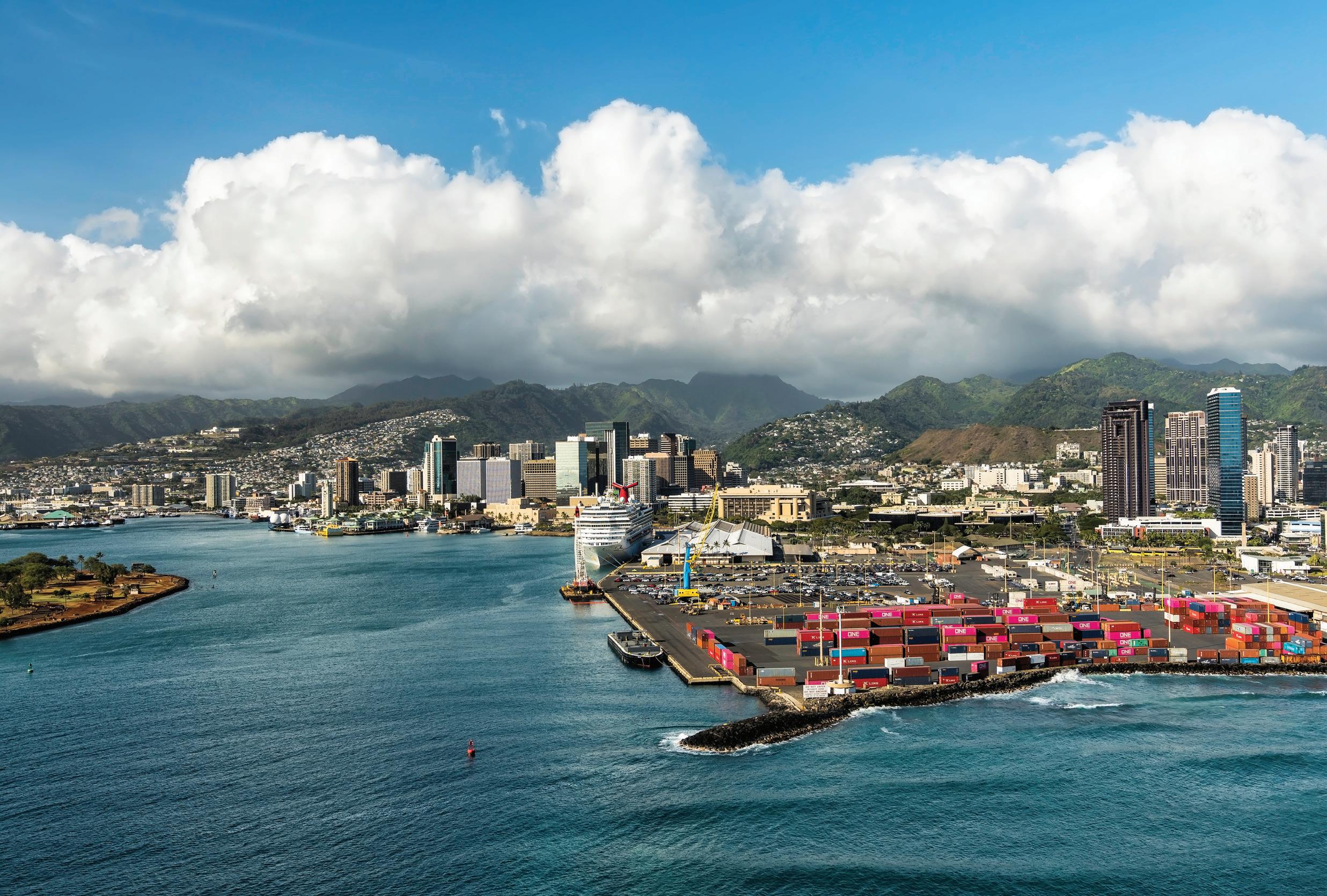
in the world – often erected after widespread destruction and loss of life from flooding – are feasible in Honolulu, where the coastline is exposed to open ocean.
Many port cities lie inland, linked to the sea by rivers and waterways. Venice, for example, installed a series of barriers to protect it from flooding during exceptionally high winter tides. Rotterdam in the Netherlands has installed an immense storm-surge barrier where a main waterway meets the North Sea. And in the swamplands around New Orleans, a 130-mile ring of floodgates and strengthened levees – the “Great Wall of Louisiana” –was completed in 2022.
In Honolulu, the U.S. Army Corps of Engineers has been studying the feasibility of a lock-and-dam system to protect the harbor. Kalili of the Harbors Division thinks the idea has been ruled out, though a proposal to create a second harbor entrance/exit by elevating the Sand Island bridge, or replacing it with a drawbridge, is still being investigated. The Army
“from my perspective, islands in particular need to rethink justin-time supply chains."
KARL KIM
PROFESSOR OF URBAN AND REGIONAL PLANNING, UNIVERSITY OF HAWAI‘I AT MĀNOA
Corps of Engineers did not reply to email inquiries.
In reporting this story, Hawaii Business Magazine also reached out to shipping companies, the Honolulu Harbor Users Group, a civil engineering firm, coastal specialists, a maritime consultancy, emergency management leaders and others. Most never replied; others said they couldn’t comment or that they didn’t know enough to assess harbor challenges and possible solutions.
Sea-level rise comes slowly, over decades, but it’s already a ecting the harbor. The Honolulu Harbor 2050 Master Plan notes that many
drainage outfalls in the harbor are already partially or completely submerged during high tides and king tides, resulting in drainage system backups that can cause flooding upstream. The Harbors Division’s baseyard adjacent to Sand Island Access Road and Ke‘ehi Lagoon also regularly floods during high tides and king tides – a portent of worse to come.
The problem now is finding the best solutions. As Kalili notes, Honolulu Harbor cannot fail, yet how to make it resilient is still unclear.
“When it comes to sea-level rise,” she says, “no one really knows what to do about it.”
56 OCTOBER 2023
/
PHOTO: MARCHELLO74
STOCK VIA GETTY IMAGES
AI IN HAWAI‘I
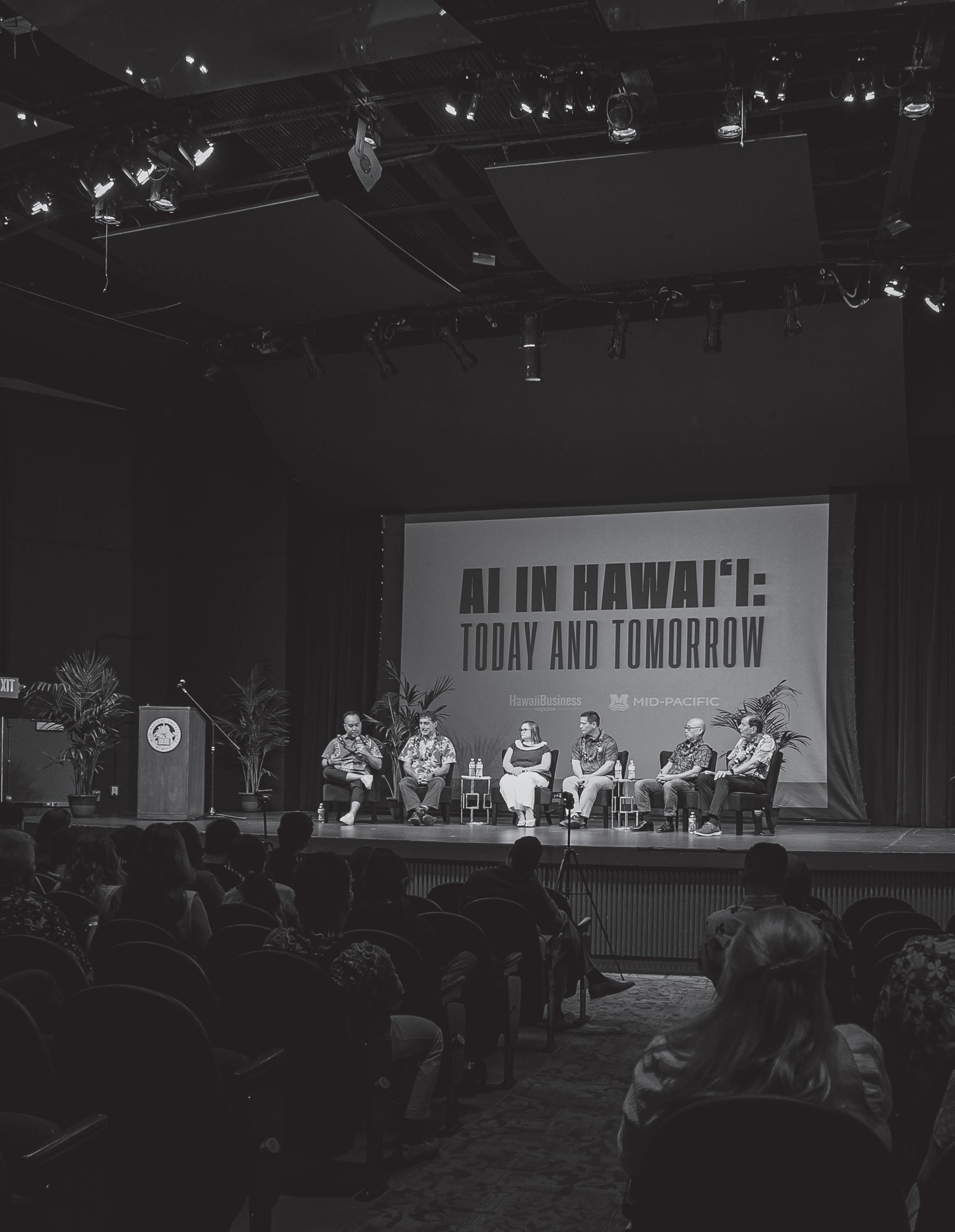
A thoughtful discussion with local experts covering artificial intelligence’s use now by businesses, nonprofits and government – including practical everyday applications
BY STEVE PETRANIK
PHOTOGRAPHY BY AARON YOSHINO
//
n Aug. 30, Hawaii Business Magazine gathered local experts on artificial intelligence to discuss AI in Hawai‘i at Mid-Pacific Institute’s Bakken Auditorium before an audience of students, educators and other adults. This is a condensed and lightly edited version of that discussion, which I moderated.
PETRANIK (editor and executive publisher of Hawaii Business): Before I start my questions, a quick poll of the audience and panel. Many of us have mixed feelings on AI, but my question is: Which way do you lean, more excited or more scared? First, a show of hands from everyone who is generally looking forward to AI and its uses. (pause) I see three-quarters of the audience and everyone on the panel is more excited than scared. OK, who is with me and more scared than excited? (pause) Just a quarter of the audience.
We have high school students in our audience, so let’s start my questions with AI and education. Mark, if I was a teacher, I would be terrified my students would use AI to do their homework instead of doing it themselves. But you are excited about AI in education. Tell us why.
MARK HINES (director of the Kupu Hou Academy at Mid Pacific, with a doctorate in educational technology and over 40 years of experience as a math, science and technology teacher and technology coordinator): As a proponent of student-centered learning, I think concerns about cheating are tied to structures in lots of schools that make teaching and learning in classrooms in 2023 look almost identical to classrooms of 1923. Yet, our understanding of learning has evolved. So the kind of work we give students is the key to that answer.
I ask adults who cheated, “Why did you cheat?” They said, “Because the work didn’t have meaning. For me, it was busy work.” Students, I hope your experience has not been like that. Part of the work I do in the community is helping teachers and schools think about how to create learning that’s meaningful, because when something’s meaningful, we’re willing to do the work.
Kids will spend the entire weekend learning to do a skill they really want. So when there’s meaning, the work is worth doing. The harder answer for
educators to nuance out is, “In what ways can we create learning that cheating isn’t an option, because the work has meaning for students.”
PETRANIK: Ed Sniffen, as director of the Hawai‘i Department of Transportation, you and your team are responsible for the state’s transportation infrastructure, including our highways, airports and commercial harbors. How are you using AI?
ED SNIFFEN: For a state agency in transportation, there are tons of data coming through daily that we can act on. Previously, our modus operandi was to make sure we reacted to things, to make sure as few of you as possible got stuck in traffic and as many of you got to your
58 OCTOBER 2023

destinations as safely and as efficiently as possible.
We had to transition from being reactive to being proactive, but we can’t be proactive with all that data, no matter how many people we hire. So we use AI as a filter, making sure we can get all that data into an AI system where we can consume it and make decisions. We had to train our AI platforms to ensure they helped us act before an incident or accident, to prevent it.
PETRANIK: Does more data make your AI better?
SNIFFEN: Yes. In the past, we would hold off on collecting data because we couldn’t do anything with it. But as we advanced in the way we filtered our data, we started pulling in more data and
worked with Oceanit and then PICHTR (the nonprofit Pacific International Center for High Technology Research) and enlisted high school students to help us and to provide us with different sets of eyes.
PETRANIK: I want to take another poll, this one only for students. As you think about what career you might want, are you also thinking about how AI is going to influence that career, whether it changes the nature of the job or eliminates some jobs in that field? If yes, raise your hand. (pause) That’s about every student. Are there any students who are not thinking about how AI is going to impact their possible career? (pause) Just one.
Summer Rankin is a computational neuroscientist who investigates the boundaries of AI and drives data science solutions for federal government clients. She has a doctorate in complex systems and brain sciences and works as a senior lead data scientist at Booz Allen Hamilton’s Honolulu Chief Technology Office. Summer, how are you and your colleagues using AI in Hawai‘i?
SUMMER RANKIN: I started in D.C. at our sort of headquarters, and they moved me here three years ago because we wanted to build an AI team. We’ve gone from just me to almost 30 people. We have a lot of projects that involve AI building models, data strategy and many other things. And not just focused locally, but we are very connected to our colleagues in Japan, D.C., California and elsewhere because our clients are also global.
Things we work on here include building a search engine for old documents that are now just hard copies, and they need to be scanned in and stored, and they need a search engine too. The scanning is a separate thing called optical character recognition. That’s like computer vision.
HAWAII BUSINESS 59
Mark Hines of Mid-Pacific Institute, right, says AI will only increase everyone’s need to learn the difference between good and bad sources. Chase Conching is on the left.
We also build chatbots, maybe for clients that have a public facing website where they want citizens to engage, so they need a Q&A thing.
And we use computer vision to detect things in images and video – think drone videos or tra c cameras. And there’s also a lot of digital signal processing – acoustic signals where you can detect the presence or the absence of something using a time series analysis and anomaly detection.
We work with health care. I did a project with the FDA where we looked at adverse events following blood transfusions by analyzing health records. We looked for anomalies using NLP (natural language processing) to find out, basically: Where did the doctors not know this or that was the reason for an outcome until after the fact?
Another thing we do, especially for local folks, goes by a lot of names including “digital transformation.” It can be when someone says, “We want to be in the cloud, but right now, we’re doing everything on local computers.” We go in with a team and do a whole assessment: interview people to understand where they are, where they want to be, write reports, make recommendations and maybe help with implementation.
We’re also becoming an AI advisor to people about: Which model is less biased? Which model is more ethical? Because, make no mistake, we call it AI but these large language models are built on the backs of humans to give it the guardrails that it does have.
PETRANIK: Ian, when I started planning this panel, you were the first person I
thought of because you’re well informed about local innovations and you are also forward thinking. So tell us about AI in Hawai‘i.
IAN KITAJIMA (an executive with over three decades of experience in the innovation and development of advanced technologies, including 21 years at Oceanit. Today, he is the president of PICHTR, the Pacific International Center for High Technology Research, a Honolulu-based nonprofit): When I think of innovation in government, I think of Ed. When I was at Oceanit, we held an event to show how artificial intelligence could be used and one example was on classifying vehicles. Ed saw that and he said, “I want to look at how to apply AI to our tra c studies.” So early on, we worked with him and his team to apply artificial intelligence/machine visioning to tra c studies along the Nānākuli-Wai‘anae corridor.
Later he asked: “Can you do speed studies using this technique?” So we did speed studies in that area and eventually along Pali Highway. Now the technology is on smart intersections: How do you create analysis around how close vehicles are getting to each other and to people – are the vehicles getting heart-stoppingly close to pedestrians? Because if you quantify that and you see numbers going up, you’re going to have an accident.
We’re going to use dashcams with students to do road maintenance analysis. I think there are so many potential applications.
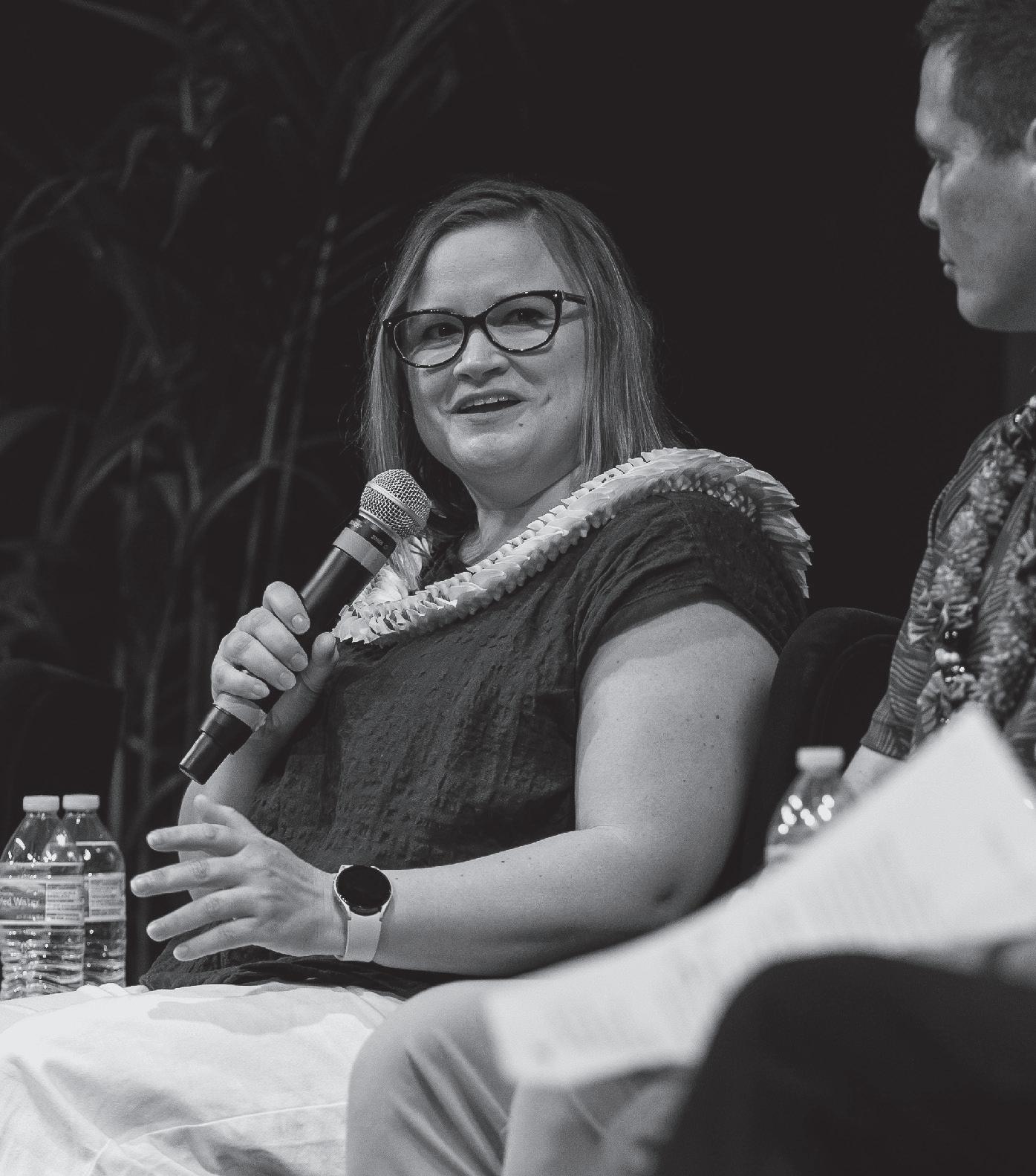
60 OCTOBER 2023
Summer Rankin, left, says every new technology eliminates some jobs and creates others – and AI will also do that.
PETRANIK: Chase, your work involves helping local businesses, nonprofits and the community. You did a lot of work using tech and innovation to help the community during the peak of the Covid pandemic in Hawai‘i. How are you using AI now?
CHASE CONCHING (principal and creative director of Library Creative, an aio Digital company and sister company of Hawaii Business): At Library Creative, we’ve been using AI tools, tools like ChatGPT, Claude, Midjourney and Stable Di usion to kickstart our creative process when we’re working with clients. If there’s a branding project, a website or marketing project we’re getting off the ground,
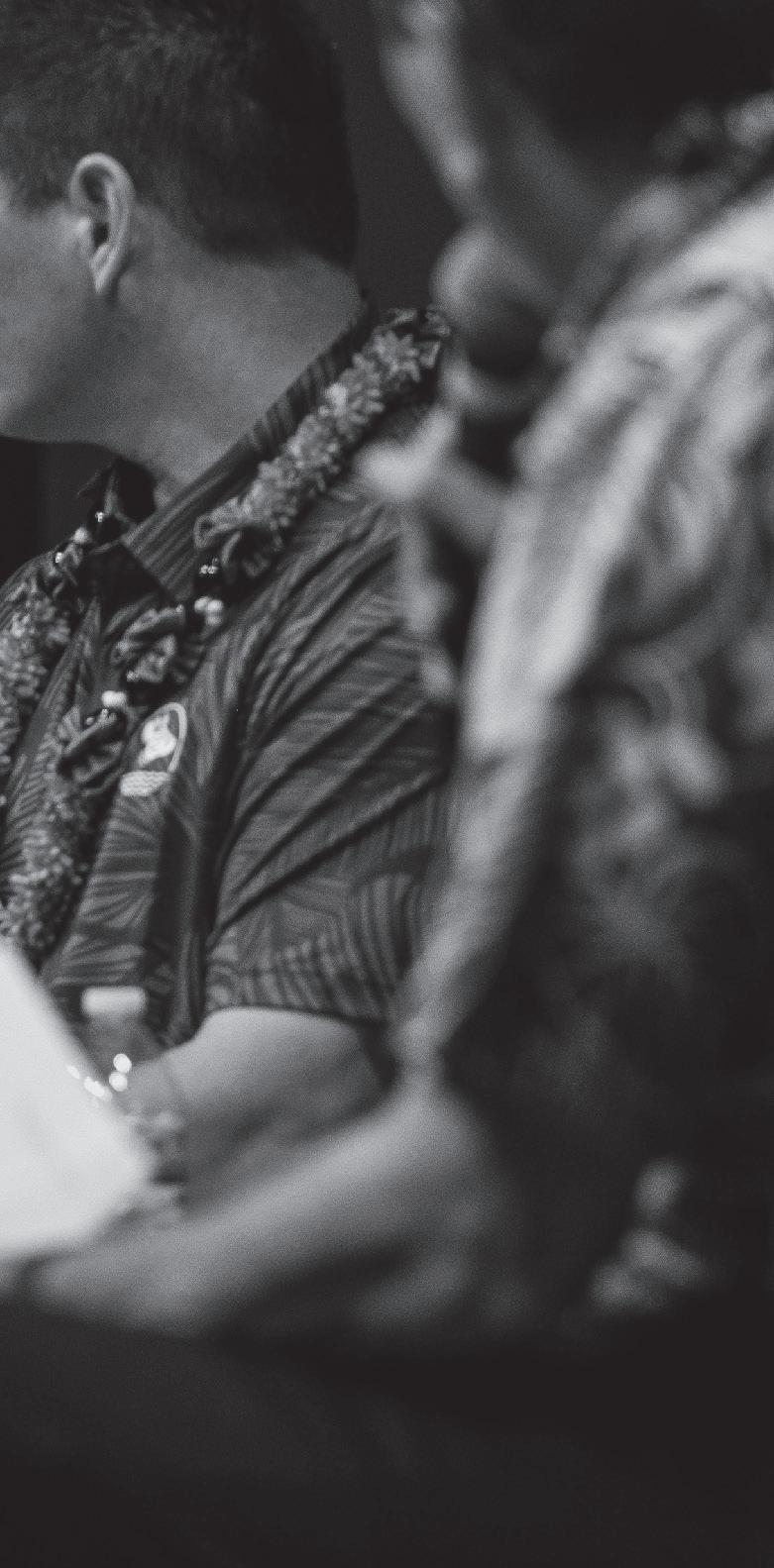
Preparing Your Small Business for the Unexpected
AS A SMALL BUSINESS OWNER, YOU KNOW
firsthand how important it is to be prepared. Having a reliable plan in place can make all the difference during difficult times. That's why Central Pacific Bank is committed to providing advice and solutions that help entrepreneurs remain resilient and successful.
We are here to support your business through any challenge, including navigating the aftermath of disasters. In response to the heartbreaking wildfires on Maui, our Loan Payment Deferral Programs provided those affected with valuable breathing room, allowing them to focus on recovery without the immediate financial burden. And our Natural Disaster Loan Program provided swift access to funds, up to $10,000, at special rates and with flexible terms. This ensured that people had the financial support they needed, precisely when they needed it.
If a local branch was not accessible, they were able to easily access their accounts through our top-rated mobile app or online banking.
We also worked to ensure that impacted businesses were
aware of the Small Business Administration's (SBA) disaster assistance loans, which can be a lifeline during challenging times. Our knowledgeable business banking team is well-versed in these resources and able to provide expert guidance throughout the application process.
Whether you’re facing natural disaster or the normal ups and downs of business, we embrace a personalized approach. We understand that each business is different, and your needs are our priority. Our business banking experts are prepared to listen, provide appropriate advice, and deliver solutions that fit your goals. We’re here for you.
HAWAII BUSINESS 61 HAWAII BUSINESS 61
we’ll use AI to help us brainstorm ideas. It’s not meant to replace your work as a human but allows you to do those uniquely human tasks, the creative and empathetic tasks, by automating what I call the four D tasks – those that are difficult, dangerous, dirty and dull – tasks that humans really shouldn’t be doing.
By automating those tasks, we’re able to focus on things that are of higher value to us while building things for our clients. Like Summer said, we are helping to build things like customer service chatbots and data projects – first and foremost doing things responsibly, equitably and ethically. That includes things like data privacy for our financial or health care clients, and making sure we have humans on both ends who double check the responses that these AI language models are producing.
Also exciting is the work we’re doing on the community front, especially in the Native Hawaiian community, which I think has been underserved when it comes to new technologies. In one case, we’re discussing how we can use AI models and drone photography in Hawai‘i to optimize crop yields and water management.
Another cool thing we’re helping to work on is to create an accessible digital Hawaiian dictionary that businesses and state agencies can tap in to, to ensure they’re using Hawaiian words correctly and authentically on their websites, for example. AI makes possible things that previously have been hard to accomplish.
PETRANIK: Mid-Pacific asked its students to submit questions for this event and
Ed Sniffen, center, says students should learn to use AI “because when you come to the workforce, I’m going to expect that you’d be using that tool for us as well.”
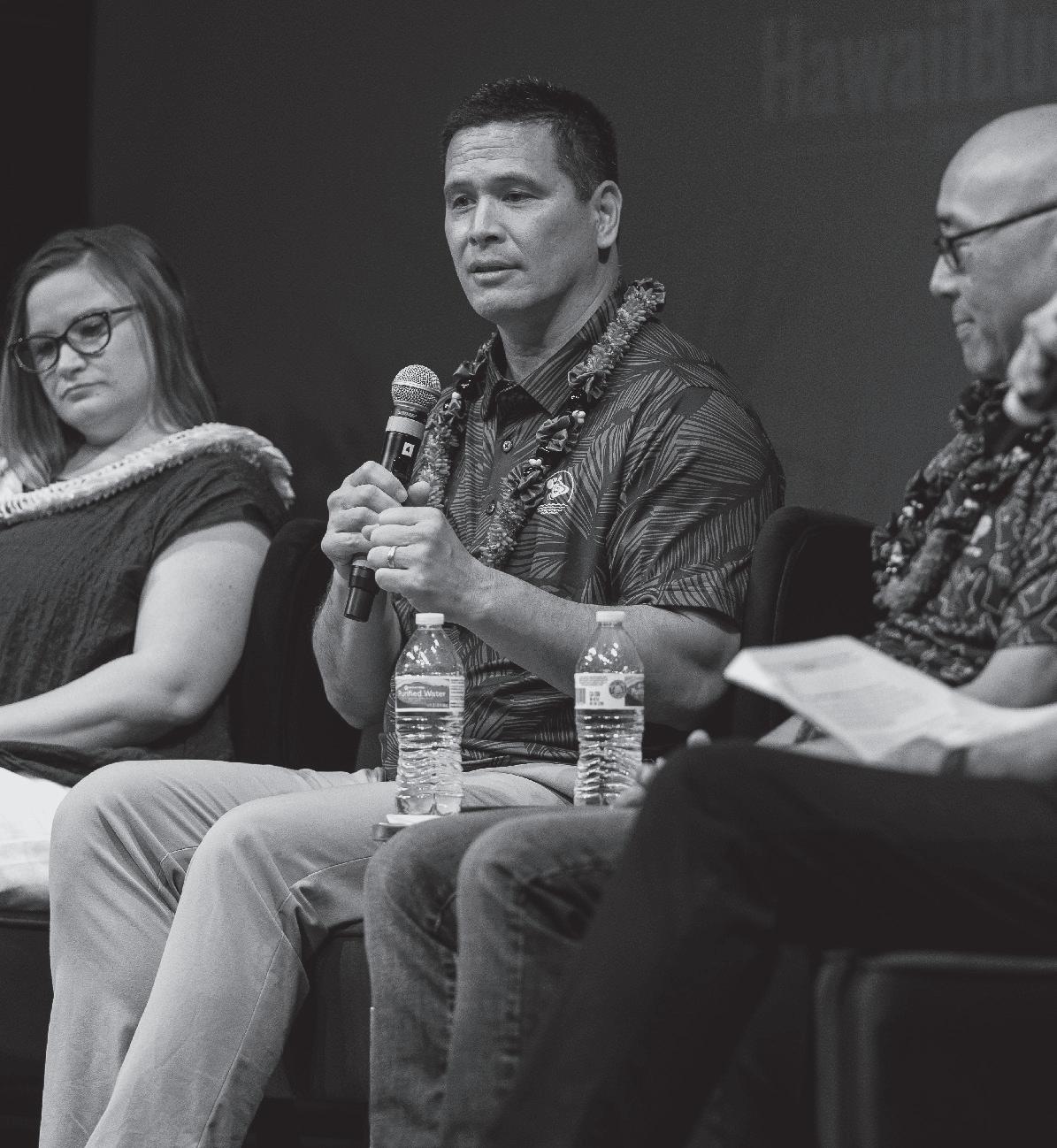
we got a lot of great ones. One theme that had multiple questions was about controlling the dangers of AI. How do we restrict AI from being used for malicious purposes? How do we avoid losing control over AI –to prevent it from taking over decision-making from people?
RANKIN: ChatGPT is amazing, I love it, but it’s not “The Terminator.” We’re not there yet and we may never get to true artificial general intelligence.
I think that what AI can be and is being used for a lot of the time is to help us understand the data around us faster, and potentially more accurately, so then humans can make decisions. A lot of people in AI are very, very committed to keeping major decisions with humans across the board. There’s a lot of skepticism against putting AI models in place of a human when it comes to big decisions. I think that’s basically how we avoid that. I don’t see a huge appetite for turning over control to AI.
The other thing we can do – and this is a society question – is people have to be held accountable. If you drive a car, and the car malfunctions, then the maker of the car is held accountable. If your AI model is hurting people or behaving in a way that you did not tell people it was going to do, then that should be your responsibility.
It’s important for people to think twice about what models they use and when and where they’re using them. What data was it trained on? Yes, there are going to be bad actors. I don’t know the answer to that because we don’t regulate free speech and we don’t regulate the internet in that way. But people do moderate places on the internet and you want to go to places that are moderated, so AI models will go the same way.
We have to think about what model to use. I’m not going to use a generative AI model to pull out a fact. I might use a search engine to pull up a document that I then read, but I’m not going to expect a generative AI model to give me this accurate information. We need to get understanding about that to people – consumers, students and developers. They have
62 OCTOBER 2023
to understand that generative AI should not be used for that purpose. (Definition: Generative AI models learn the patterns and structure of their input training data and then generate new data that has similar characteristics.)
SNIFFEN: As to whether you should use AI in school: I say absolutely. You should use every tool that’s available to you, however you can, because when you come to the workforce, I’m going to expect that you’d be using that tool for us as well.
PETRANIK: Another common theme in the students’ questions are jobs. Will AI leave enough good jobs for humans?
SNIFFEN: We are short 25% of our workforce and that’s just in the Department of Transportation. Across the engineering industry, there’s that shortage as well. So the answer is absolutely no: It’s not going to take away jobs, especially high-paying jobs within the industries that we work in.
But it’s going to make your jobs way, way easier. Allowing AI to do its job gives you the flexibility or the freedom to express your creativity and your critical thinking because you don’t have to consolidate all the data before you make decisions.
HINES: It goes back to what I mentioned earlier about models of education. One thing we are doing at Mid-Pacific – I know this is true for many schools – is moving away from thinking of learning as passing along a canon of facts.
Instead, we help develop human potential, giving each student an opportunity to develop their own creative potential to know what they are passionate about and what they want to do.
KITAJIMA: I think it was Alvin To er who said: The illiterate of the future will be those who cannot learn, unlearn and relearn.
RANKIN: Every generation has advances in technology that make certain jobs go away and certain jobs come up. When I was a kid, you could get a job just typing stuff for people. You probably wouldn’t hire a full-time person to do that now. So think about AI as more of a catalyst for new jobs, rather than killing old jobs – allowing people to do something different.
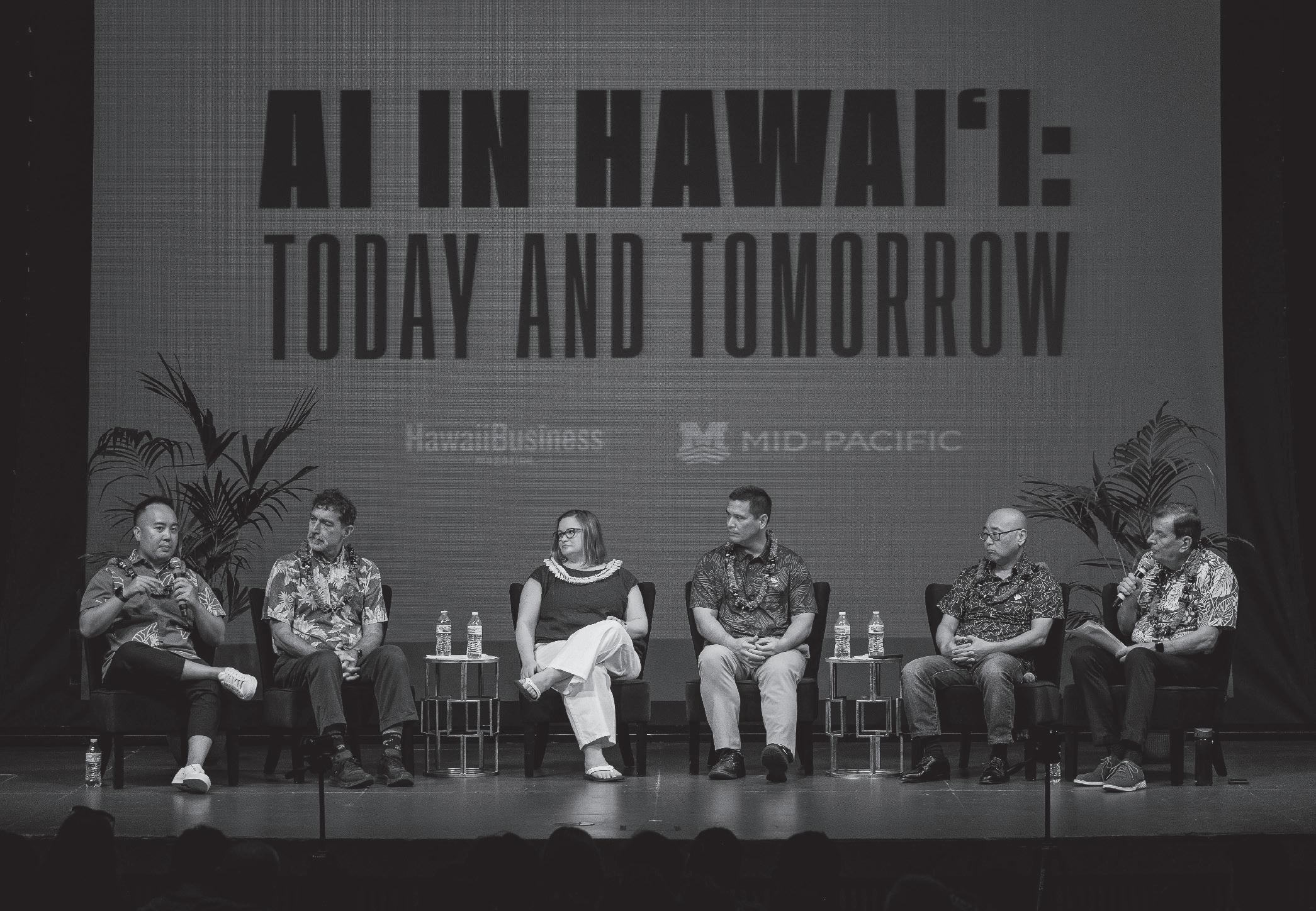
HAWAII BUSINESS 63
Chase Conching, left, says he is using an iPhone app called Pi that let’s you have more emphathetic conversations with AI than other models he has tried.
PETRANIK: Can I add something else to your education plate: We need a values firewall, because it’s the values you bring to AI that determine how it’s going to be used.
HINES: So many schools feel like, “We need to do values education, so we need a valid ethics course.” It was treated in the way that schools always take things apart and say, “We’ll train that skill as a separate thing.” But we talk a lot about embedded values – learning in integrated approaches – because that ties the learning together with why it’s worth learning and why it’s worth bringing values to the work you do. So that needs to be part of
the entire learning experience, not just a course in ethics. Not that that doesn’t have a place.
RANKIN: I couldn’t agree more. Especially at the university level, we used to joke about how, if you’re a computer engineer, you don’t even take an ethics course – that’s just not part of the discourse. And we often say that might be contributing to part of the problems that we’re having today is because we have these people who aren’t really thinking or necessarily educated in what we call social sciences and thinking about ethics. And it should be a thread throughout, especially for developers, but also U.S. citizens and end users and consumers thinking about the ethics. It’s not “Can we do it?” It’s more like, “Should we and how?”
PETRANIK: Another common theme in the questions submitted by Mid-Pacific students was: How do we protect ourselves from misinformation spread by AI? Social media has already undermined our democracy; will AI destroy it?
HINES: When I hear these kinds of questions, I think: Is there a past corollary to that? Back in the ’80s and ’90s, we had encyclopedias and that was knowledge. And we had the National Enquirer, and that was knowledge too. (audience laughter) As a science teacher, I remember conversations with students about “I heard about aliens being kept here,” or I heard “That’s going to cure this particular illness.” I would ask: “Where did you get that from?”
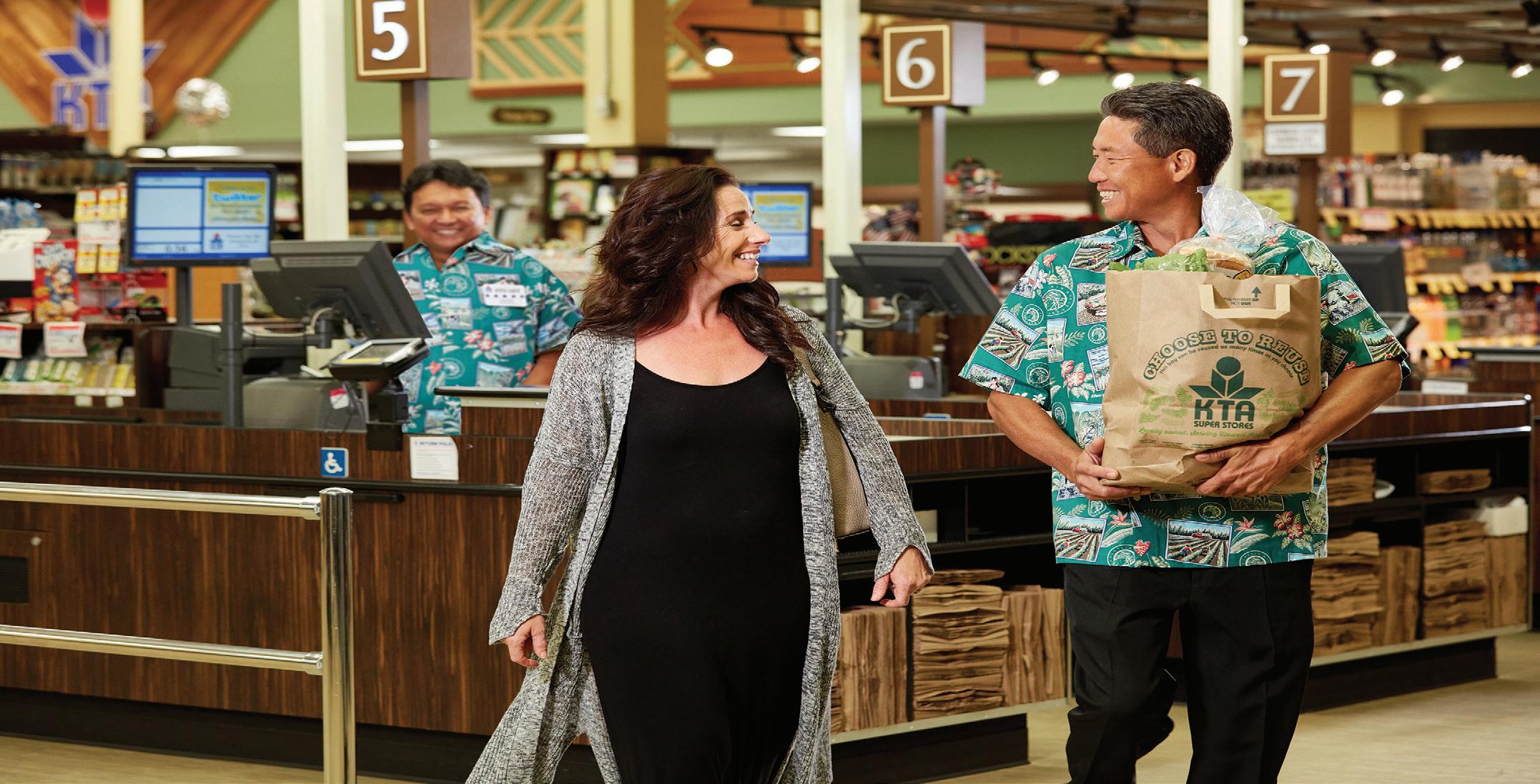












64 OCTOBER 2023
Downtown, Hilo 808-935-3751 Puainako, Hilo 808-959-9111 Waimea 808-885-8866 Waikoloa Village 808-883-1088 Kailua-Kona 808-329-1677 Keauhou, Kona 808-322-2311 Express, Kealakekua 808-323-1916 KTA Delivery in Hilo delivery.ktasuperstores.com KTA Super Stores is Hawai‘i’s locally owned & operated one stop shop, serving Hawai‘i Island’s grocery, household and pharmacy needs for over 105 years! www.ktasuperstores.com Devoted to the community since 1916.
Misinformation has always been with us. I think schools have realized students need more than just a one-time interaction with a library specialist who will tell them how to tell the di erence between good sources and bad sources. I love the work of Howard Rheingold, who talked about crap detection, pardon my language. Everyone needs a good crap detector.
We need a set of skills that help us ask, How do I know that what I’m reading is factual?
PETRANIK: Here’s an interesting question: Will AI promote the loss of human connection? I think social media has already undermined human connections in many ways.
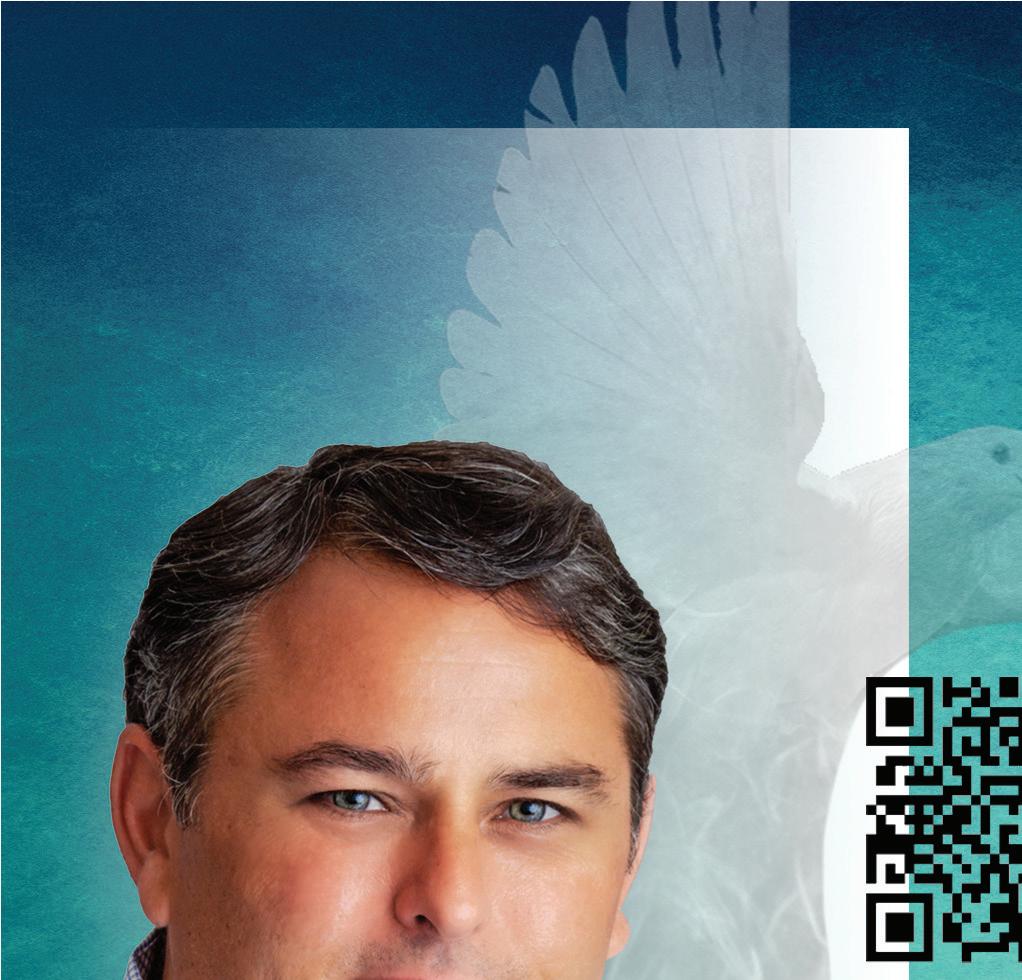
Allowing AI to do its job gives you the flexibility or the freedom to express your creativity and your critical thinking because you don’t have to consolidate all the data before you make decisions.
ED SNIFFEN, Director, Hawai‘i Department of Transportation
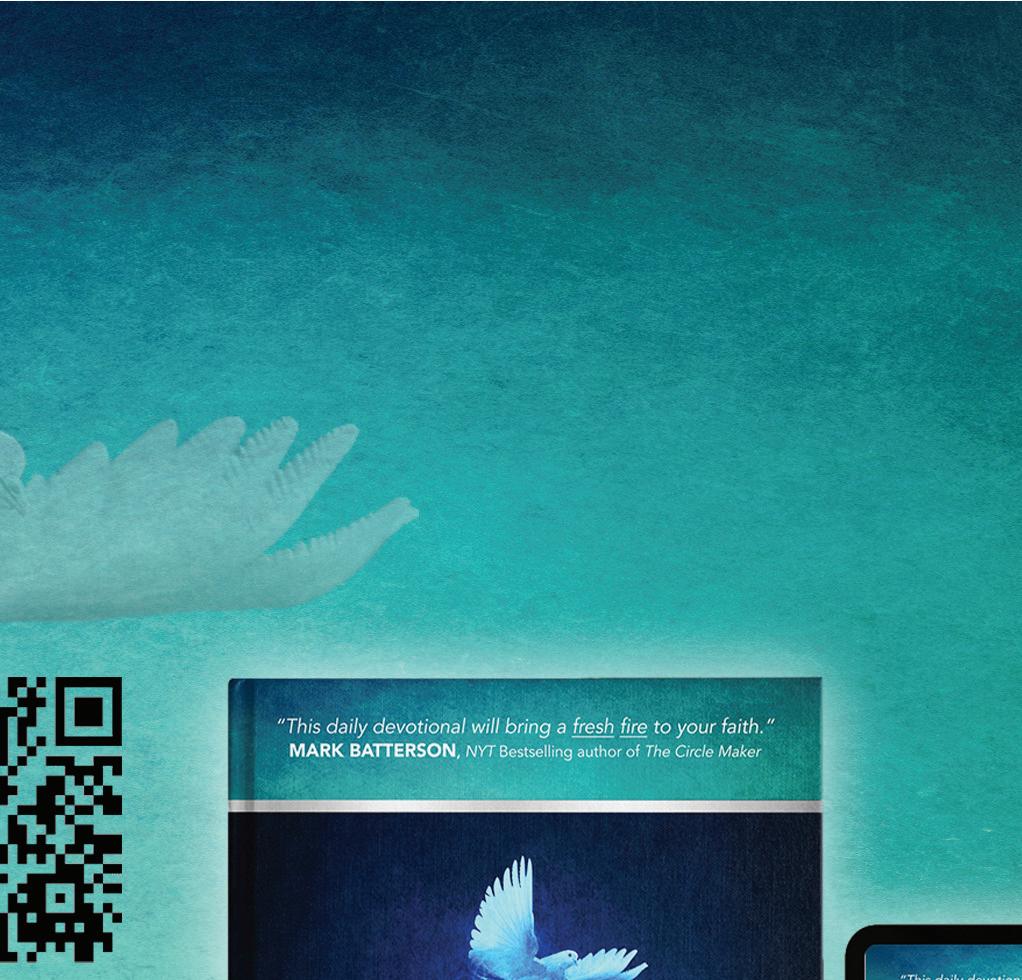





HAWAII BUSINESS 65
//
RANKIN: Is a connection over social media not personal?
PETRANIK: It is a di erent form of connection. So do you see AI creating di erent forms of personal connections?
KITAJIMA: I would say it would undermine the connections we grew up with, but not the connections that are forming now. It changes the dynamics.
I’ve been working in Korea for many years, where you have a rapidly aging population. Millions of seniors live alone, and the government is responsible for them now because their families are not taking care of them. So they’re developing AI companions that seniors can converse with. On the back end, it’s ChatGPT and voice activated. They’re having conversations with these systems because they’re lonely.
There’s further value in that because I learned as my father was aging, that if you don’t use your voice and vocal cords, you start losing your ability to swallow and will have problems choking. So there are so many opportunities for AI to help us live longer and be more engaged.
CONCHING: There are senior centers across the country that are using this sort of AI therapy. While it’s not medically certified, they’re using it so elder patients have a pseudo human connection.
There are many possibilities: Imagine teachers speaking in their native language to learners who speak a different language, but AI translates in real time. That allows a human connection, not only on a personal scale, but on a global level.
PETRANIK: Another question from the students: If AI
Ian Kitajima, left, says AI provides lonely seniors with conversational partners, which has psychological and medical benefits. Steve Petranik is at right.
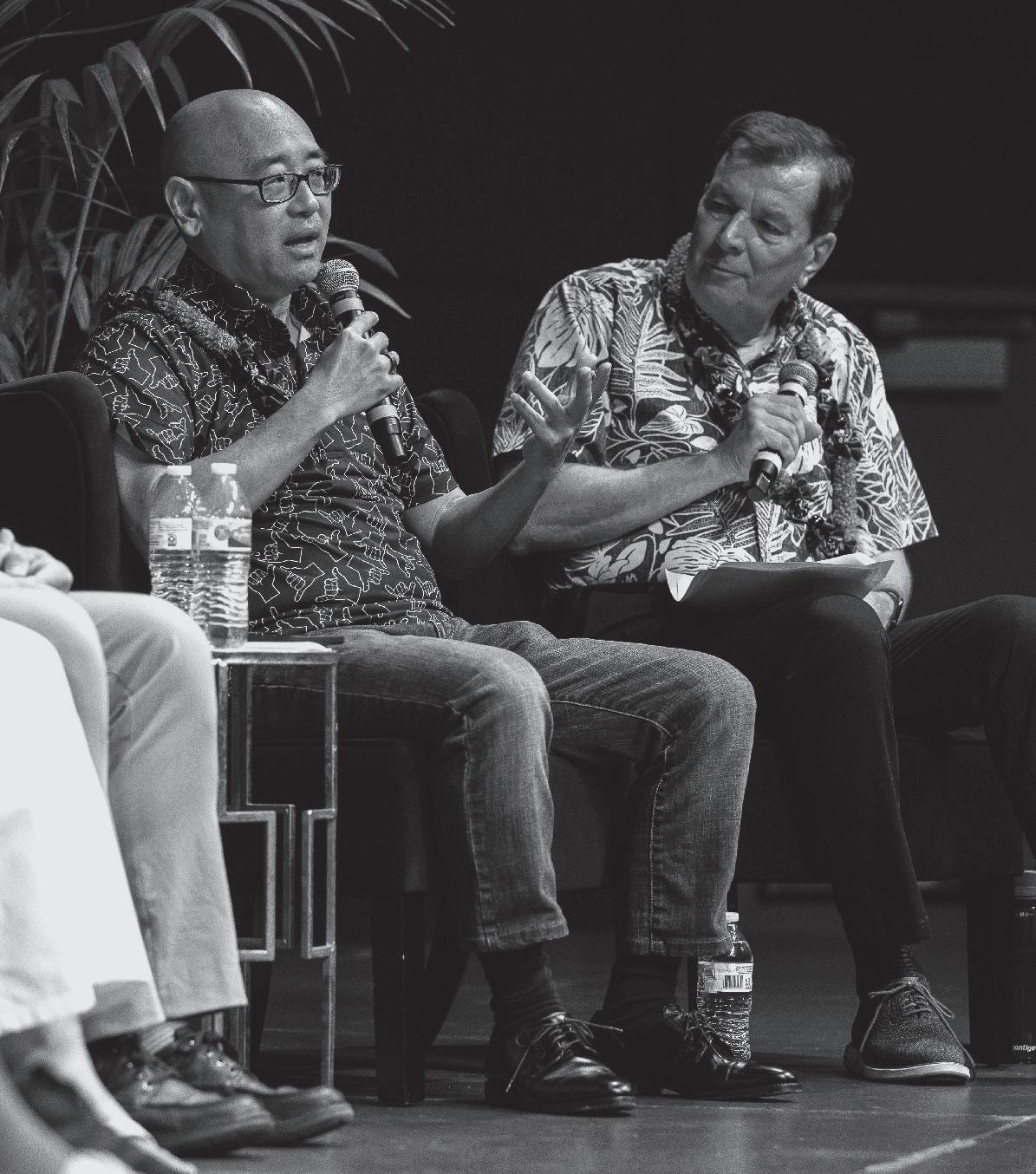
takes information and images from many sources, does that count as plagiarism? Does it count as copyright violation?
HINES: One of the things I appreciate about Bing is that when it gives you an answer, it also cites resources it used.
RANKIN: This is where we run into the problem of the black box. If it’s a neural network, with multiple hidden layers, you cannot look back into it. It’s not like a decision tree where I can go back in the model and see exactly why it made this decision or what source it used, which is why it’s important to understand what data it was trained on. That’s a place you could start. But it’s tricky. You would never know with 100% accuracy –the way you could with like a non-neural network – what feature it used to come up with that answer.
CONCHING: Coming from the creative field, it’s an exciting time – with these generative AI models that can produce hyper-realistic images. And now there are new tools generating text to video. Now they look bad, this is the worst it’s ever going to be. Next month, it could be really good. But there needs to be a human element added.
PETRANIK: Do you think artists will be pushed by AI to be more unique and di erent, because AI works of art are created from what was done before.
CONCHING: 100%. I feel AI tools do a good job of getting us part way there. In my company, it helps us brainstorm ideas that maybe we wouldn’t have had perspectives on or experience with. Then we build on those initial ideas to help us create something new for our clients. Those initial AI generated concepts are a super helpful tool.
66 OCTOBER 2023






HAWAII BUSINESS 67
PETRANIK: Last question is about practical advice and tools. What’s available now that ordinary people can use?
KITAJIMA: I have the paid version, ChatGPT Plus ($20 a month for individuals). I’ll get large documents, like RFPs (requests for proposal) that are 50 pages long but without much of a summary. I’ll upload the document and ChatGPT can summarize the file in simple terms and
provide highlights in 60 seconds. It saves me a tremendous amount of time.
HINES: Our students taught me that when I sign up for a service and there’s like 13 pages of terms and conditions, give it to ChatGPT and it gives me a summary that’s easier to diagnose.




















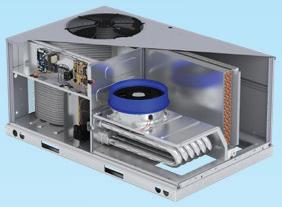






























I blew up my ACL in March and got the first report from the MRI – it was 13 pages and impossible to understand. I asked ChatGPT to summarize it. Just be careful about giving your personal information.
















Carrier’s commercial HVAC units have been awarded best in class by the industry’s leading experts.* With the most efficient chiller technology, innovative BACnet® intelligent automation controls, and Product of the Year awards, we’re setting a higher standard. To find the right solution for you, call us today. Our

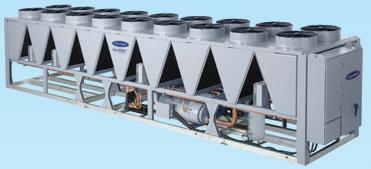
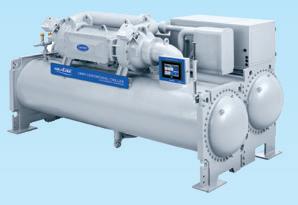
The third one I do all the time: I’ll look in my refrigerator and see I’ve got six ingredients. So I tell that to a related app called ChefGPT and say that I want, say, Asian-influenced food, and it spits out recipes.
CONCHING: I love it, ChefGPT. There’s something I use more and more: a free app on my iPhone called Pi. It’s designed to be friendlier and more empathetic than most large language models. I used it on my drive to Mid-Pacific today to help me prepare for this discussion. I said, “I’m taking part in this discussion and here are questions that will be asked of me,” and I had an actual voice conversation with what’s almost like a real human person.
So if you have to give a speech and need feedback on it, or if you are having trouble writing a text to a friend, it’ll recommend text for you that is generally friendlier and more empathetic than other tools like ChatGPT.
I like that it sounds like I’m talking to a real person – a back and forth conversation – and it will recall what I said 10, 20 minutes ago. Super helpful in helping me have these in-depth, thoughtful conversations.
68 OCTOBER 2023
environmentally
HVACs turn
into gold. *19MV: 2023 Gold Product of the Year, Consulting-Specifying Engineer Magazine, 2022 Commercial Comfort Product of the Year, Engineered Systems Magazine. EcoBlue: 2019 Silver Product of the Year, Consulting-Specifying Engineer Magazine, 2019 Money Saving Product, Building Magazine. AquaEdge® 19DV: 2020 Money Saving Product, Building Magazine, H&V News, 2020 Award Winner, Gold Product of the Year Award 2019, ConsultingSpecifying Engineer Magazine. AquaForce® 30XV Weather Series RTUs with EcoBlueTM Technology 19DV AquaEdge® AquaEdge® 19MV Locally owned distributor: Carrier Hawaii Kapolei Honolulu Kahului Kailua-Kona (808) 677-6339 • CarrierHawaii.com Matsumoto & Clapperton Advertising Date: 7.12.23 ©2023 Carrier. All Rights Reserved. 23-CAR-0211 Green Into Gold HB.indd 1 8/7/23 2:54 PM
money-saving
responsible
green
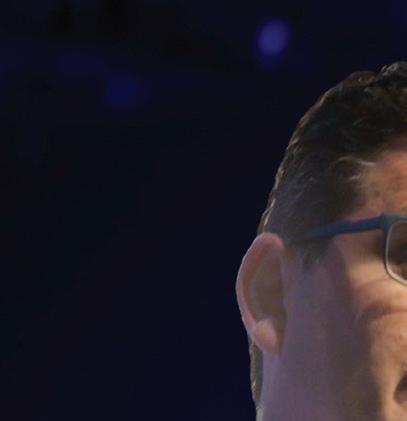



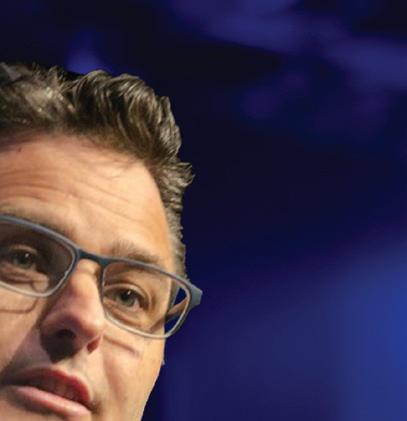

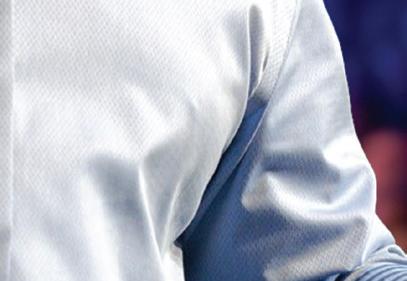

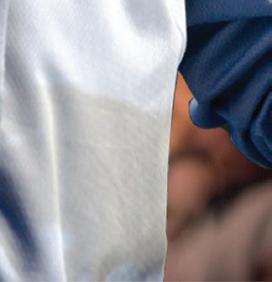







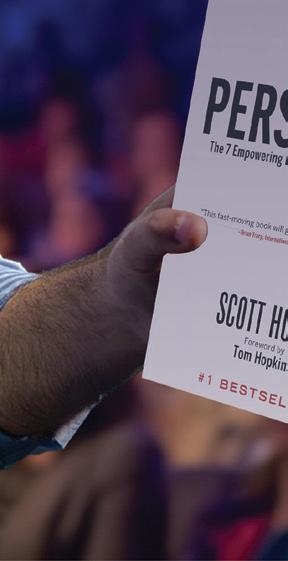








Sign up for the 2O24 Best Places to Work Survey! DEADLINE TO REGISTER OCTOBER 2O, 2O23 TO REGISTER, VISIT BESTPLACESTOWORKHAWAII.COM HAWAII BUSINESS 69 Sign up for the 2O24 Best Places to Work Survey! DEADLINE TO REGISTER OCTOBER 2O, 2O23 TO REGISTER, VISIT BESTPLACESTOWORKHAWAII.COM Proudly Presents Guest Speaker Bestselling Author and President of iHeart Media Honolulu SCOTT HOGLE DISCOVER, DEVELOP, & DELIVER A WINNING MESSAGE! OCTOBER 17TH, 2023 | 5:30 – 8PM AT DAVE & BUSTER’S TICKETS $49 IN ADVANCE $59 AT THE DOOR SMEHONOLULU.ORG/EVENTS DELICIOUS PUPUS! BEER, WINE & COCKTAILS - THE FIRST TWO ARE ON US!
A BLACK BOOK EVENT
CONNECTING HAWAI‘I’S
TOP 250 LEADERS WITH TOMORROW’S LEADERS
On Friday, August 25, Hawaii Business Magazine hosted an exclusive event with the leaders of the Top 250 companies and rising leaders in our community. It was held in the IBM Building lānai and courtyard, a relaxed setting that let these executives meet old friends, cultivate new connections, strengthen relationships and accelerate positive change for Hawai‘i’s future.
Mahalo to our attendees and sponsors for making our event a great success!
MAHALO TO OUR SPONSORS
PRESENTED BY:


GOLD SPONSOR: VENUE SPONSOR:

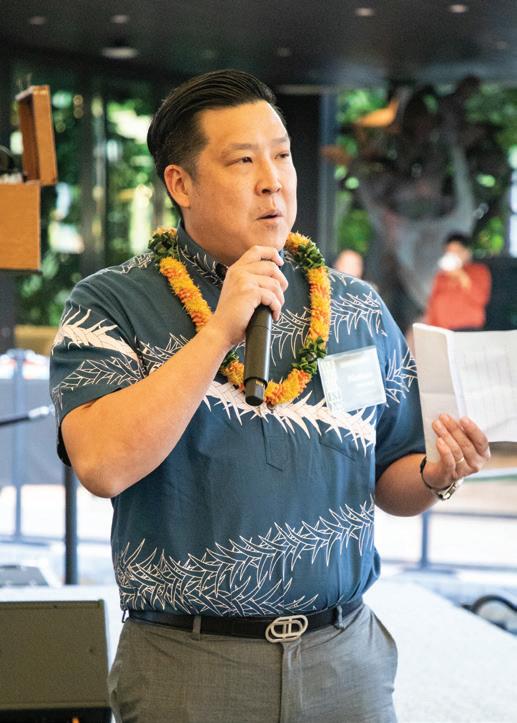



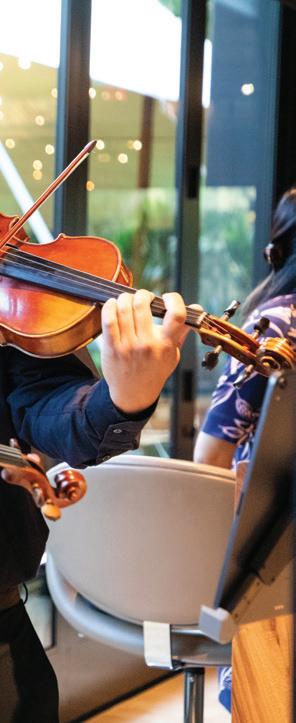
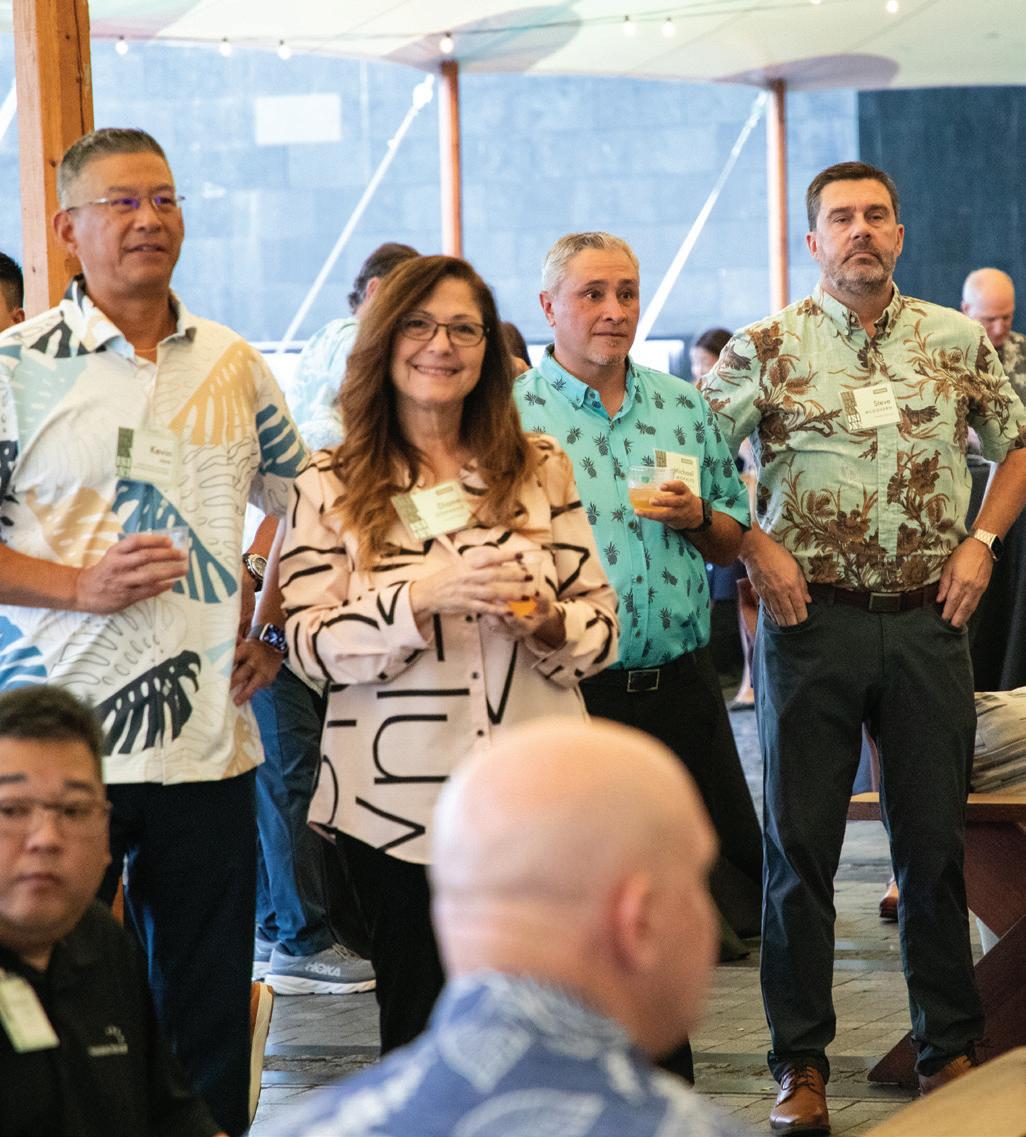

“Cades Schutte is honored to sponsor Merging Visions for the sixth consecutive year. The clear message that came through at the event was one of support for the people of Maui, and as Hawai‘i’s top companies and leaders have done through the years, combining our best talents to help in whatever ways we can. Thank you to Hawaii Business Magazine and our co-presenting sponsor, Central Pacific Bank, for providing this space for us to gather, recognize our community leaders, and collaborate.”
— MICHELE S. LOUDERMILK, PARTNER, CADES SCHUTTE
“Central Pacific Bank was proud to be co-presenting sponsor of the Merging Visions event, which held even more meaning as we think of our friends and family on Maui. Hawai‘i is a very special community and we always pull together for one another, which is critically important today. Great things happen when great leaders join together. That’s because true visions come to fruition through collaboration. I look forward to seeing all that comes from Merging Visions.”
— DIANE MURAKAMI, EXECUTIVE VICE PRESIDENT, COMMERCIAL MARKETS, CENTRAL PACIFIC BANK
“Merging Visions was a great opportunity to connect with other local leaders to discuss issues and events that are impacting our state, and how we can work together to overcome challenges and support each other.”
—
MICHAEL
MORALES, VICE PRESIDENT, ENTERPRISE SALES, HAWAIIAN TELCOM

Lost in the Lahaina Fire: A New Affordable Housing Complex
The development company that used low-income housing tax credits to build the 89-unit apartment building hopes to rebuild.
BY JANIS MAGIN MEIERDIERCKS
Among the thousands of homes, condos and apartments in Lahaina that were damaged or destroyed by deadly wildfires was a threestory apartment building that opened less than a year ago to 89 local families.
Kaiāulu o Kupuohi opened in December with 20 one-bedroom, 34 two-bedroom and 35 three-bedroom apartments for families that earn less than 60% of the area median income, which equals $48,660 for a single person and $69,480 for a family of four. The wildfire destroyed the 9-month-old building, one of the few places on Maui a local family could reasonably a ord to rent.
72 OCTOBER 2023 MAUI WILDFIRES
PHOTO: COURTESY OF MAUI COUNTY

Maui had already been called the epicenter of Hawai‘i’s housing crisis. On this tourism-dependent island, where more than 38% of the island’s workers staff the hotels, restaurants and activity companies that cater to Maui’s nearly 3 million visitors each year, 53.7% of residents pay more than 30% of their incomes on rents or mortgages. The median prices for single-family homes and condominiums so far this year are $1.15 million and $840,000, respectively.
Before the fires, Lahaina had a little more than 3,600 occupied housing units, according to census data. Over the weekend, the Federal Emergency Management Agency and Pacific Disaster Agency released maps showing 86%

of the 2,207 structures in Lahaina that were damaged or destroyed were residential and that the area may have lost more than half of its housing.
Even before the fire, housing was extremely expensive. The median price of a single-family home in Lahaina this year through the end of July was $1.9 million, while the median for a condo was $865,000. And many of the lost homes and apartments were rentals –less than half of Lahaina’s housing was owner-occupied. Hundreds of vacation rentals were also destroyed by the fire.
BUILT WITH TAX CREDITS
Kaiāulu o Kupuohi, the new four-story affordable rental building on Kupuohi Street in the Lahaina Business Park, collapsed Tuesday night when winds from Hurricane Dora whipped a brush fire into an inferno that leveled nearly all of the historic seaside town of Lahaina.
The building had been constructed with the aid of low-income housing tax credits, which are crucial for communities like Maui where modest incomes compared to the cost of construction make housing “unobtainable for many without subsidies,” says Douglas Bigley of Ikaika Ohana, which partnered with Urban Housing Communities and Hunt Capital Partners to build the project.
“While it is true that people from off-island buy up homes and crowd locals out of the market – even if there was no land cost, the cost to construct
would far exceed what many locals could rent or buy,” he says. “The problem is not hard to understand but the solution is complicated.”
Bigley says his team is now working to locate the families who lived at Kaiāulu o Kupuohi and help them with their critical needs. He says anyone who has located tenants should call the management company, ThirtyOne50, at 808-466-0554. And the Realtors Association of Maui said in a Facebook post that it’s working to connect people left homeless by the fires with others who have homes available or space in their homes.
Ikaika Ohana has a second project in Lahaina, a 200-unit affordable property called Kaiāulu o Kūku‘ia under construction that suffered moderate damage from wind but was not affected by the fire. Bigley says his group is now looking to expedite completion of that project.
He says his team is also developing a strategy to rebuild Kaiāulu o Kupuohi and is looking to expedite the zoning, permitting and other needed entitlements to build other properties in the area. Ikaika Ohana has two other affordable housing developments on Maui, both in Kīhei, as well as projects on O‘ahu and Hawai‘i Island.
“The fire was a terrible loss, especially for those who grew up in Lahaina,” Bigley says. “It will take time to move beyond the sudden shock of it all, but we are committed to doing our part.”
HAWAII BUSINESS 73
PHOTO: COURTESY OF IKAIKA OHANA
Kaiāulu o Kupuohi opened in December 2022 for people making less than 60% of the area median income. The Lahaina rental building was destroyed in the Aug. 8 wildfires.



Jewelry Created With 2,200 Degrees of Heat
BY CHAVONNIE RAMOS
ARLIE PEMBERTON’S COLLECTION OF GLASS JEWELRY features earrings, necklaces, rings and lei designed to look like flowers and lei made from puakenikeni, plumeria, pua kalaunu and other flowers.
“I deeply admire Hawai‘i’s culture and find endless inspiration in the act of making and giving of lei,” she says.
Pemberton is from Virginia but moved to Hawai‘i with her husband in 2016. They live on O‘ahu’s North Shore.
In college, she majored in photography and film but a flameworking course solidified
her interest in glass art. “I spent my entire senior year working in the glass studio every chance I got.”
Pemberton says she works with a Carlisle glass blowing torch that runs off a propane and oxygen mix and makes the 2,200−degree flame that she uses.
Her pieces are created with borosilicate, also known as Pyrex glass, that she melts and shapes in the flame using metal tools.
Her jewelry can be found at the Honolulu Museum of Art, Pua Hana in Kaimukī and at arlie-glass.com.
74 OCTOBER 2023 PARTING SHOT LOCATION: HALE‘IWA, O‘AHU PHOTOGRAPHER: AARON YOSHINO TIME: 10:00 A.M.

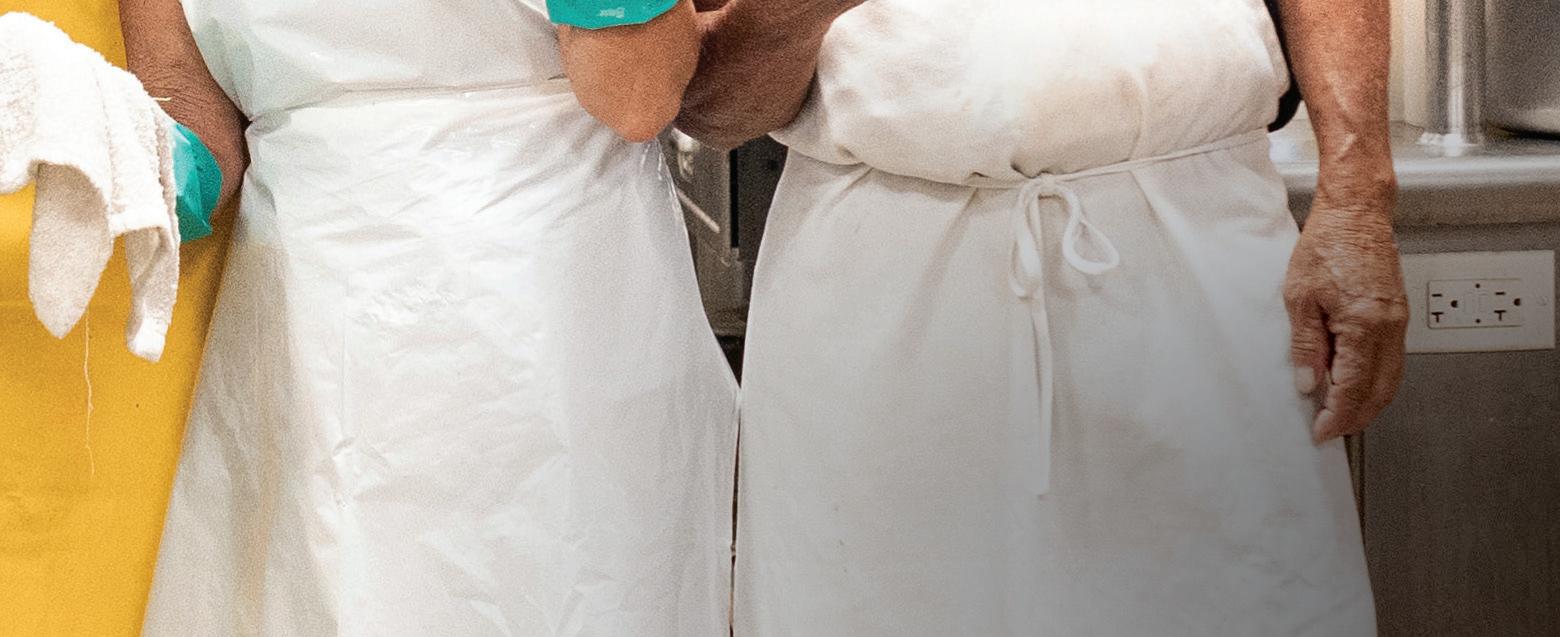
Mahalo to everyone for showing your aloha for Maui


Our sincere gratitude goes out to everyone supporting the people and places a ected by the devastating wildfires. So many of you are dropping everything to embrace your kuleana for one another, sharing your aloha when it is needed most.
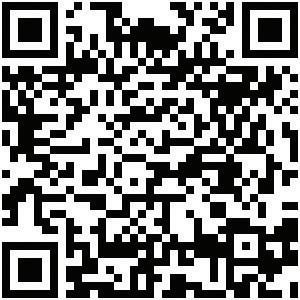
DONATE TO THE MAUI STRONG FUND
hawaiicommunityfoundation.org
Common Ground Collec ve Maui Strong Fund Grantee
HEMIC’s Family of

Companies

can do more for your business.

From general contractors, artisans, and architects to designers, home renovation specialists, and other building professionals, HEMIC has insurance solutions developed for the specific needs of Hawai‘i businesses. As a 100% local company, we manage all your insurance products under one roof with boots on the ground 24/7. And we serve you with both technical expertise and Aloha.
To learn more about the HEMIC Family of Companies and how we can help your business with risk management solutions tailored to your needs, visit HEMIC.com or call us at (808) 524-3642





































































































































































































































































































































































































































































































































 photography by AARON YOSHINO
photography by AARON YOSHINO






















































































